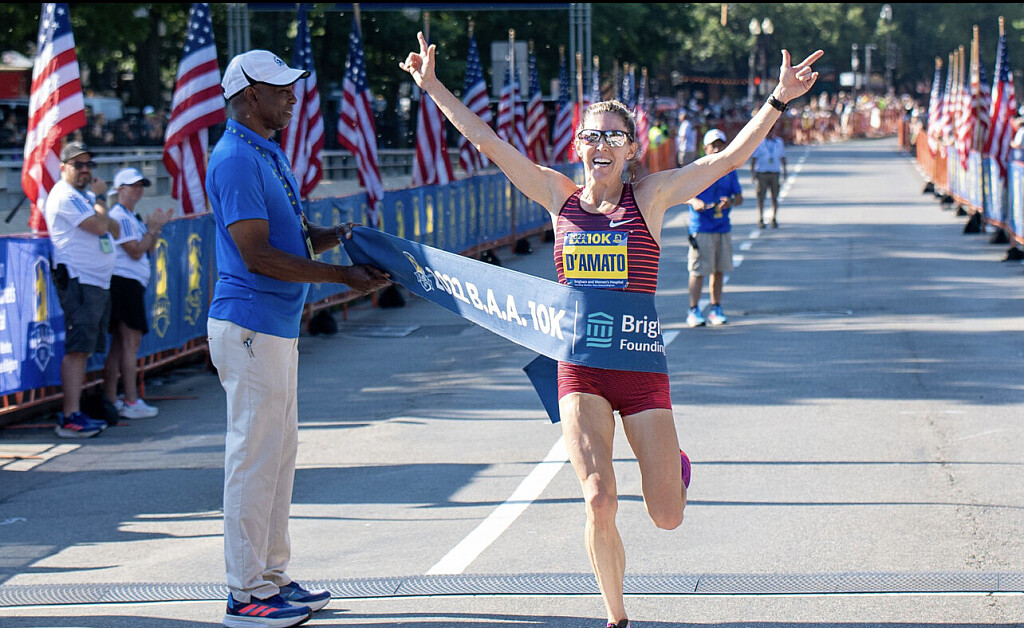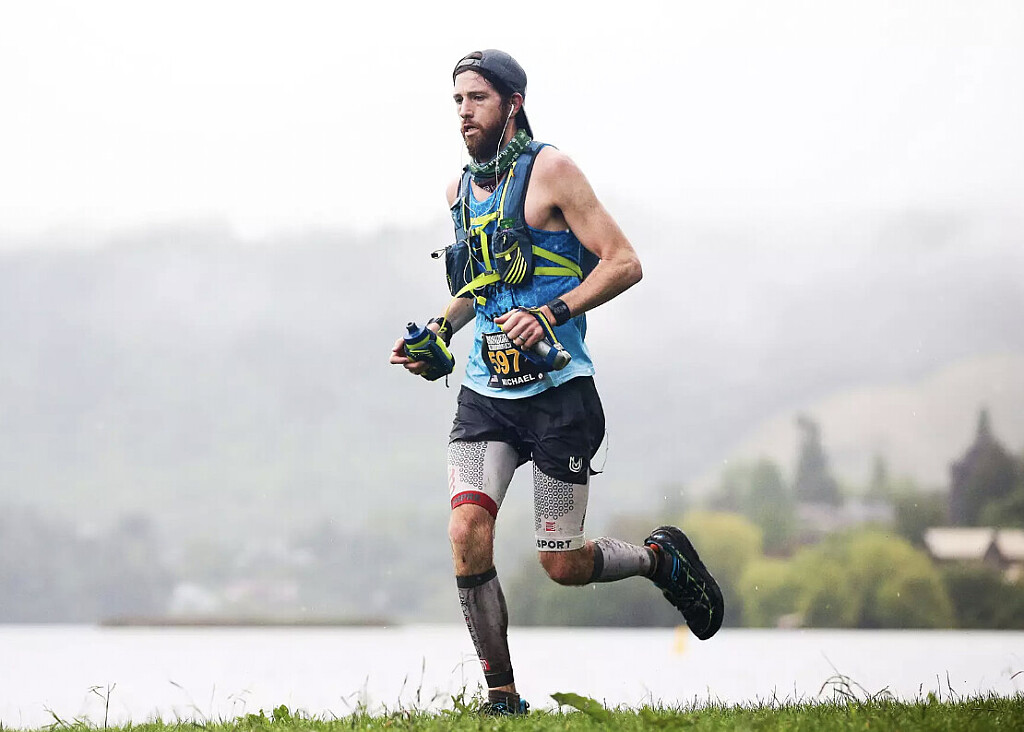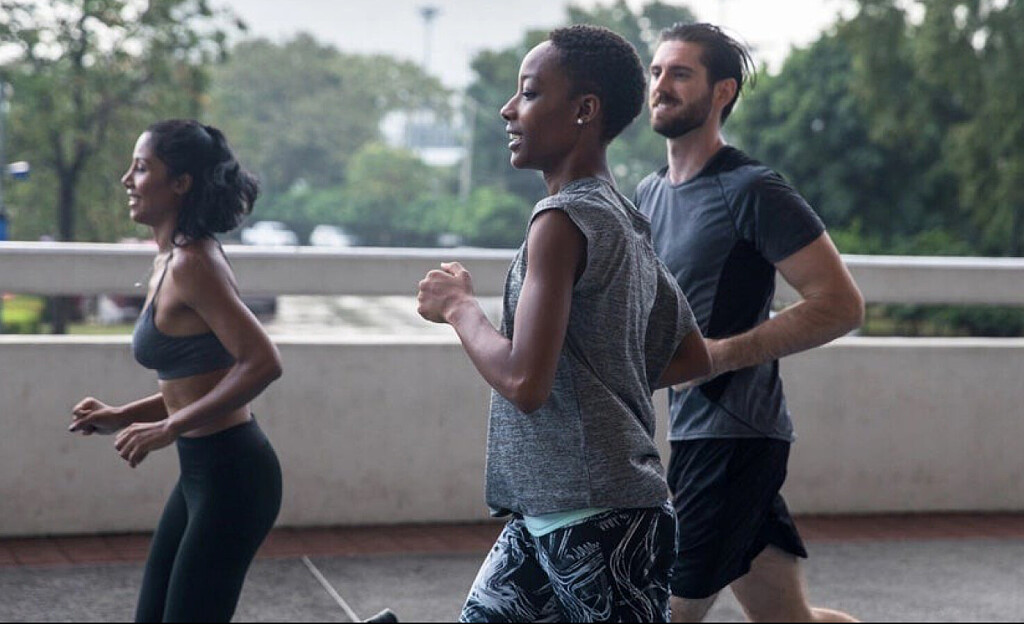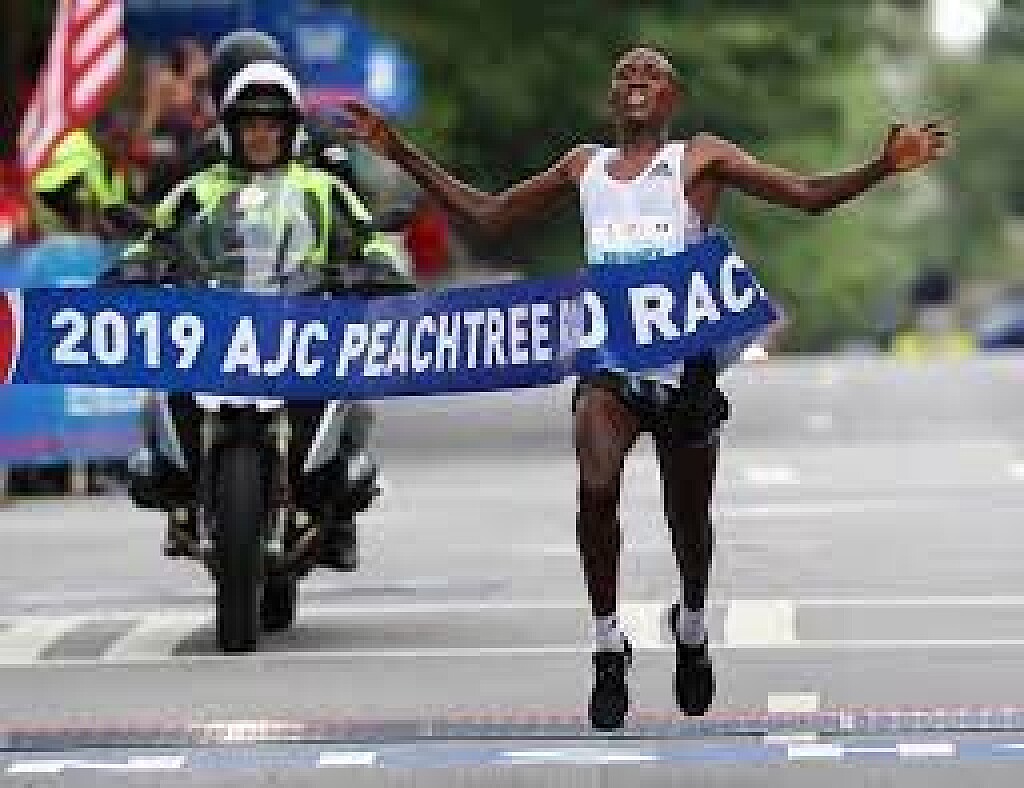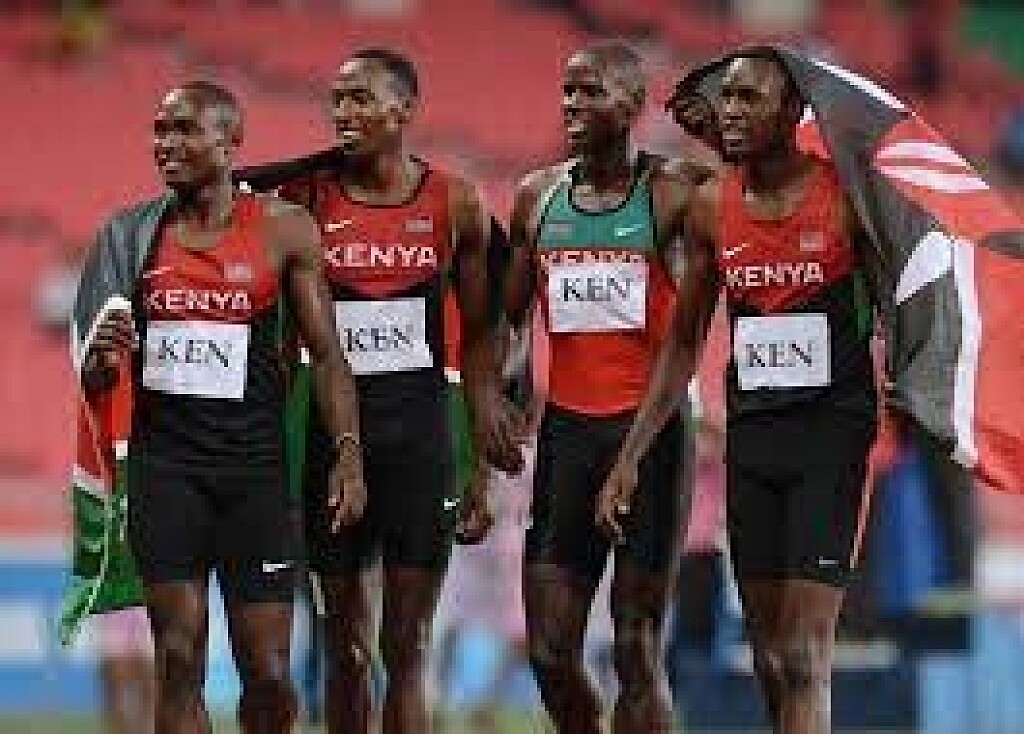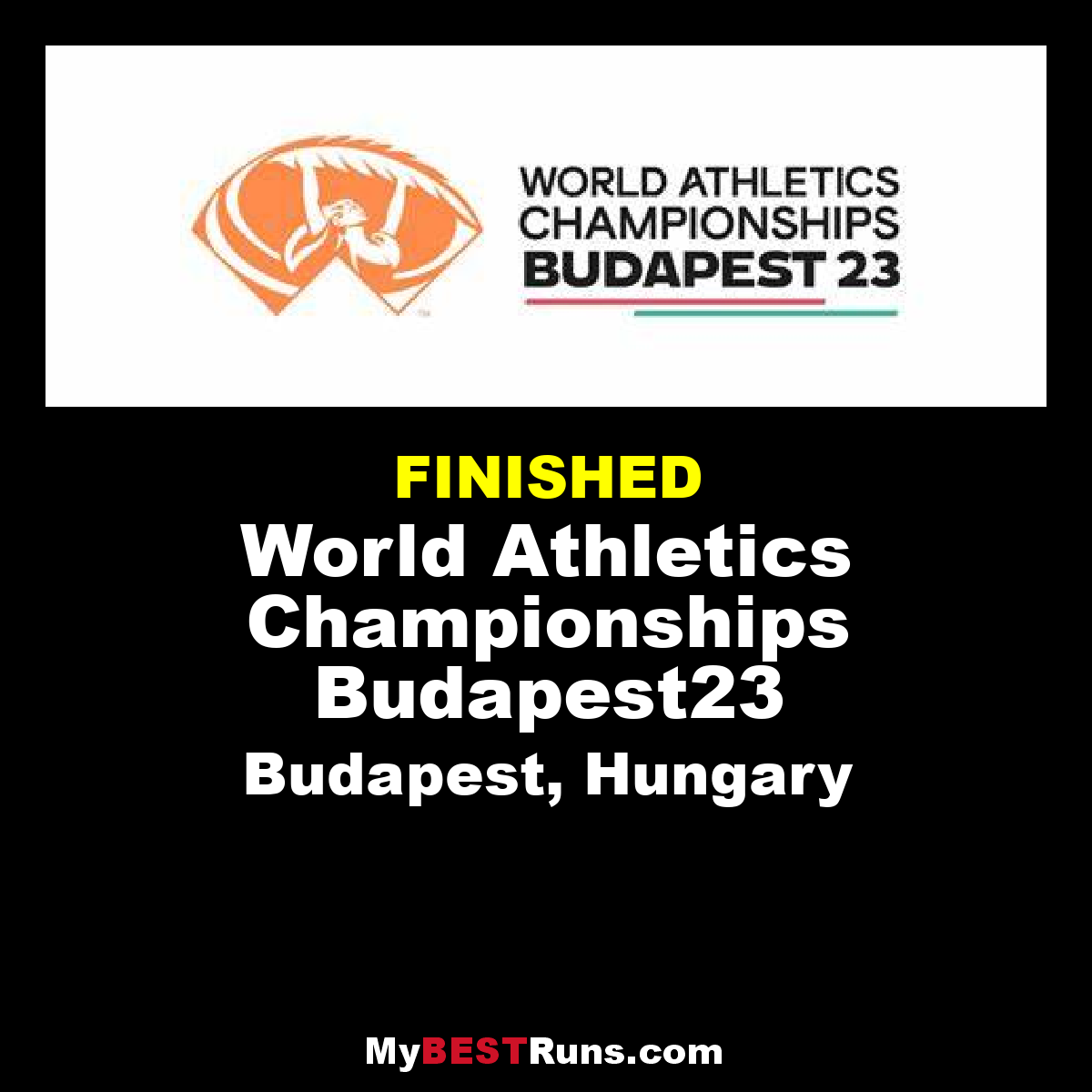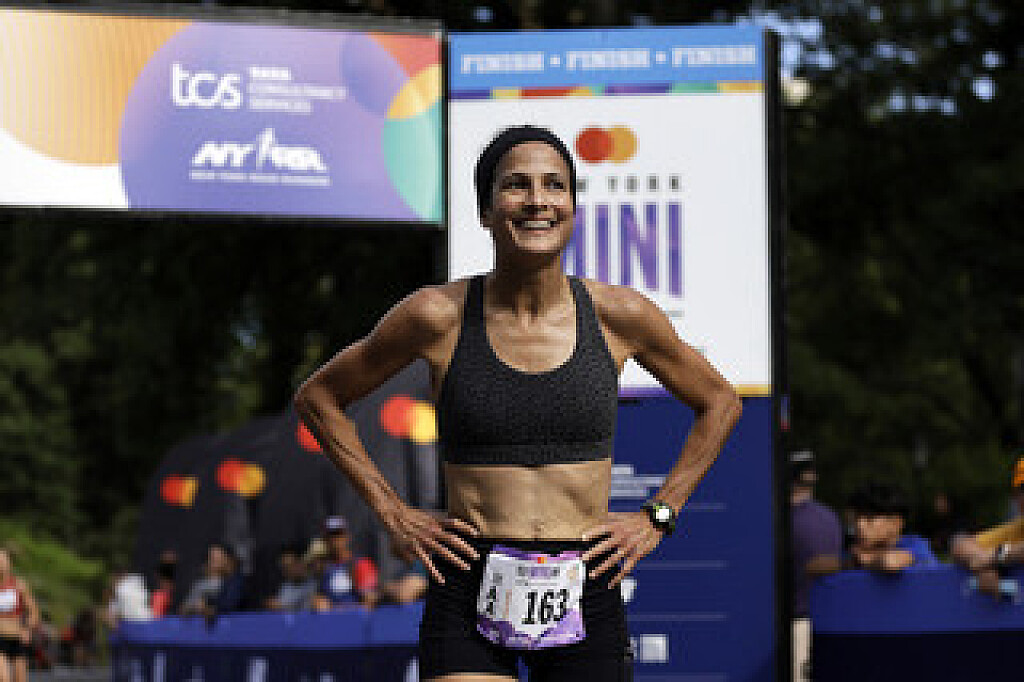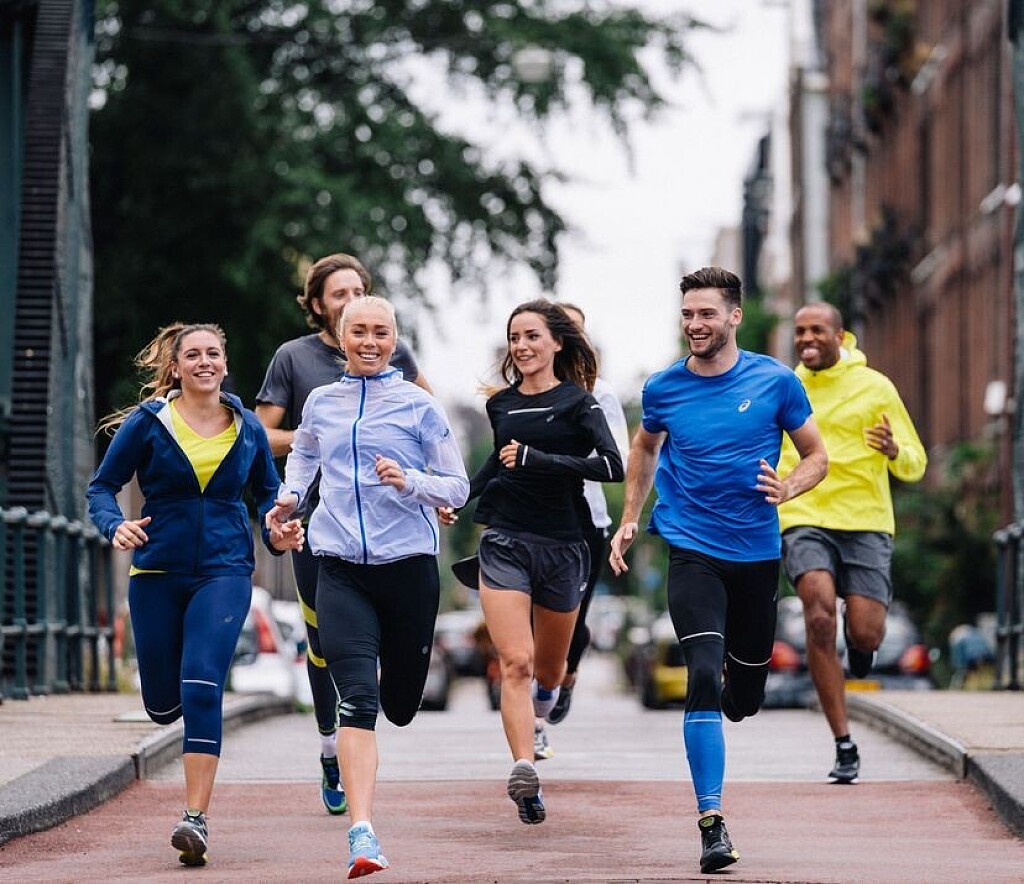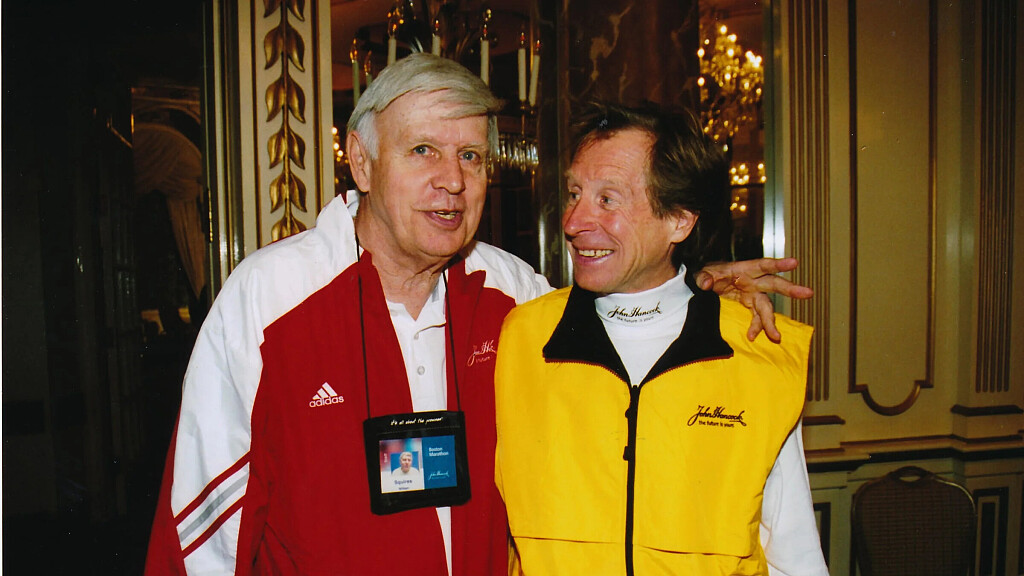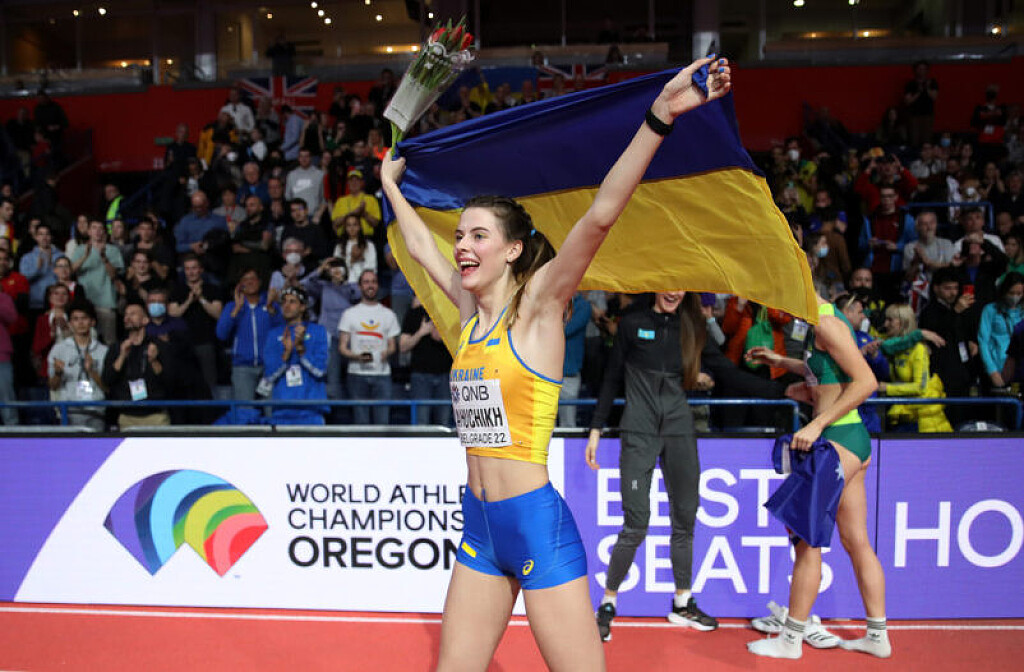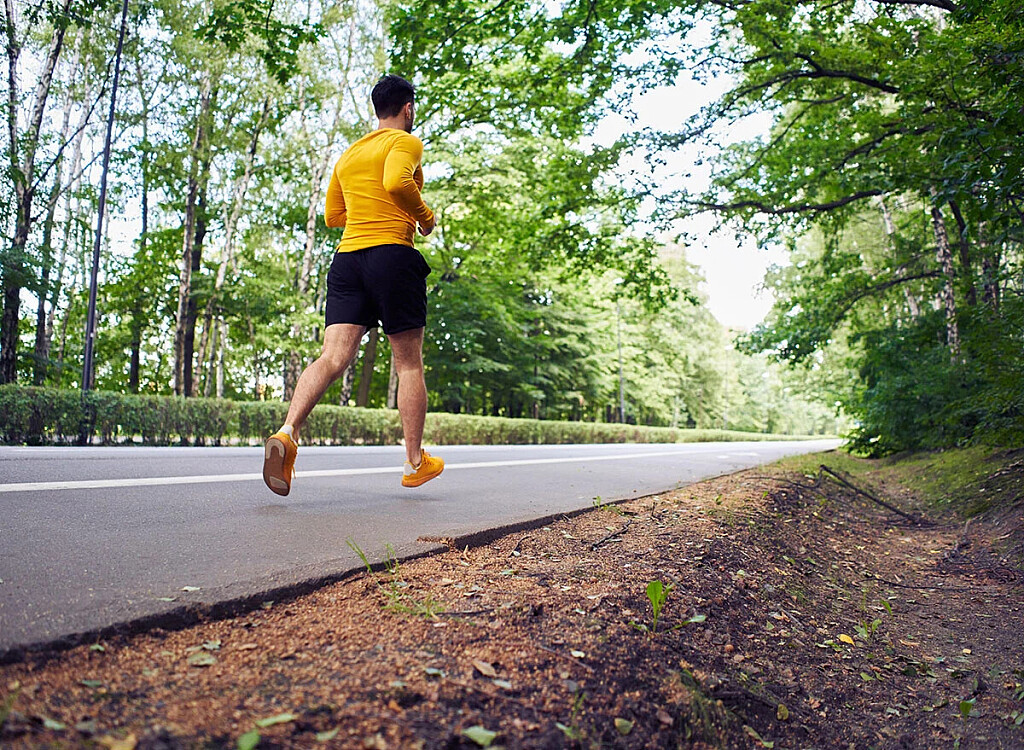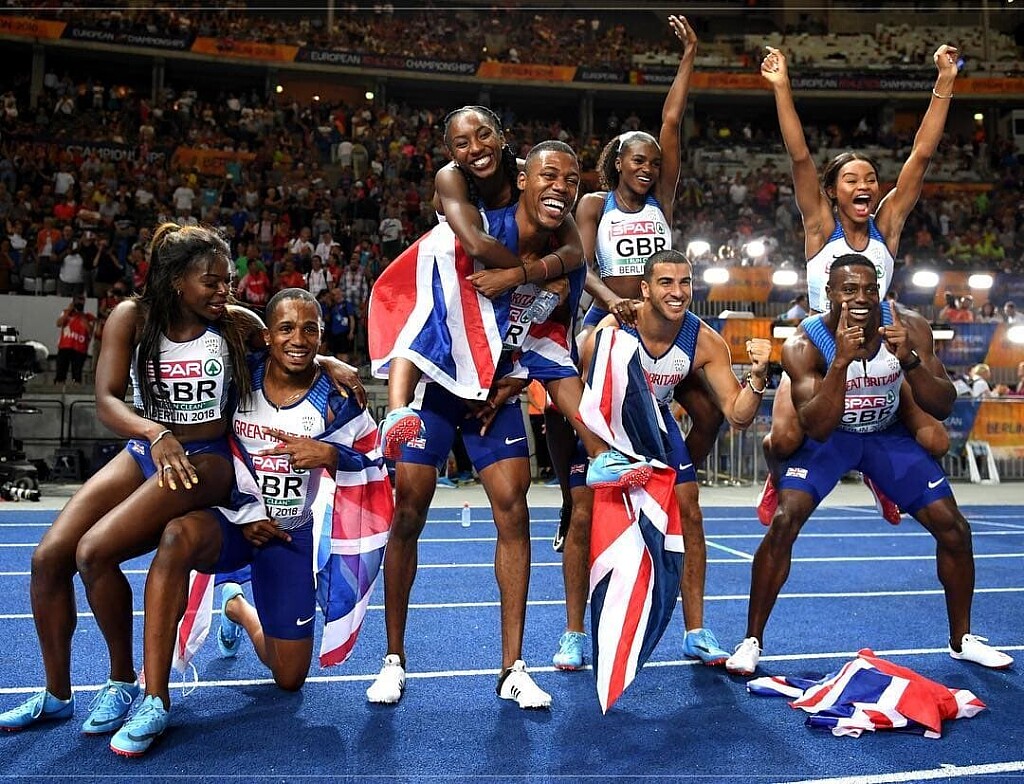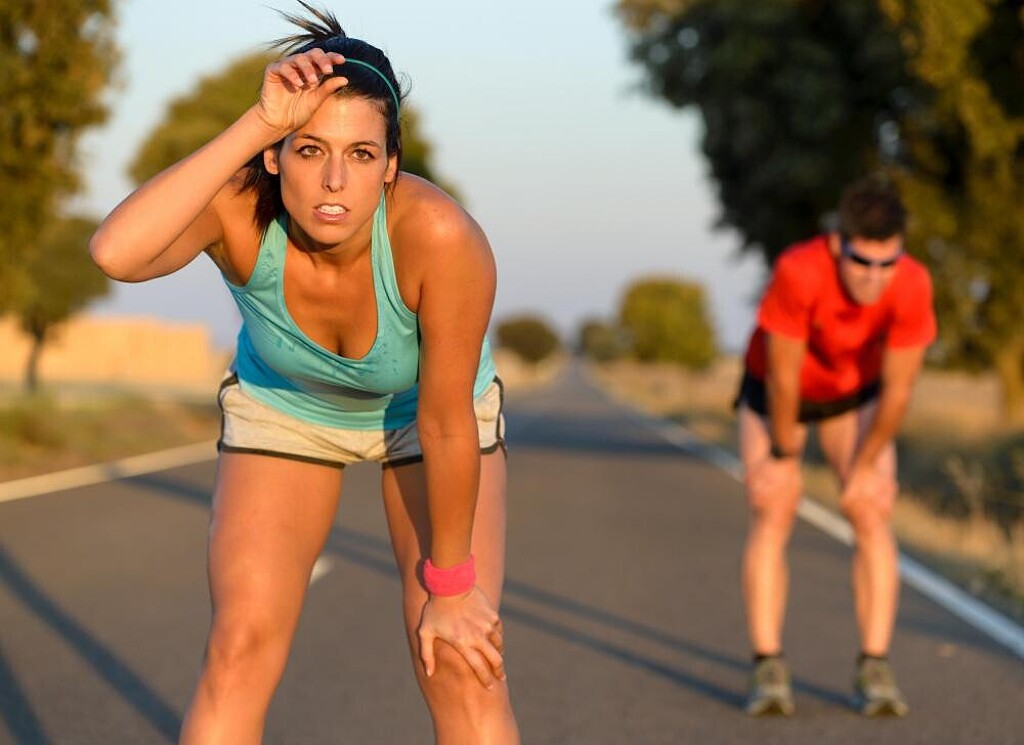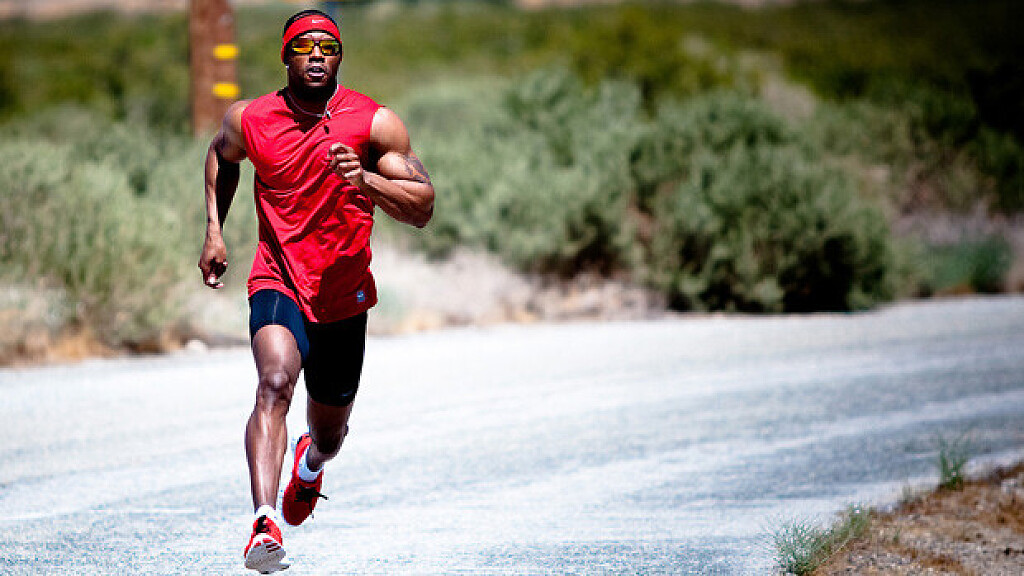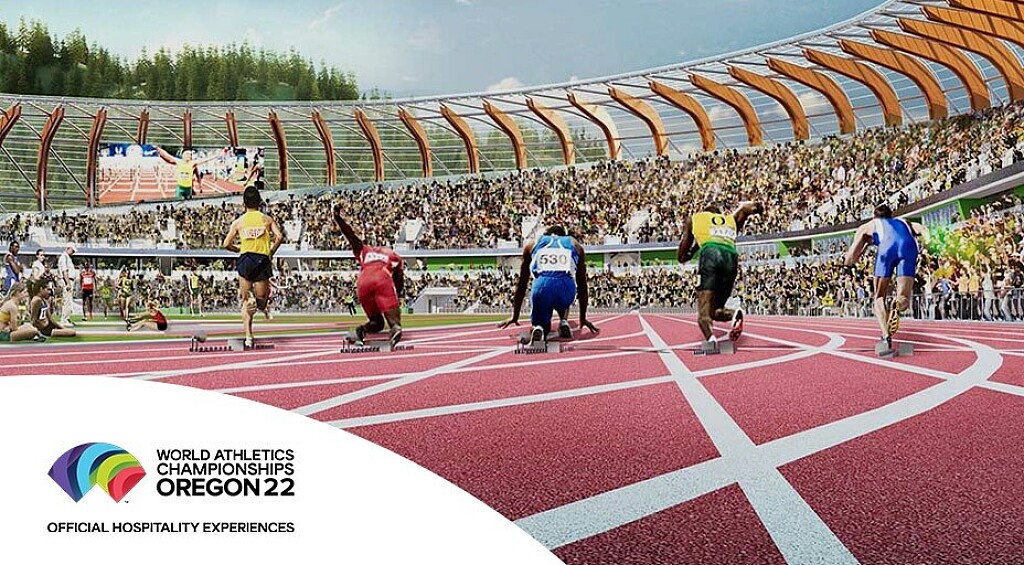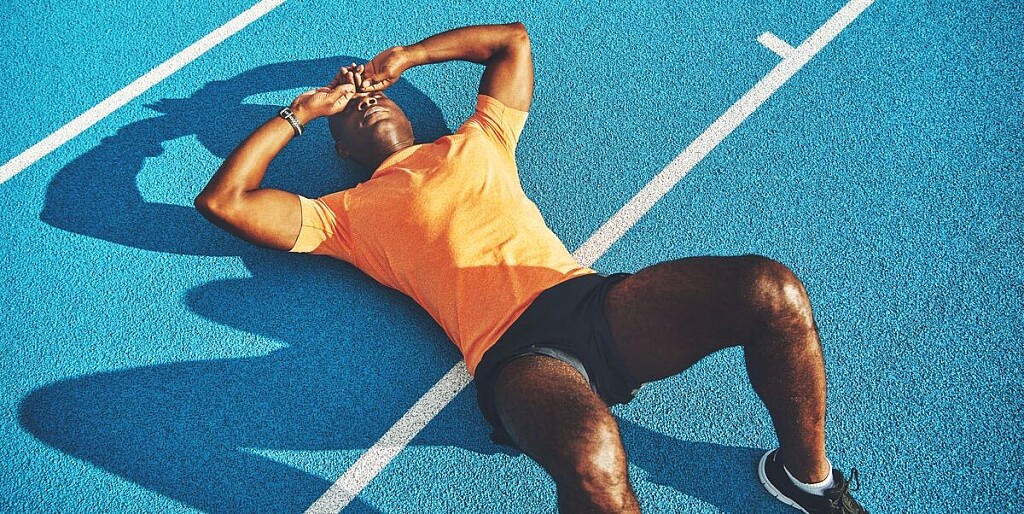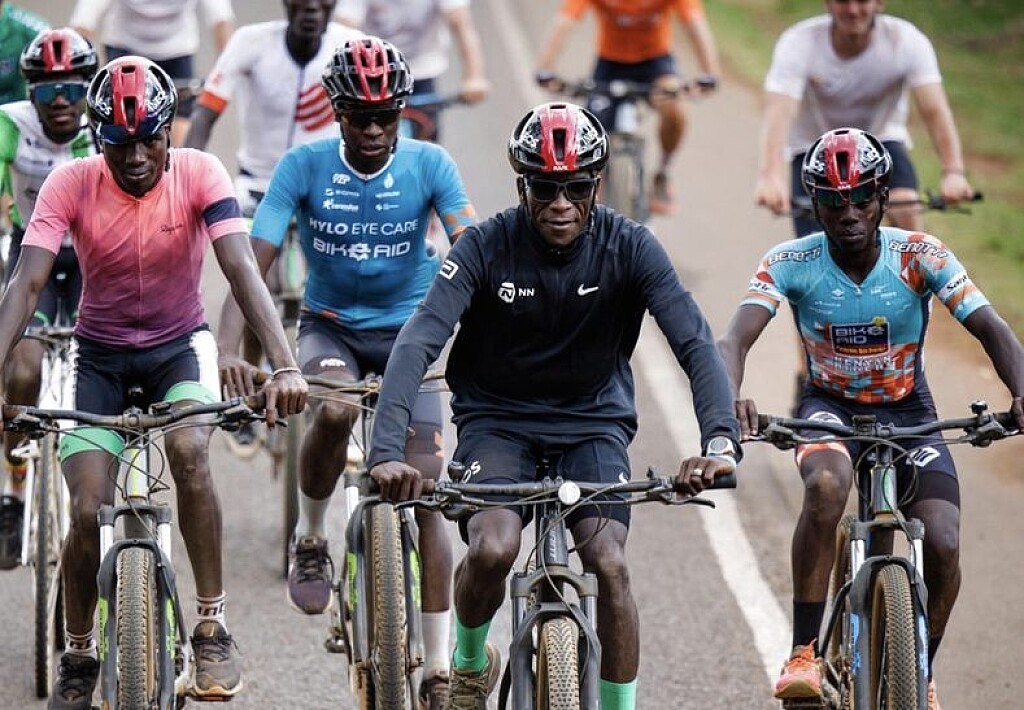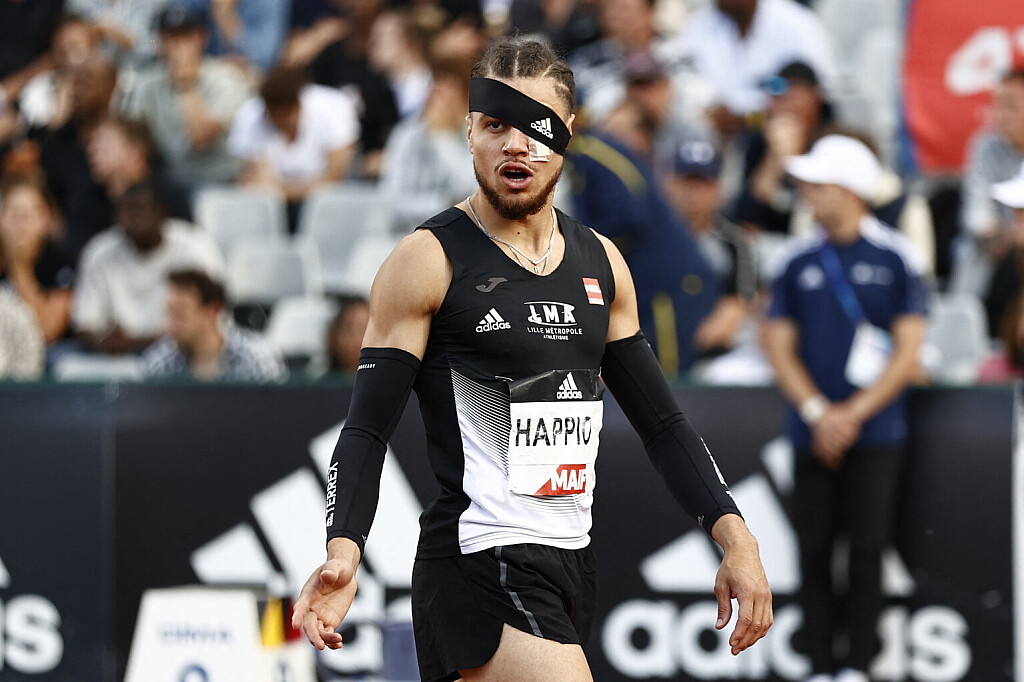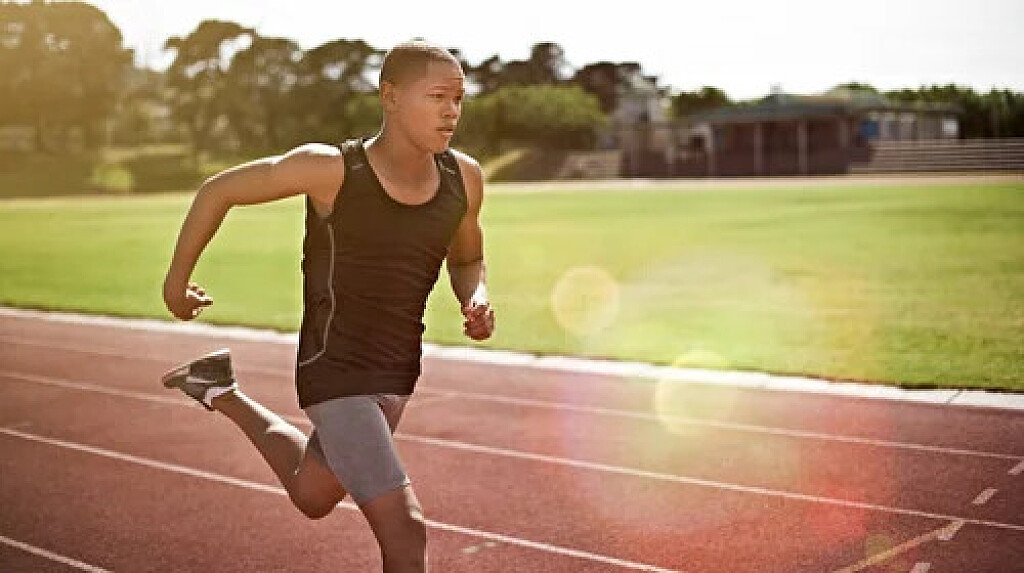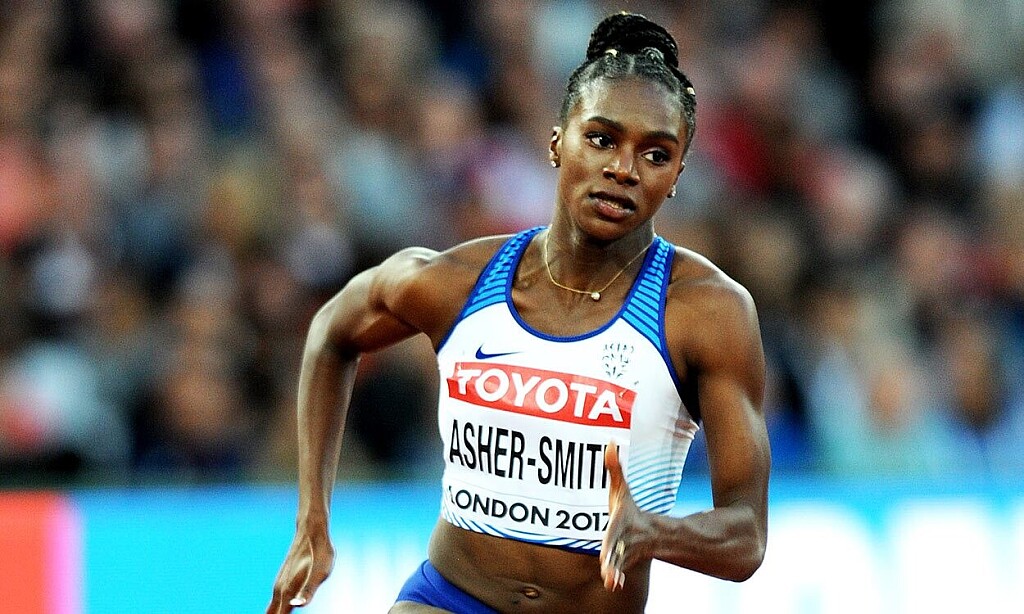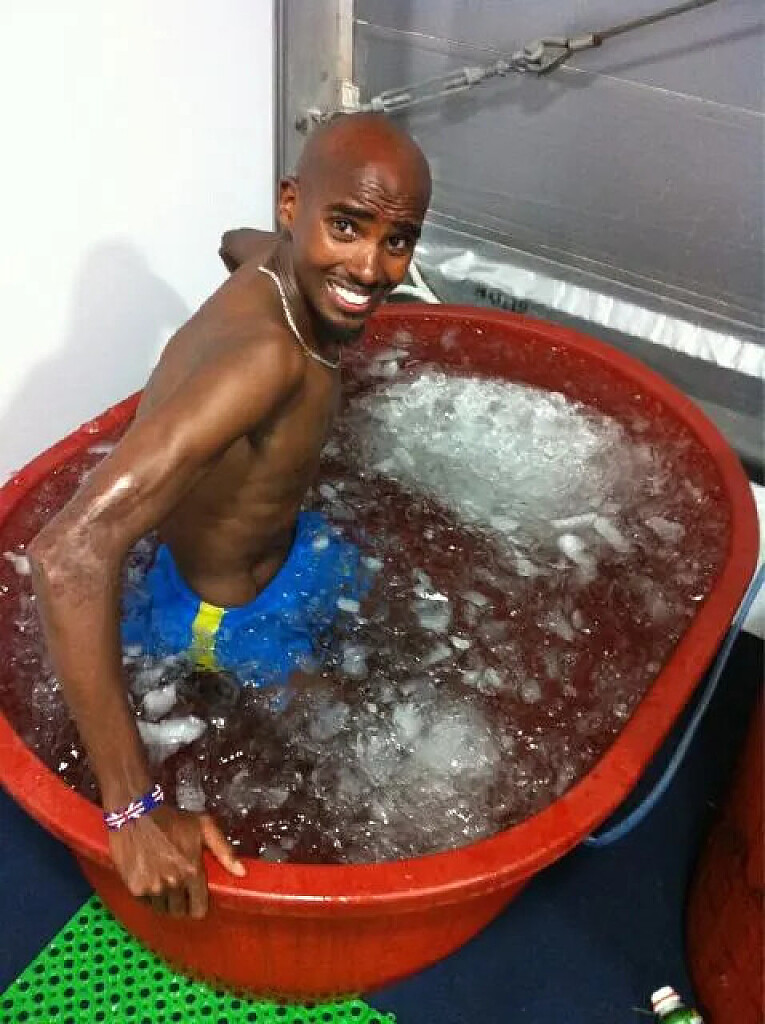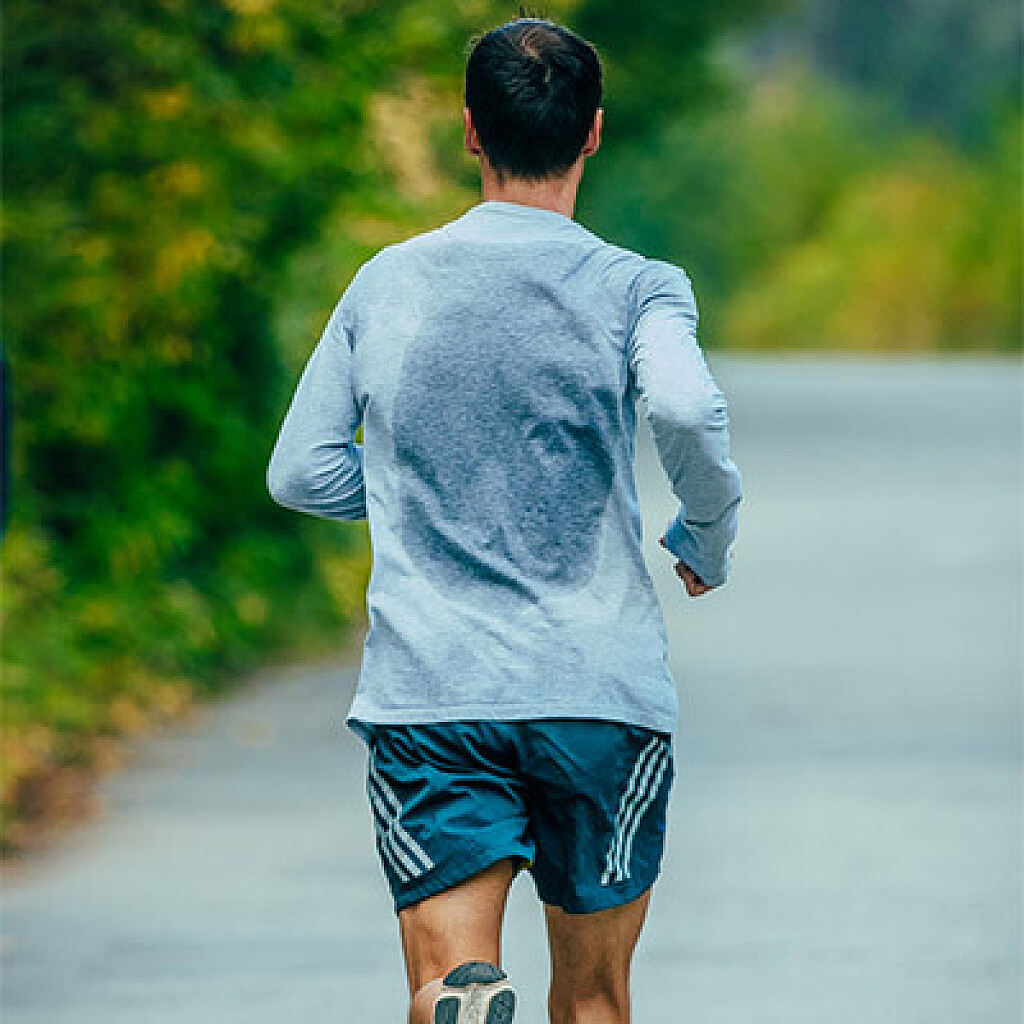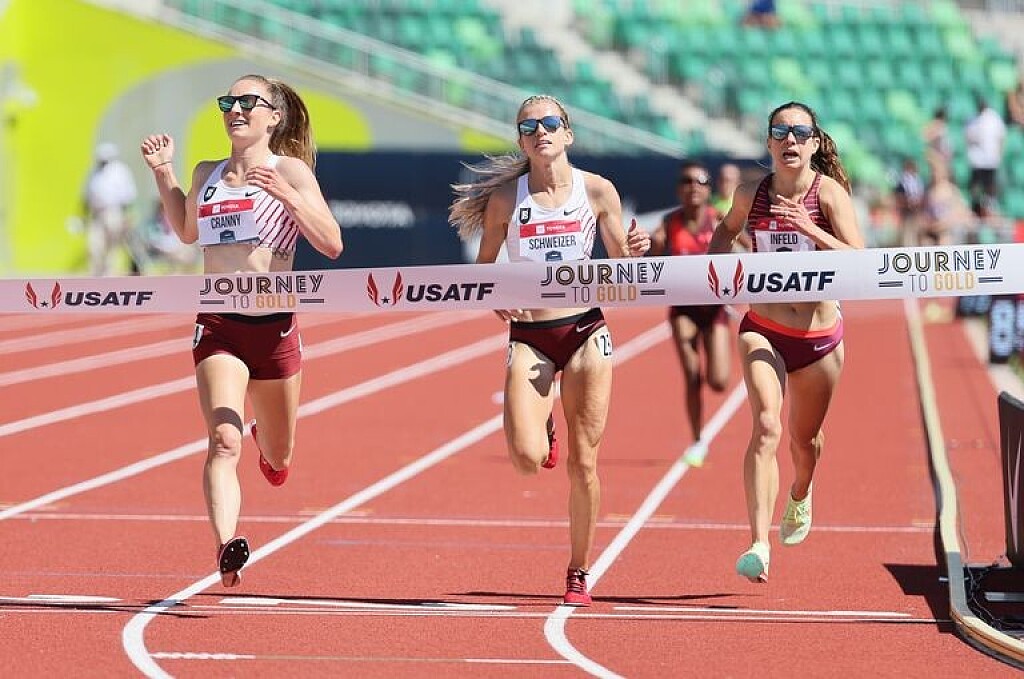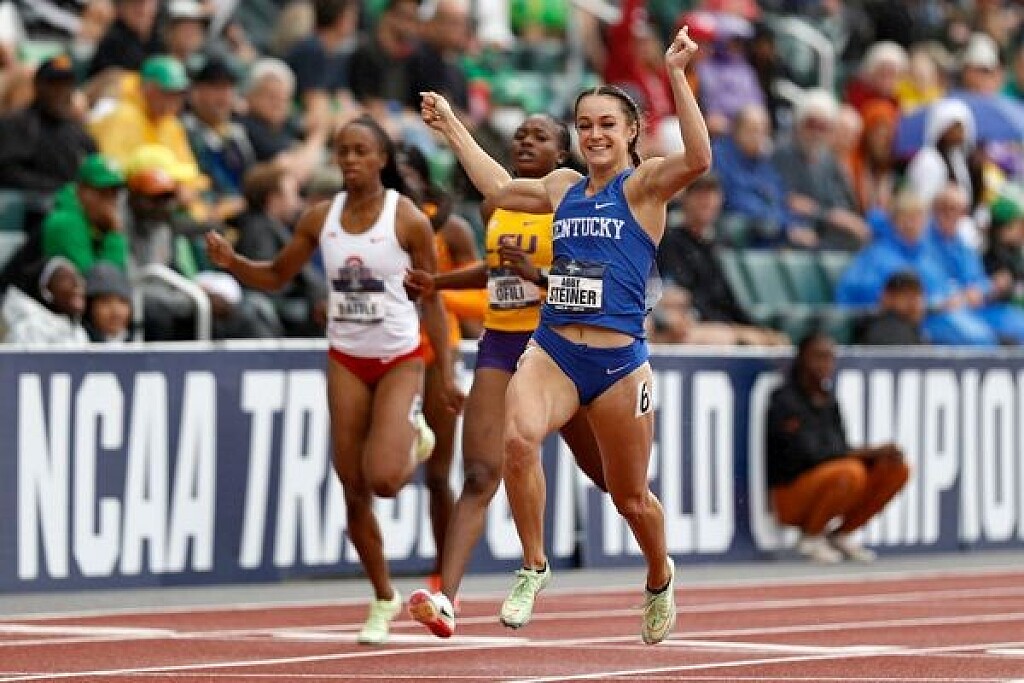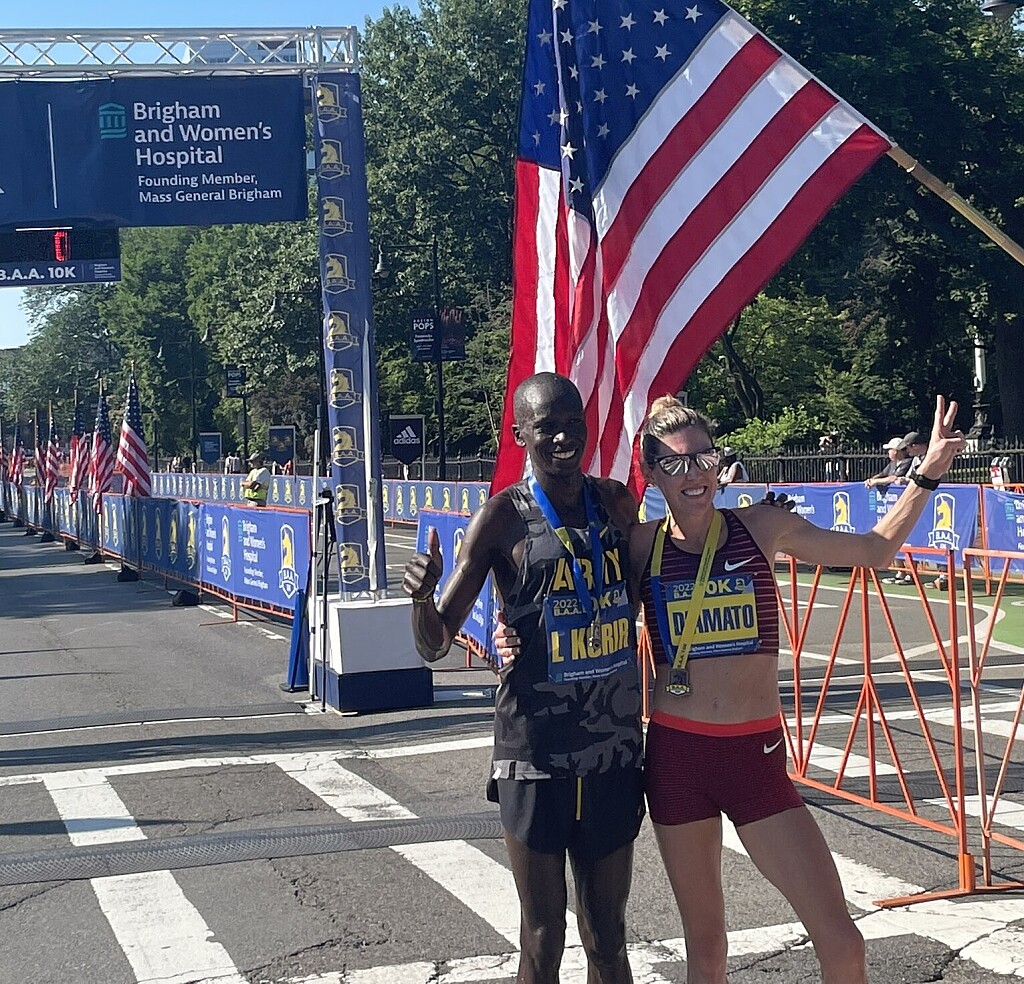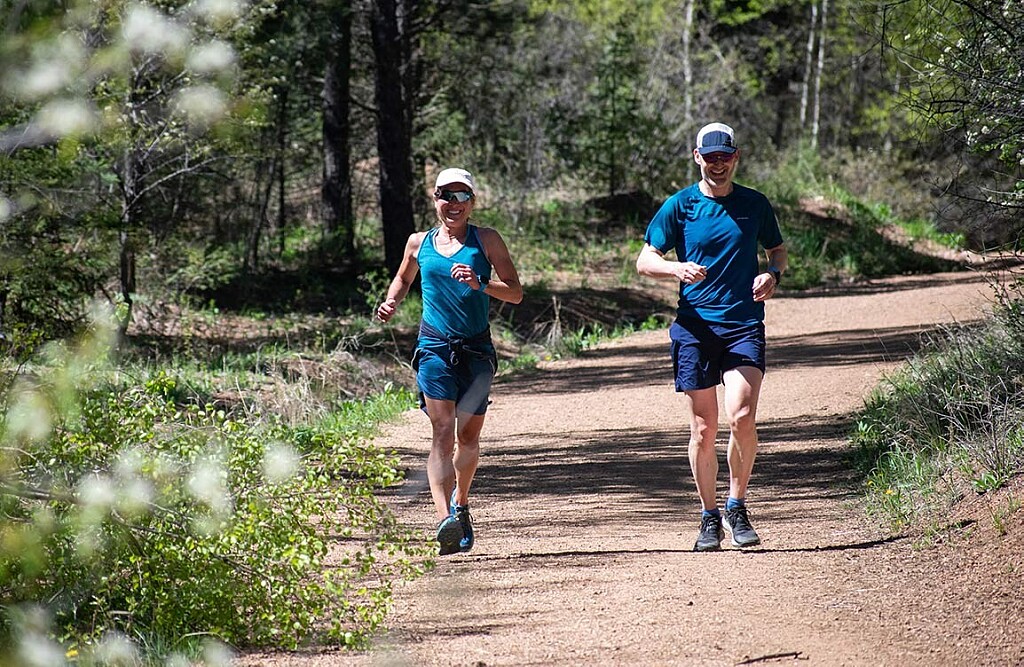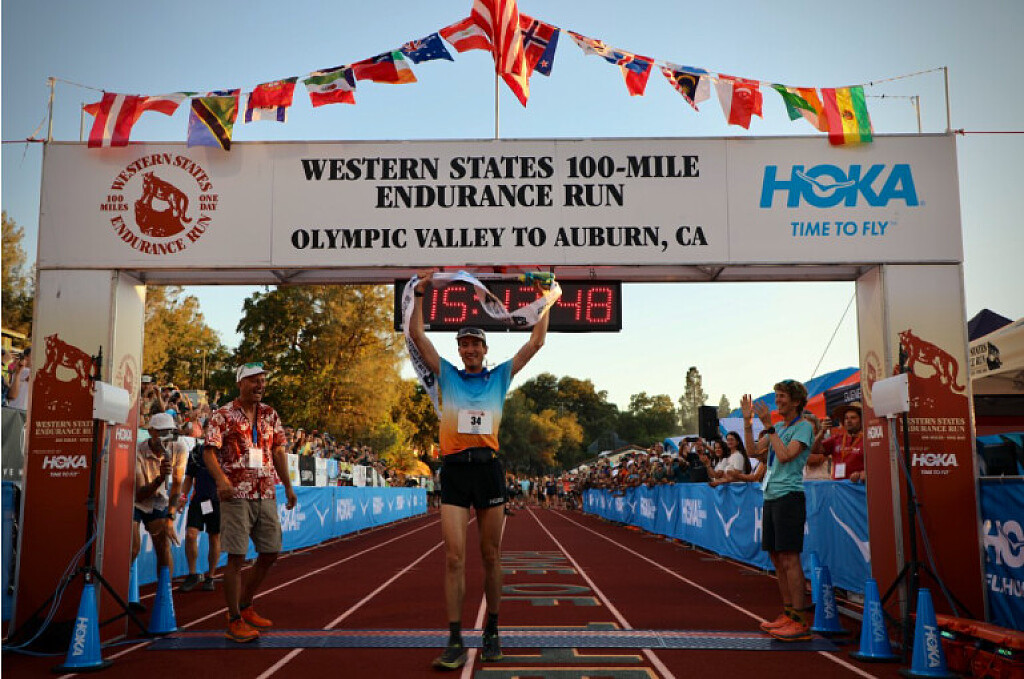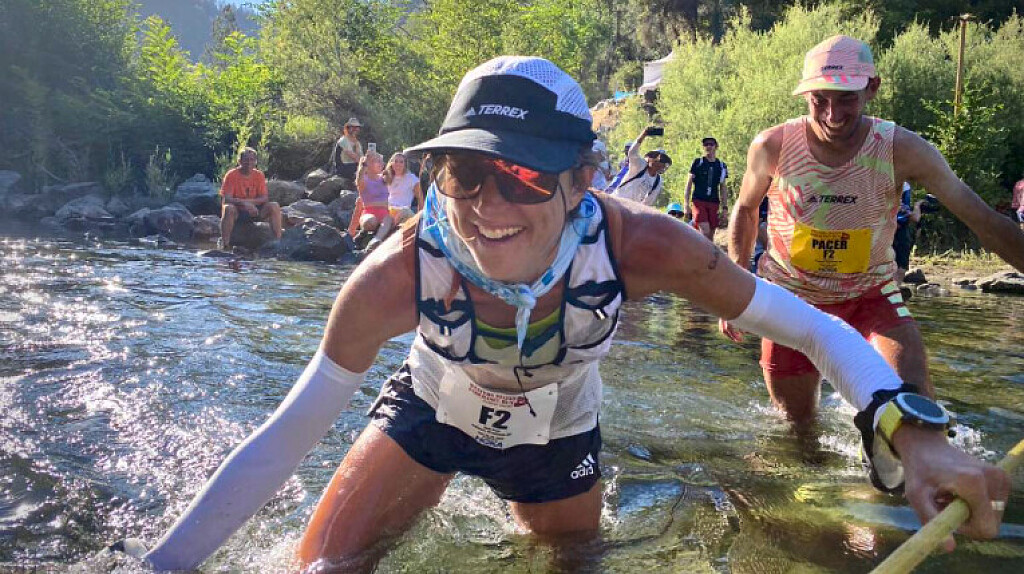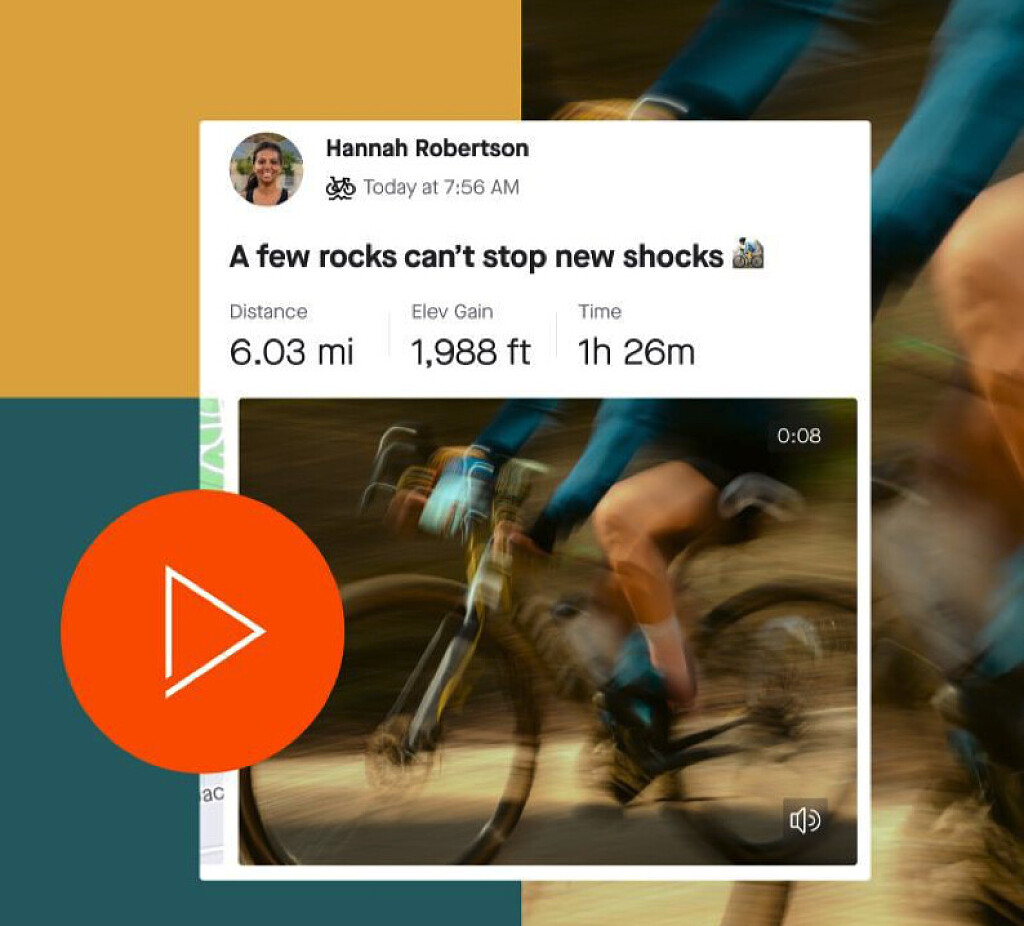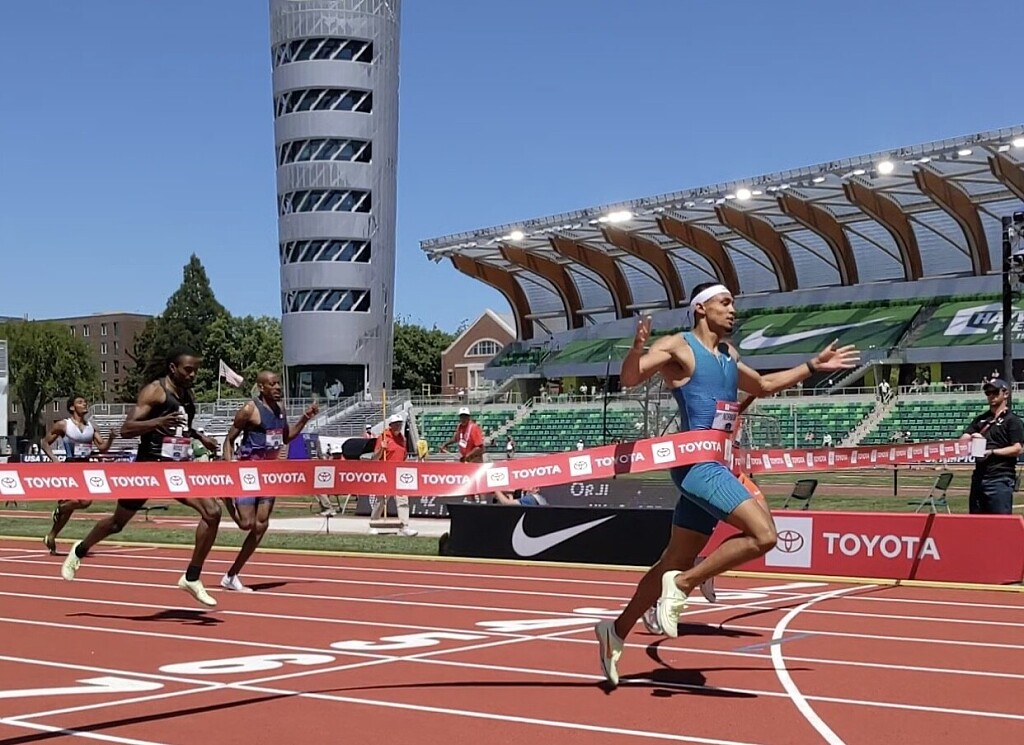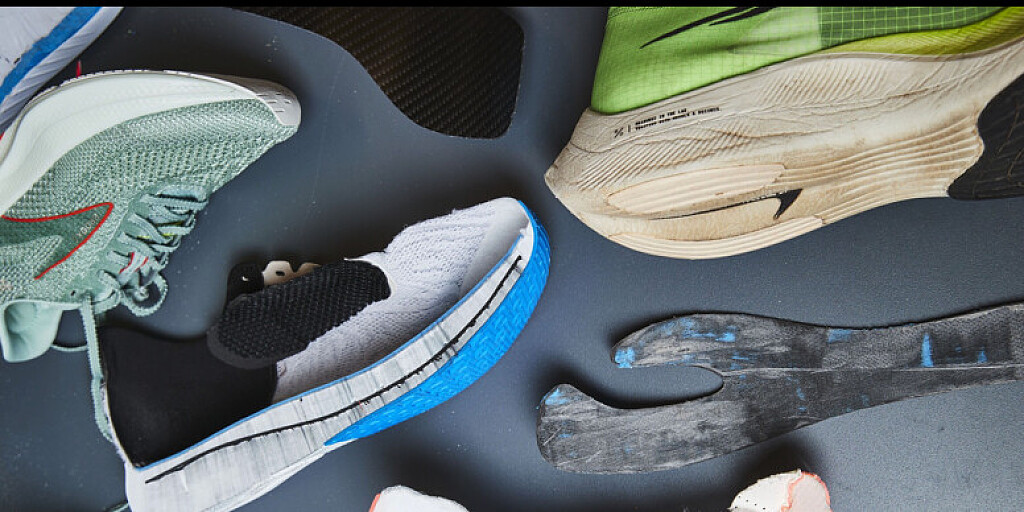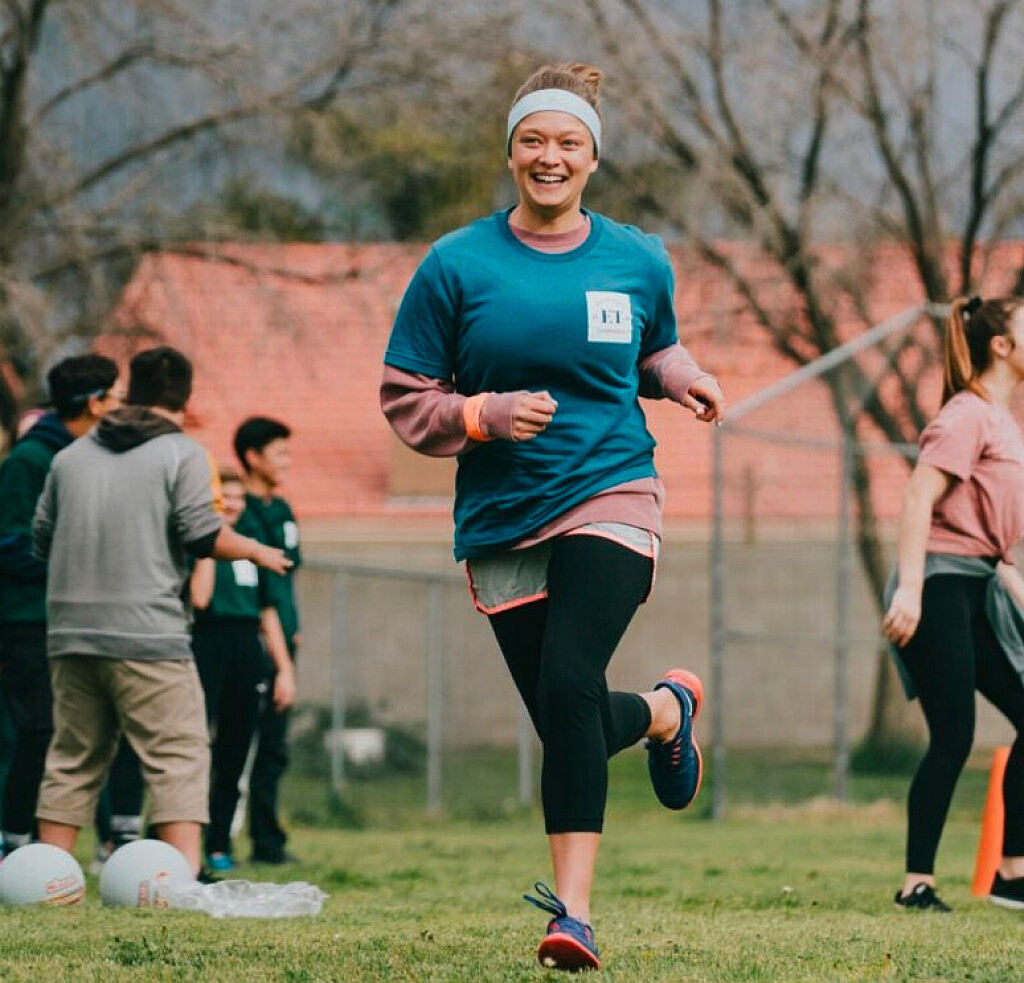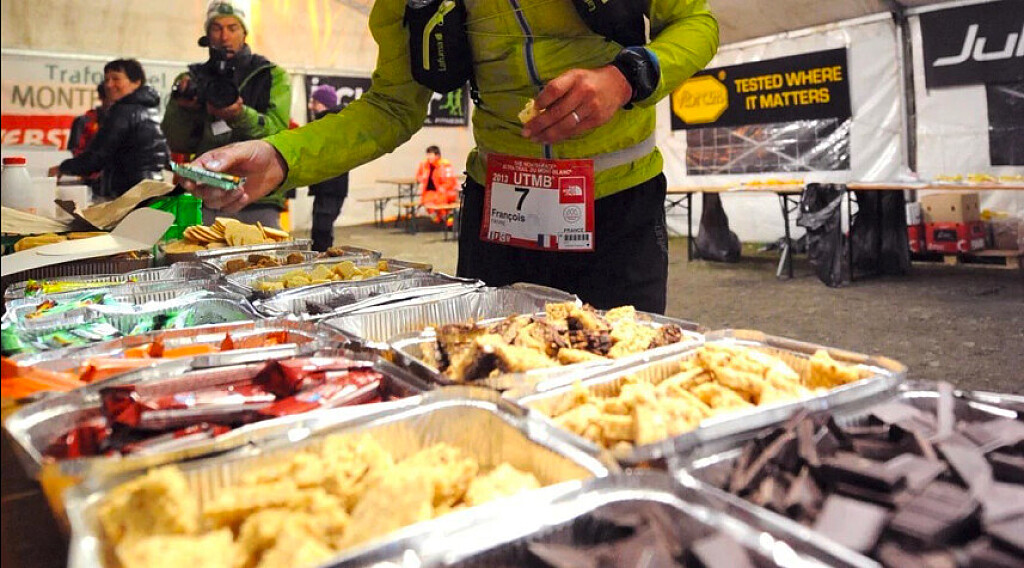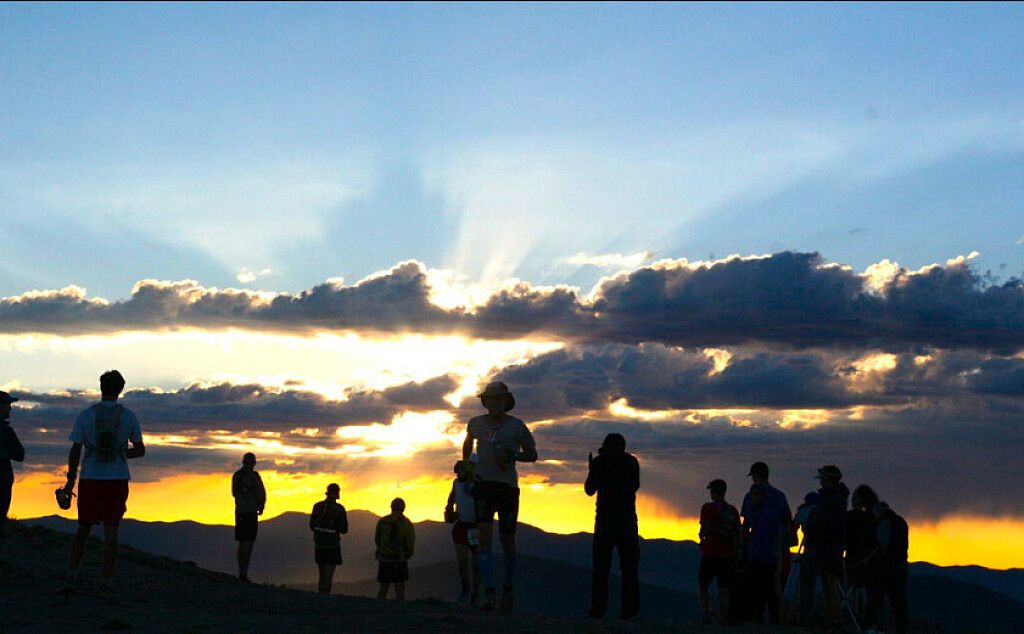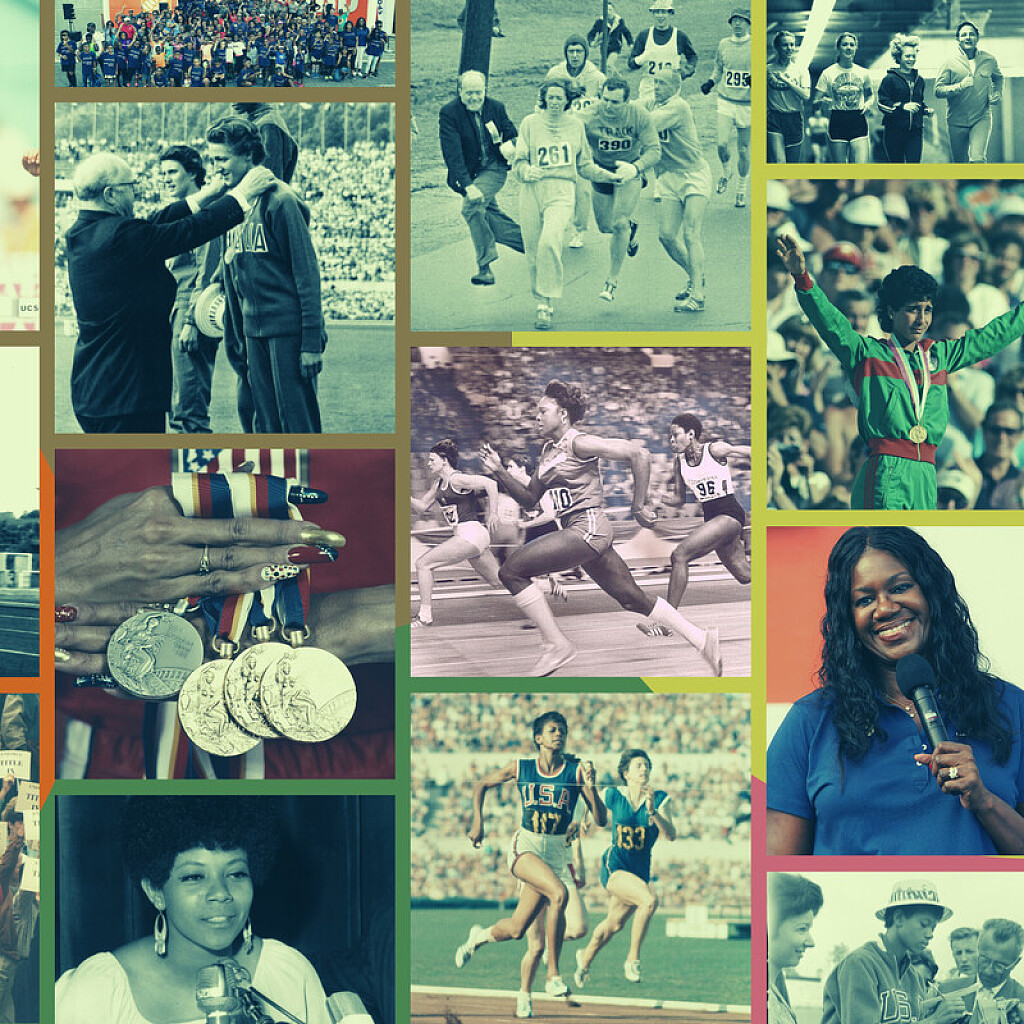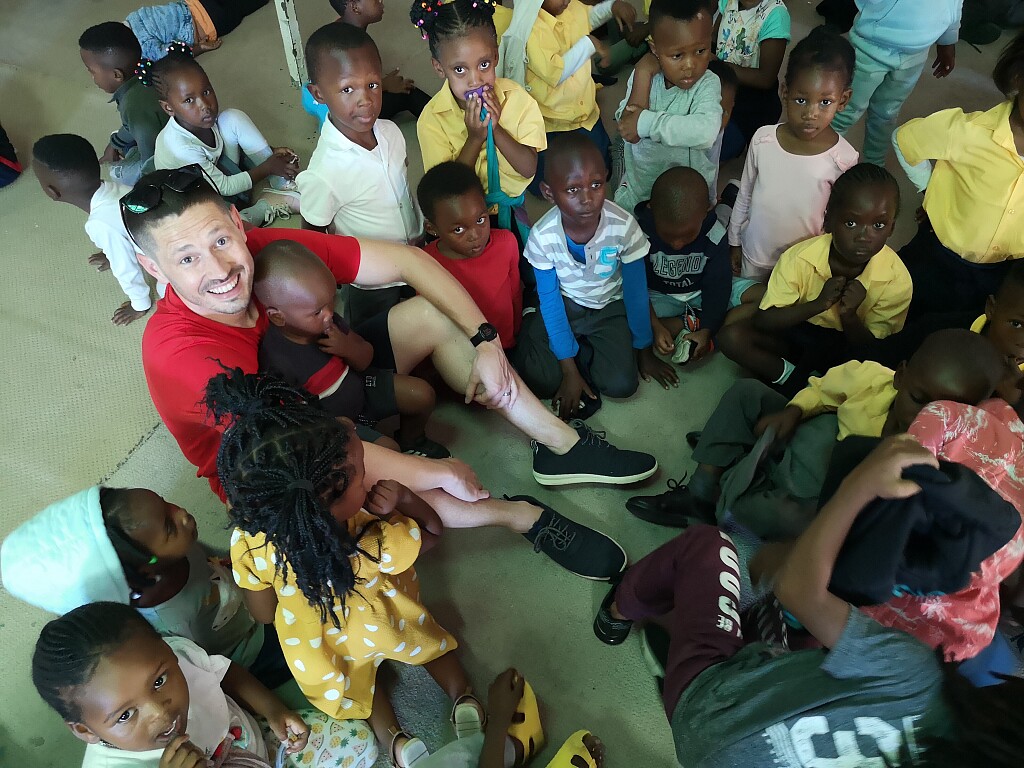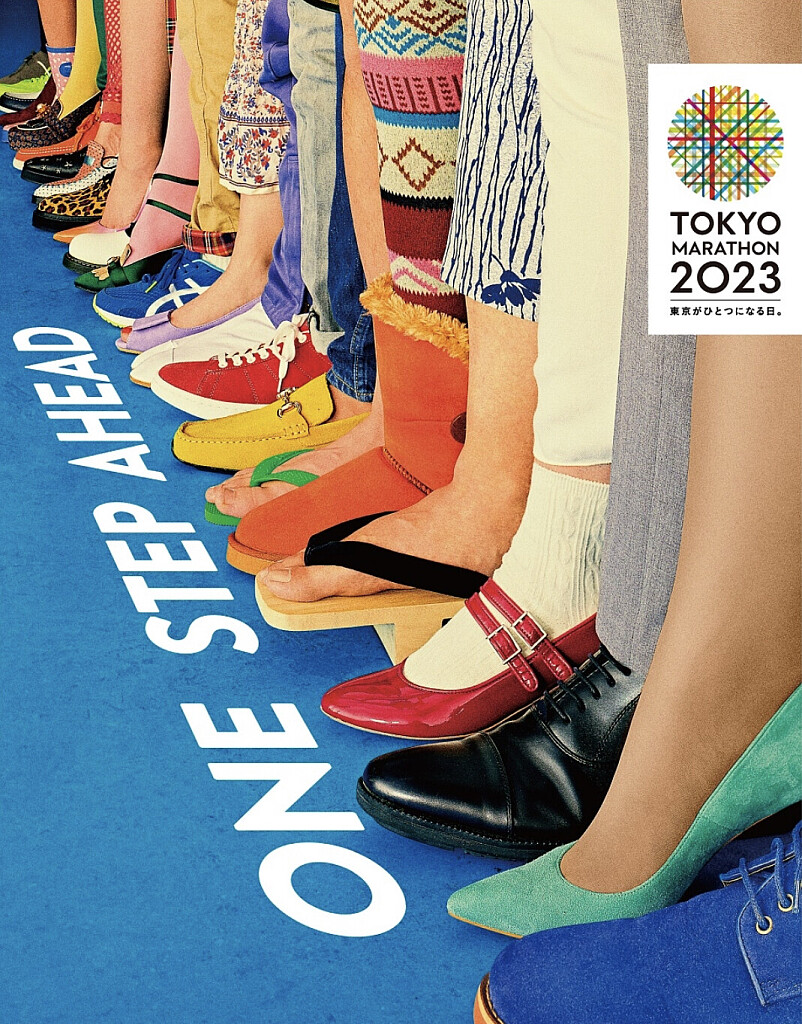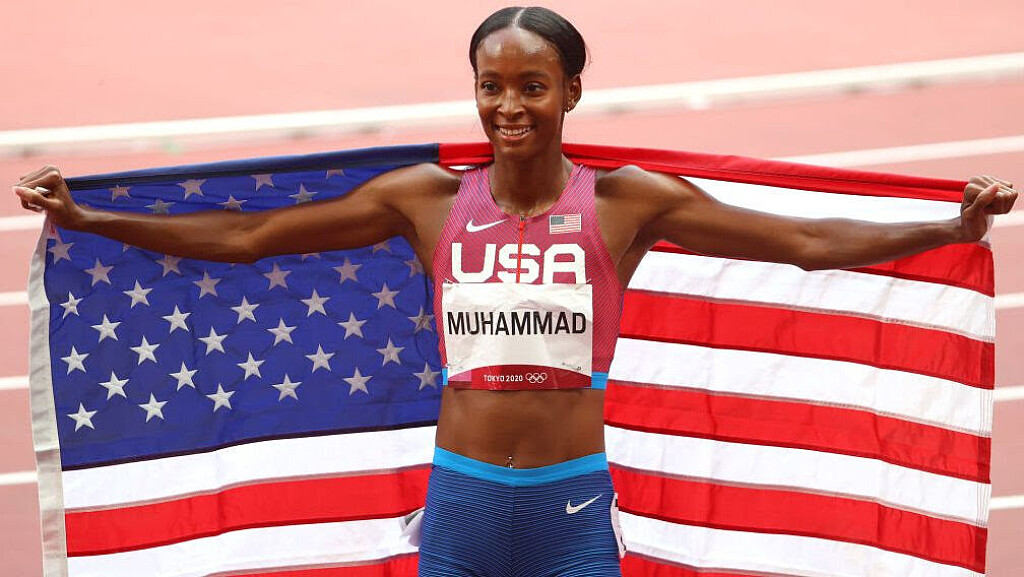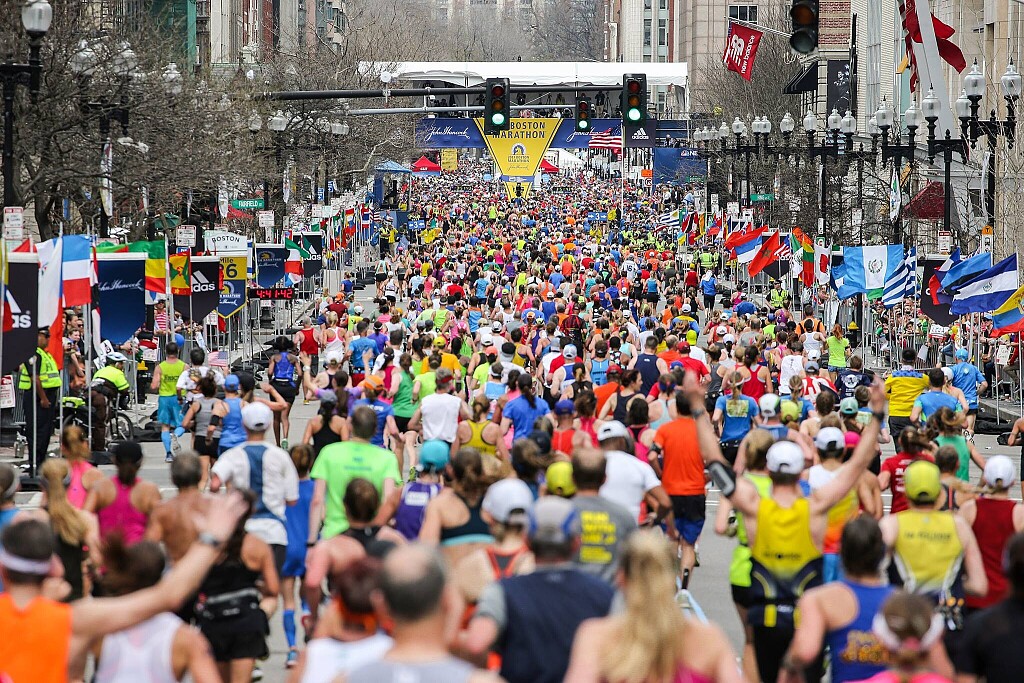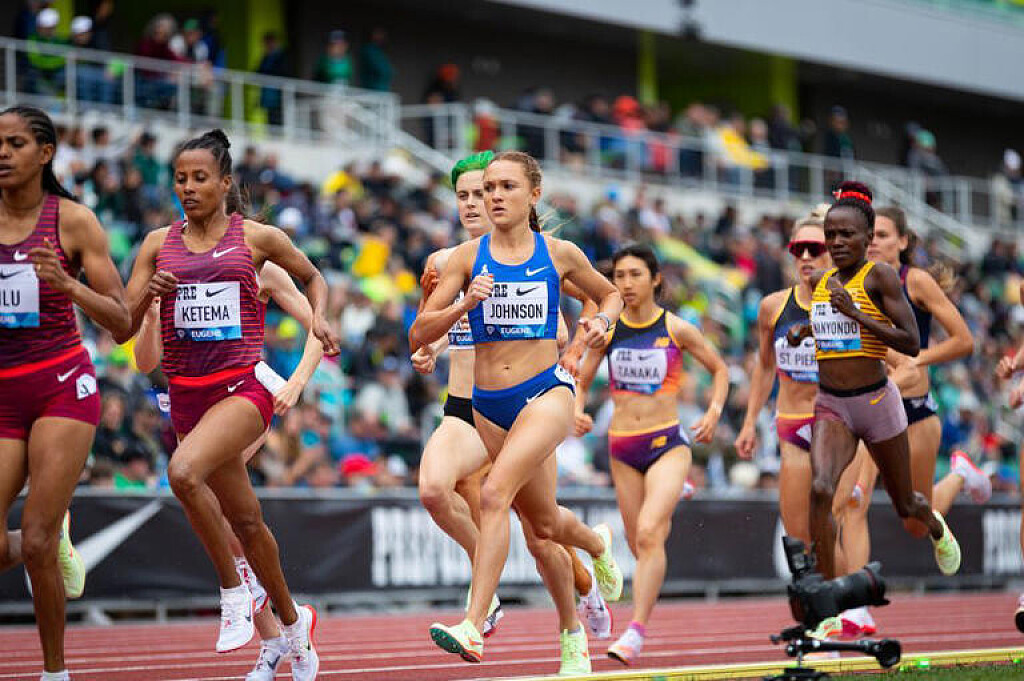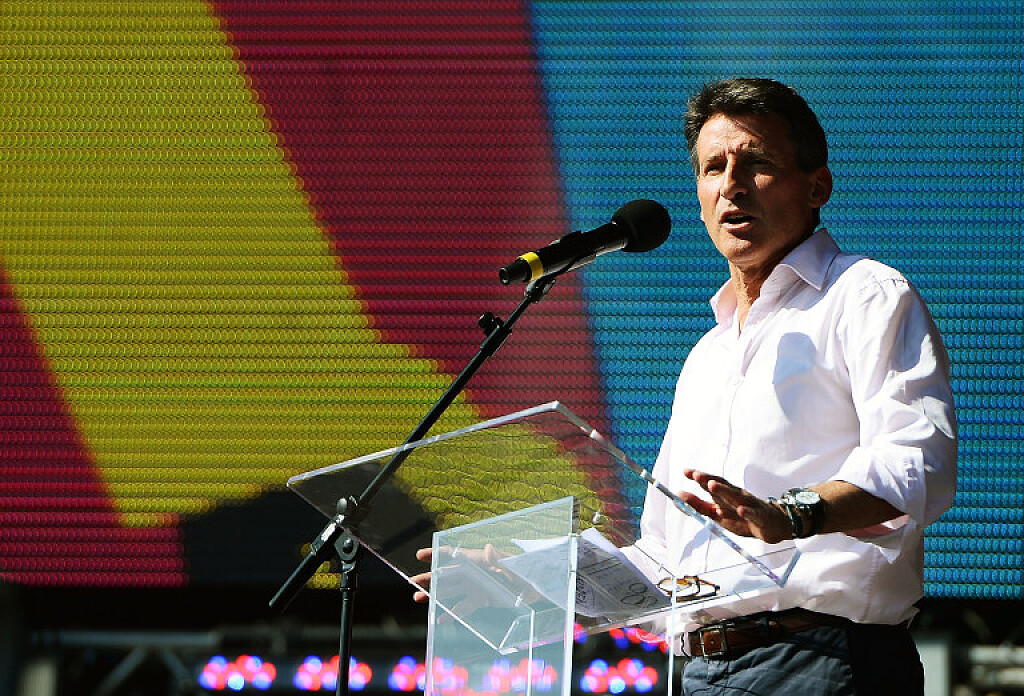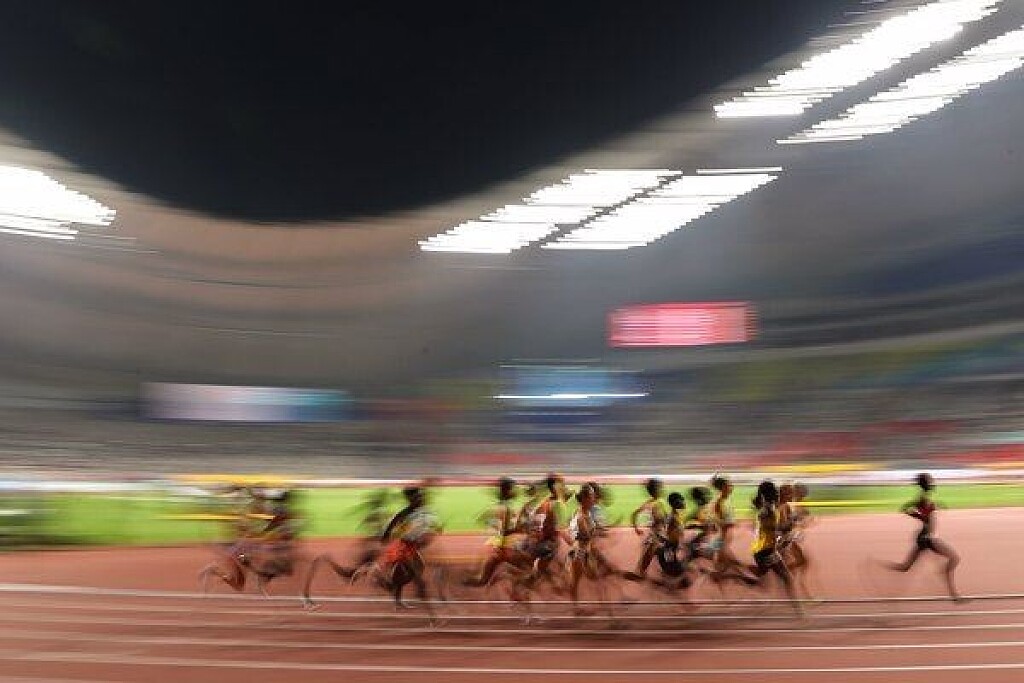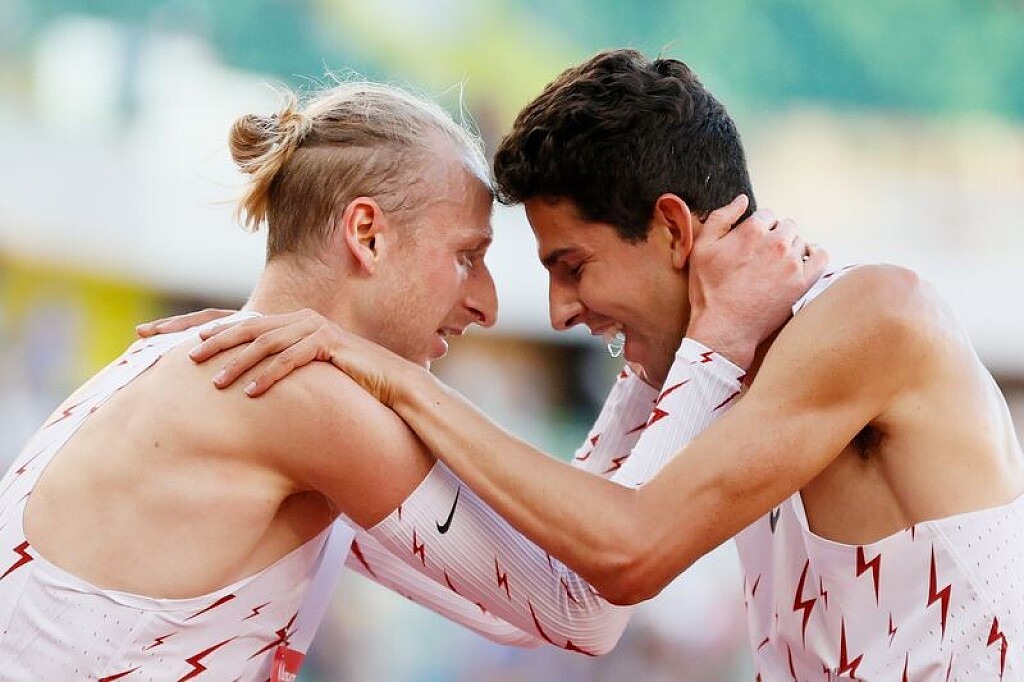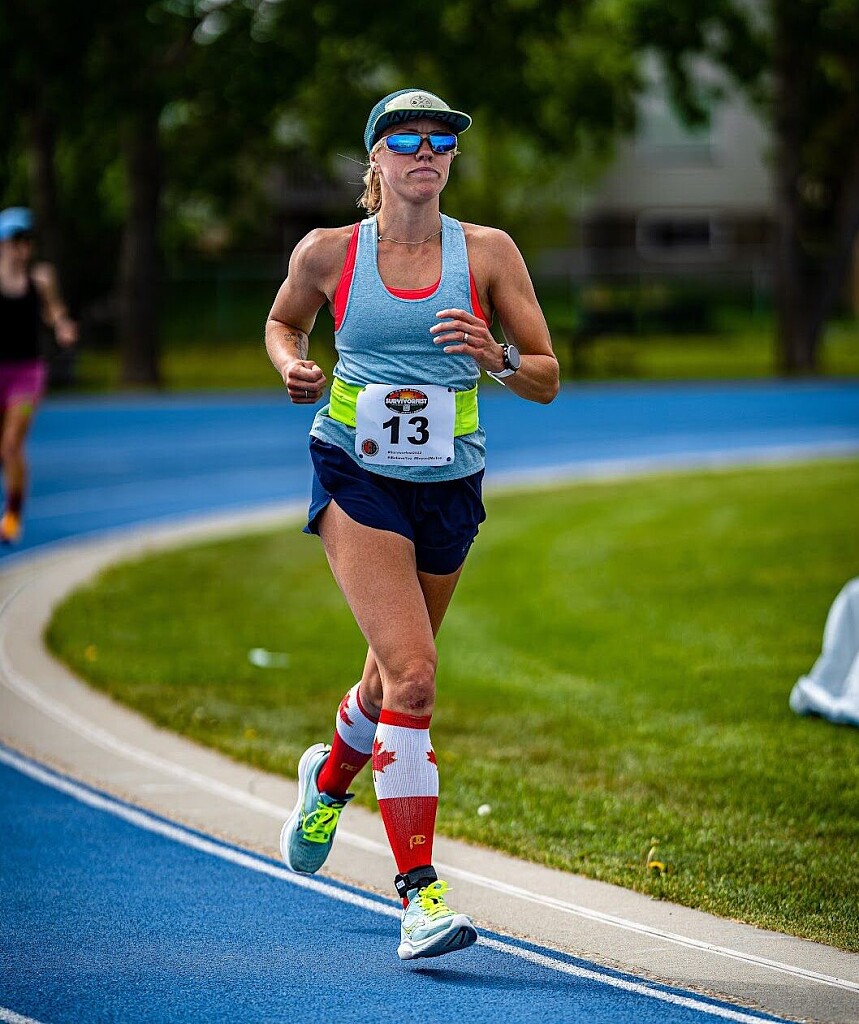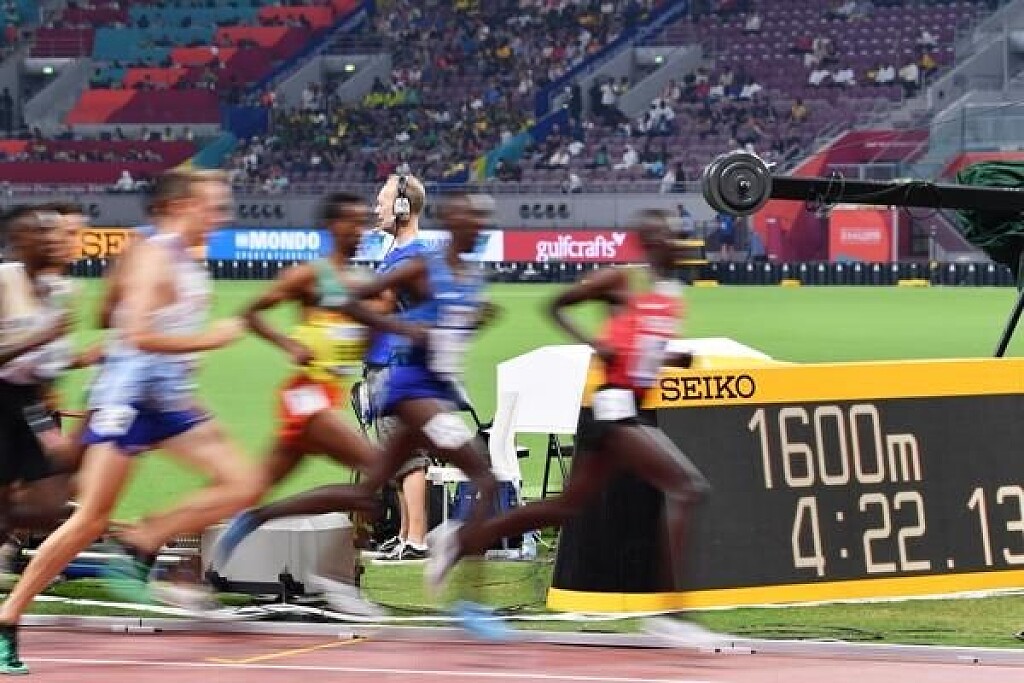Running News Daily
Running News Daily is edited by Bob Anderson in Mountain View, California USA and team in Thika Kenya, La Piedad Mexico, Bend Oregon, Chandler Arizona and Monforte da Beira Portugal. Send your news items to bob@mybestruns.com Advertising opportunities available. Over one million readers and growing. Train the Kenyan Way at KATA Running Retreat Kenya. (Kenyan Athletics Training Academy) in Thika Kenya. Opening in june 2024 KATA Running retreat Portugal. Learn more about Bob Anderson, MBR publisher and KATA director/owner, take a look at A Long Run the movie covering Bob's 50 race challenge.
Index to Daily Posts · Sign Up For Updates · Run The World Feed
Molly Seidel Out, Keira D’Amato in for World Championships Marathon
Seidel said last month she had sought a therapeutic use exemption for Adderall, which is banned in competition.
Keira D’Amato, the American record holder in the marathon, was named to Team USA for the World Championships today, replacing Molly Seidel, according to multiple sources.

The women’s marathon at the World Championships, to be held in Eugene, Oregon, is on July 18.
Seidel, who won Olympic bronze last year in Sapporo, Japan, was named to the U.S. squad for the marathon based on that performance. But a hip impingement caused her to drop out of the Boston Marathon in April.
On June 8, Seidel, 27, posted to her Instagram account that she had been taking Adderall for ADHD since Boston. Adderall is banned for in-competition use by the World Anti-Doping Agency (WADA). Seidel wrote that taking the medication was “life changing,” and she was able to “get the quiet, functioning brain in my day-to-day life that I could previously only achieve with intense physical activity.”
Seidel had applied to WADA for a therapeutic use exemption (TUE) to be able to take the medication when she was competing, but it had not been granted before the New York Mini 10K—and it wasn’t clear if it would be granted—so she withdrew.
The reason why her spot is going to D’Amato is not clear, and Runner’s World sought clarification from Seidel, her coach, and her agent.
D’Amato, 37, has less than three weeks to prepare for a marathon, but she “is in great shape,” according to her agent, Ray Flynn. She ran 2:19:12 in setting the American marathon record in January in Houston.
She won the BAA 10K last Sunday on a hot day in 31:17. Her Strava training shows she did an 18-miler on June 27 and has been averaging 73 miles per week for the last four weeks. She’s also been racing frequently, finishing third at the New York Mini on June 11.
On June 21, Runner’s World asked D’Amato if, in light of Seidel’s post, she was doing marathon training and was told she was an alternate for the Worlds team. “No one has contacted me,” she said at that time.
Emma Bates and Sara Hall are the other two American women in the World Championships marathon. Galen Rupp, Elkanah Kibet, and Colin Mickow are the men.
USA Track & Field usually names its World Championships marathoners based on a descending order time list. But given many marathons were canceled or postponed in 2021, it announced it would pick top 10 finishers from the Games (Seidel and Rupp) and then top finishers from the Chicago, Boston, and New York City marathons last fall. That decision was controversial because the selection criteria were announced in October after the Chicago and Boston marathons had already taken place.
(07/02/2022) ⚡AMPUltramarathoner Michael Wardian Runs Across the U.S. in 62 Days: 'I Feel Like I Was Made to Do This'
Wardian ran roughly 50 miles every day to complete the cross-country adventure in under 75 days
Move aside Forrest Gump: Michael Wardian, a 48-year-old man from Arlington, Virginia, ran more than 3,200 miles to cross the U.S. in 62 days, finishing on Friday.

Wardian is a former Michigan State lacrosse player who has since turned his athletic focus to running, and ultramarathons in particular. "Starting on May 1st, 2022, I will be running across the entire continental USA, starting in San Francisco, CA, and ending at my home in Rehoboth Beach, DE," Wardian wrote.
"This will be my longest run ever," said Wardian.
The ambitious athlete planned to run primarily along Route 50, with a goal of completing the journey in 75 days or less. Wardian ultimately finished ahead of schedule, arriving at Delaware's Dewey Beach on July 1, 62 days after he departed from San Francisco, California.A video of Wardian's big finish can be seen on his Instagram account. He celebrated by running through the finish line and straight into the ocean for a swim.
"Every day I'm seeing new things, getting to have new experiences," he told reporter Tom Schad of USA Today on day 59 of his adventure.
"I feel like I was made to do this," Wardian said. "This is my jam, for sure."
According to USA Today, Wardian has previously tackled other monumental runs, including doing seven marathons on seven continents in just seven days. He also once held the world records for fastest marathons on a treadmill and while pushing a stroller.
The outlet reported that Wardian's average time running per day was between 11 and 15 hours. At night, Wardian joined crew chief Eric Belz who drove an RV along the runner's route.
"It takes a lot of grit and a lot of passion," Belz told USA Today.
The Forrest Gump inspired journey had been on Wardian's bucket list for years, but when he started dealing with health issues — Wardian has what's known as athlete's heart, where the heart is enlarged — the runner knew it was now or never.
It was really humbling," Wardian said of his health concerns. "You always think you have more time."
Wardian had the support of his wife, Jennifer and teenage sons on his journey. What's more, Wardian's cross-country trip raised over $107,000 for World Vision's clean water work around the globe, for children and families to have access to clean and safe drinking water.
(07/02/2022) ⚡AMPWhy You Should Jog the Recovery in Interval Workouts
I used to train with a group that spanned the spectrum from milers to marathoners, all at a similar competitive level. For large stretches of autumn and winter, we could all train together in some approximation of harmony. But during track sessions, tensions would sometimes mount. The milers would start gapping the marathoners during shorter intervals-and in retaliation, the marathoners would push the recovery jogs to prevent the milers from catching their breath before the next rep. It was a nice illustration of different methods and mindsets about recovery.
A new study from researchers in Spain delves into this culture clash, comparing active (jogging) and passive (standing around) recovery between repeats during interval workouts. It's the latest in a long line of such studies, which have on the whole produced a confusing and contradictory body of research. This one doesn't offer any final answers, but it may help clarify which questions are worth asking.

The study was published in the European Journal of Applied Physiology (where it's free to read online) by a research team led by Eliseo Iglesias-Soler of the University of A Corua in Spain. It had 11 well-trained distance runners do a workout of 4 x 2:00 at their maximum aerobic speed, with 2:00 of either rest or jogging between intervals. They ran the workouts on an outdoor track, with a bike pacing them at their prescribed speeds (including during the jog rest, which was at 80 percent of their second ventilatory threshold). They also did five two-footed jumps immediately after each rep, which was supposed to assess their neuromuscular function, but seems like an odd thing to insert in the middle of a workout when you're trying to understand recovery dynamics.
Here's the key piece of data from one of the runners, showing his oxygen usage (VO2) as the workout progressed:
You can see that he uses more oxygen when he's running hard, and less when he's recovering. You can also see that he uses more oxygen during the jog recoveries (black lines) than the complete rests (red lines). The interesting part is the peaks. The whole point of interval workouts, according to one school of thought, is that it allows you to spend more time in the extreme zone, shown here as dotted lines between 90 and 100 percent of VO2 max, compared to just going out and running as hard as you can until you drop. The rest between reps enables you to suffer more rather than less.
In this case, the red peaks are higher than the black peaks: taking a complete rest enables this runner to spend more time in the extreme zone. Overall, the average results are ambiguous, though the complete rest does seem (with borderline statistical significance) to enable the runners to spend more time at peak VO2. On the other hand, perceived effort measured immediately after each hard repeat is lower with complete rest. As a result, the researchers conclude that complete rest is preferable for this type of workout: you get similar cardiorespiratory benefits but it feels easier.
There are a few caveats, though. One is that identical speeds were prescribed for the repeats. Perhaps the slightly lower VO2 values with active recovery mean that, if speeds were freely chosen, you'd actually run a faster workout with jog rests. This is, after all, one of the main rationales used to justify jog recoveries: the low-intensity exercise keeps blood flowing, which eliminates metabolic waste products such as lactate and protons more quickly, and thus enables you to go faster in the next interval. (The idea that lactate causes muscular fatigue has fallen out of favor, but it's still plausible that lactate levels are correlated with performance-impairing metabolites.)
In this study, lactate levels were only measured after the workout was over, and they were indeed significantly higher (6.93 vs. 6.24 mmol/L) in the complete rest condition. But a 2014 study tracked them every 45 seconds during a three-minute recovery period after an all-out 30-second interval. Lactate levels were initially identical for complete rest and easy cycling, but started to diverge after about two minutes. This suggests that the physiological benefits of active recovery kick in around then.
But all this, in turn, raises a deeper physiological (or perhaps philosophical) question: Is it better to make your workout harder or easier? You could argue that standing completely still is the best option because your muscles will be bathed in lactate and you'll get practice running under those conditions. Or you could argue that jogging is better, because you'll be training your body to eliminate lactate from the bloodstream more quickly, and enabling your legs to run faster. The only real way to resolve this debate is to forget about physiological measures and do a training study: get a bunch of people, train half of them with jog recoveries, half of them with complete rest, and see who makes the biggest improvements. It would be a very hard study to do.
In reality, there's unlikely to be a single best answer for how to recover between intervals. Instead, understanding the physiology of recovery gives you some tools to decide what's appropriate for a given session with given goals. If your goal is simply to run the workout as fast as possible, then you're probably better off walking the recovery or standing still if the recovery is short-a minute or less, say. That's because complete rest helps restore phosphocreatine, which is the instant energy that fuels sprints and the initial seconds of longer runs. If you're taking a couple minutes or more, then light jogging is likely to help you run fastest, thanks to the enhanced blood flow clearing lactate and other metabolites.
Then there's the mental dimension. In Once a Runner, Quenton Cassidy bends over in exhaustion after winning the Millrose Games. His mentor comes over to chastise him: "Don't you grab those knees, boy Here are your sweats, get 'em on. But don't you grab those knees though because you got to run a little of that off. You have just become the Wanamaker Mile champion and you got to let them know"
I only started jogging recoveries after college, and it was initially a big adjustment. It's a mental challenge to finish a hard interval and then force yourself to keep jogging-which, I suspect, is why the effort ratings were a little higher in the new Spanish study. But once you get over that hump, you realize that it's not actually any harder physically. And there's something intangible about finishing a hard interval with a training group, and seeing half of them bend over in distress while you jog calmly onward. I'm not saying you should get competitive with your training partners-but if the goal is racing, then it doesn't hurt now and then to subtly let them (and yourself) know
(07/02/2022) ⚡AMPby Trail Runner Magazine
How a Two-Time Olympic Marathoner Finished Western States 100
For a guy who's run solid marathons at the world's most competitive level, Reid Coolsaet admits he felt like a wide-eyed rookie at times during the 2022 Western States 100.
The two-time Olympic marathoner for Canada turned in a solid performance in his first time running 100 miles, finishing in 19 hours, 27 minutes, and 3 seconds. That placed him 25th overall and 17th among men, which isn't bad for a guy who has been more accustomed to running sub-5-minute mile pace for 26.2 miles at the peak of his career. (For reference, his Western States time averages out to 11:39 per mile.)

The 42-year-old from Hamilton, Ontario, had great moments and humbling moments during the race and says he learned plenty along the way, including a slow run-walk effort over the final 20 miles to the finish. Still, he left Auburn in good spirits with the notion that he might run another 100-miler at some point in his future
"I actually feel pretty good," he said this week after returning home. "I thought I would be a lot more wrecked than I am, which is a bit of a weird thing with ultras. I find myself barely able to run at the end and figure I won't be able to walk for a few days, but then I feel OK and think, 'Why didn't I run harder?' I feel like I had a 30K cooldown at Western States and I think that's what helped me recover."
Coolsaet owns a respectable 2:10:28 marathon PR at the 2015 Berlin Marathon and also raced well in two Olympic games - all before the advent of carbon-plated super shoes. At the 2012 Games in London, he finished 27th in the marathon (2:16:29) and four years later improved to 23rd overall (2:14:58) in Rio de Janeiro.
He's believed to be the only Olympic runner to run in the Western States 100 aside from Magda Boulet, a 2008 Olympic marathoner for the U.S. who was the 2015 Western States women's champion and 2017 runner-up.
Coolsaet started running ultra-distance races last summer after ending one final quest to qualify for the Tokyo Olympics. In his last attempt to run 2:11 or faster at a race in Siena, Italy, last April, he went through the halfway point in 65 minutes but faded to 2:16:38.
From there, he shifted to trail running and won the Quebec Mega Trail 110K race last August (14:24). But even though he was successful, he found out that he needed to do a lot more work to handle long descents and technical trails after his legs locked up on a long, downhill section.
He's believed to be the only Olympic runner to run in the Western States 100 aside from Magda Boulet, a 2008 Olympic marathoner for the U.S. who was the 2015 Western States women's champion and 2017 runner-up.
Coolsaet trained through the winter and turned in a good performance at the Canyons Endurance Runs 100K in Auburn in April, placing 15th overall (14th among men) in 10:12. He didn't earn a Golden Ticket, but was able to get a sponsor's entry for Western States.
When he arrived in Olympic Valley before the race, he hoped to compete for a top-10 finish and pegged Scott Traer and Jeff Colt as two runners he might be able to run with based on the smart races they had run at the Canyons 100K. He said his first 25 miles went about how he hoped as he was in the top 15 and staying hydrated and fueled.
He prepared for the heat by doing considerable sauna training in the weeks before the race. When temperatures rose into the mid-90s by mid-day, he kept the sun's impact at bay by taking on ice and wearing white arm sleeves and a sun hat. But from about the 30.3-mile Robinson Flat aid station to roughly the 50-mile point on the descent from Devil's Thumb to the El Dorado aid station, he started to lose contact with Traer and Colt (who would go on to finish 10th and 11th, respectively).
Thanks to his crew, Coolsaet recovered and still had a competitive mindset when he left the 62-mile Foresthill aid station, but running alone in the heat down to Rucky Chucky and the river crossing was the beginning of the end. By the time he picked up his second pacer at Green Gate near mile 80, he felt nauseous and had dead legs, which forced him to shift to survival mode.
"I was like 'Yeah, I'm just finishing this thing.' At that point, in my mind, I was just determined to finish," he says. "When I'm hurting that much, I have to be really excited about trying to catch people. And with the way I felt, I would have had to kill myself to catch two more people. That was a big ask for a little reward. I was just struggling to get one foot in front of the other for the last 30K. My legs were just shot. I could always run slow, but I would find myself at a small incline and just have to start walking."
He finished at 12:27 a.m. and was surprised to see his family there to greet him. He ran the final 300 meters on the track at Placer High School with his wife, Marie, and kids, Louis, 5, and Elodie, 4.
"It's fun because it's a lot more interactive than running marathons, where I won't even break a stride when I pass someone," he says. "In road races that my kids saw me run, I would zoom by at a fast pace and that was it. But in ultras, my wife has helped out a lot by crewing me, and I can high-five my kids at aid stations and then run the last 300 meters with them, so that's pretty cool."
For the time being, Coolsaet says he'll take time off to recover but quickly adds that he's as motivated as ever to run more trail races, both sub-ultra and ultra-distance events. Although he has no plans for another 100-miler anytime soon, he says he'll continue to pursue trail running and develop his technical trail running skills.
"I'd always rather been on the trails, but there just wasn't the Olympics on the trails," he says. "Without the Olympics, this is really where I want to be. Obviously, I would like to do really well at it, but I don't feel like I need to do well. When running was my job, I was super-motivated to be at the top in Canada and be on an international stage. There is just so much more unknown, but I'm not really dwelling on it too much and more just enjoying it. It's not that I don't want to be competitive, but I don't feel the same urgency to be at the top. So if I'm just doing all right at it and having fun, that's fine with me."
(07/02/2022) ⚡AMPby Trail Runner Magazine
Rhonex Kipruto and Kibiwott Kandie Added to Fastest Field in Peachtree History
Rhonex Kipruto is returning to Atlanta for two reasons: Vindication and to protect his event record at the Atlanta Journal-Constitution Peachtree Road Race. The 10K world record-holder was announced Thursday by Atlanta Track Club, organizers of the Peachtree, as a late addition to the elite field at Monday’s 53rd Running of the race.
The 2019 Peachtree champion isn’t the only Kenyan superstar joining the field: Also making the trip to Running City USA will be Kibiwott Kandie, whose personal best of 26:50 gives him the second-fastest 10K in the world this year and fifth fastest all time. Kandie, the 2020 World Athletics Half Marathon champion and 2022 Kenyan 10,000m champion, will be making his Peachtree debut.
Kipruto’s winning time of 27:01 here in 2019 is not only the Peachtree record but also the fastest 10K ever run in the United States. To hold on to his event record – and perhaps be the first man to ever break 27 minutes on American soil – he’ll have to battle five other men with road personal bests under 27:15. In addition to Kandie who defeated Kipruto when they raced on the track earlier this month, that speedy group includes Bravin Kiptoo, who was the runner-up to Kipruto, his brother, in 2019.
Kipruto was not planning to race the Peachtree this year. As one of the top-ranked 10,000- meter runners in the world, he was expected to make the Kenyan team for the World Athletics Championships in Eugene, Oregon, later in July. However, he finished a disappointing sixth in the Kenyan Championships and now hopes to redeem himself by making history on the Fourth of July.

“Chasing after the course record, weather permitting, is on my mind, especially as I failed to make Team Kenya this past weekend,” said Kipruto. “What comes after the defeat is always more important than the defeat itself.”
Kirpruto’s 2019 course record came with a $50,000 bonus for the 50th Running of the Peachtree. This year, the bonus is $53,000 to be split among any men or women in the footrace or Shepherd Center Wheelchair Division who set a record. With two other division record-holders returning – Brigid Kosgei in the women’s footrace and Daniel Romanchuk in the men’s wheelchair division – anyone who sets a record this year may find themselves sharing the purse. There will be plenty of competition. For Kosgei – whose 30:22 course record is also the fastest time ever run in the U.S. – the path to victory has become slightly easier, as Sheila Chepkirui withdrew after finishing second in the 10,000 meters at the Kenyan Championships. However, Irene Cheptai, the 2017 World Cross Country champion who finished 6th in the 10,000m in Tokyo last summer, has been added to the field.
There have been several other notable withdrawals from the elite field. Eight-time Peachtree winner Tatyana McFadden, 2017 Peachtree winner Leonard Korir and 2022 Publix Atlanta Half Marathon winner Nicholas Kosimbei are no longer racing on Monday.
(07/01/2022) ⚡AMPby Running USA
AJC Peachtree Road Race
The AJC Peachtree Road Race, organized by the Atlanta Track Club, is the largest 10K in the world. In its 48th running, the AJC Peachtree Road Race has become a Fourth of July tradition for thousands of people throughout the metro Atlanta area and beyond. Come kick off your Fourth of July festivities with us! If you did not get...
more...Athletics Kenya issues strict rules for athletes at pre-worlds Champ
Athletics Kenya (AK) has warned that no athlete will leave the World Athletics Championships and Commonwealth Games training camp at the Moi International Sports Centre, Kasarani without permission.
AK Chief Administrative Officer Susan Kamau said that AK, the team management and the National Olympic Committee of Kenya (NOC-K) will decide whether to allow some athletes to compete in the Diamond League.

The Stockholm Diamond League is on Thursday in Sweden with events like the 800m, men’s 3,000m and women’s 3,000m steeplechase on the program.
The World Athletics Championships will run from July 15 to 24 in Oregon, United States followed by the Commonwealth Games on July 28 to August 8 in Birmingham, England.

After Stockholm, the next Diamond League is on August 6 in Silesia, Poland.
However, there are close to 15 events in the World Athletics Continental Tour before the start of the world event.
Kamau noted that it will be wise for the athletes in camp to concentrate on their preparations.
“Nevertheless, we shall make a decision on whom to release if possible,” said Kamau, adding that members of the athletics team selected on Saturday are already in camp at Kasarani.
“We have been working on their documentation and all is well. We are ready for the world event and Commonwealth Games. We shall be giving updates on the progress of the team,” said Kamau.
Kenya finished second with 11 medals; five gold, two silver and four bronze during the 2019 Doha World Athletics Championships.
Team Kenya collected 16 medals in athletes at the 2018 Gold Coast Commonwealth Games; four gold, seven silver and five bronze, a performance that saw them finish fifth overall in athletics.
The country finished 14th overall with the only other medal coming from boxing through Christine Ongare who won bronze.
Athletics Kenya selected a team of 47 athletes for the World Athletics Championships and a similar number for the “Club” Games. There are several athletes who will double up in the two competitions.
The trials witnessed the return to form of some athletes, for instance World 3,000m steeplechase champion Conselsus Kipruto and Commonwealth Games 800m champion Wycliffe Kinyamal.
Others are the 2015 World Military Games 1,500m champion Selah Jepleting and World Half Marathon silver Kibiwott Kandie.
It also witnessed the continuous rise of some like Amos Serem, World Under-20 3,000m steeplechase champion Jackline Chepkoech and Abel Kipsang in 1,500m.
While Kipruto and Kinyamal will be heading to Oregon, Serem, Jepleting and Kandie could only settle for places in the Commonwealth Games team due to varying reasons.
Kipruto, who has been struggling with form, something that saw him fail to defend his Olympic title in Tokyo last year, eased off at the home-straight allowing World Under-20 champion Amos Serem to win.
Jepleting was the surprise winner of the women’s 5,000m, having scaled the distance event from 1,500m.
It was her second 5,000m race this year, having finished fifth at the Kip Keino Classic, but the anti-doping rules locked her out of the world event team.
Jepleting has not repented Kenya since the 2016 Durban Africa Senior Athletics Championships.
Kenyans athletes must go through three out-of-competition tests to qualify for the world event. Jepleting and Serem didn't meet this requirement.
(07/01/2022) ⚡AMPby Ayumba Ayodi
World Athletics Championships Budapest23
Budapest is a true capital of sports, which is one of the reasons why the World Athletics Championships Budapest 2023 is in the right place here. Here are some of the most important world athletics events and venues where we have witnessed moments of sporting history. Throughout the 125-year history of Hungarian athletics, the country and Budapest have hosted numerous...
more...Nnenna Lynch to be new chair of NYRR board, Lynch will serve as the first woman and first African American in the position
New York Road Runners (NYRR) today announced that Nnenna Lynch is nominated to serve as the next Chairwoman of the NYRR Board of Directors. It is a historical appointment as she will become the first woman and the first African American in the position.
Since 2014, Lynch has served on the NYRR Board of Directors. Additionally, she serves as the Chair of the NYRR Community Impact Committee, and she is helping to lead the CEO search process for the organization.

Lynch has a long history in real estate development, government, public policy, and finance. She previously served as the Senior Advisor to New York City Mayor Michael Bloomberg, where she set the strategy for growing New York City’s economy and oversaw over 10 city agencies with a collective budget of USD 5 billion and more than 20,000 employees. Currently, she is the founder and CEO of Xylem Projects, a New York City based and mission-driven real estate investment and development firm with a focus on high-impact urban mixed-use, affordable and mixed-income housing.
Lynch will succeed George Hirsch in June 2023 after formal approval by the Board of Directors at its 2023 Annual Meeting. Hirsch, who has served for 17 years, will become Chairman Emeritus. Hirsch is the founding publisher of New York magazine, was the long-time worldwide publisher of Runner’s World and he is a founder of the five-borough New York City Marathon.

“I am honored to serve as the new NYRR Chairwoman of the Board supporting the world’s premiere community running organization. Running has been a lifelong passion of mine, and after eight years of serving as a Board Member supporting NYRR’s community impact initiatives, I’m looking forward to serving in this role to help further NYRR’s presence in the community for future generations,” said Nnenna Lynch.
“I am thrilled to have Nnenna serve as our future Chairwoman of the Board,” said George Hirsch, Chairman of the Board, NYRR. “As a lifelong runner and with her deep experience in the New York community, we know her passion will further our organization’s commitment to the sport as well as supporting our community initiatives throughout the five boroughs. Nnenna is ideally suited for the role.”
Lynch currently holds many leadership positions including Co-President of the Association of American Rhodes Scholars. In addition, Lynch is a Trustee of Villanova University, a board member of the Van Alen Institute, and a former board member of the New York City Housing Authority. She earned an M.A. in Anthropology at Oxford as a Rhodes Scholar and a B.A. in Sociology at Villanova where she won five NCAA titles in track and field. Lynch is a born and raised New Yorker and since her childhood growing up seeing the urban blight of 1980s New York she has been passionate about revitalizing neighborhoods.
(07/01/2022) ⚡AMPby AIMS
Italy Run by Ferrero 4 Mile
Experience Italy in Central Park at the Italy Run by Ferrero, which will bring a touch of green, white, and red to the heart of New York City. Hosted in partnership with New York Road Runners (NYRR), the world's premier community running organization, the four-mile race will take place in Central Park on July 16 and is open to runners...
more...Break out of a running rut today with these tricks, mix up your routine to feel revitalized
If you feel like you’re in a rut and can’t get out the door or are simply not having fun when you’re out there, try modifying your routine with one of our (tried and tested) simple suggestions.
I recently missed a couple of scheduled training runs due to some travel–no big deal, right? I know from experience that it takes much longer than a day or two to lose fitness and that I simply needed to jump back on that proverbial horse. Sounds easy enough, but I was quickly reminded of how a few sub-par days of running, or a few unplanned extra rest days can play tricks with my mind. These ideas might sound silly, but they work–and you’ll soon be looking forward to your runs again, rather than opting for the couch.
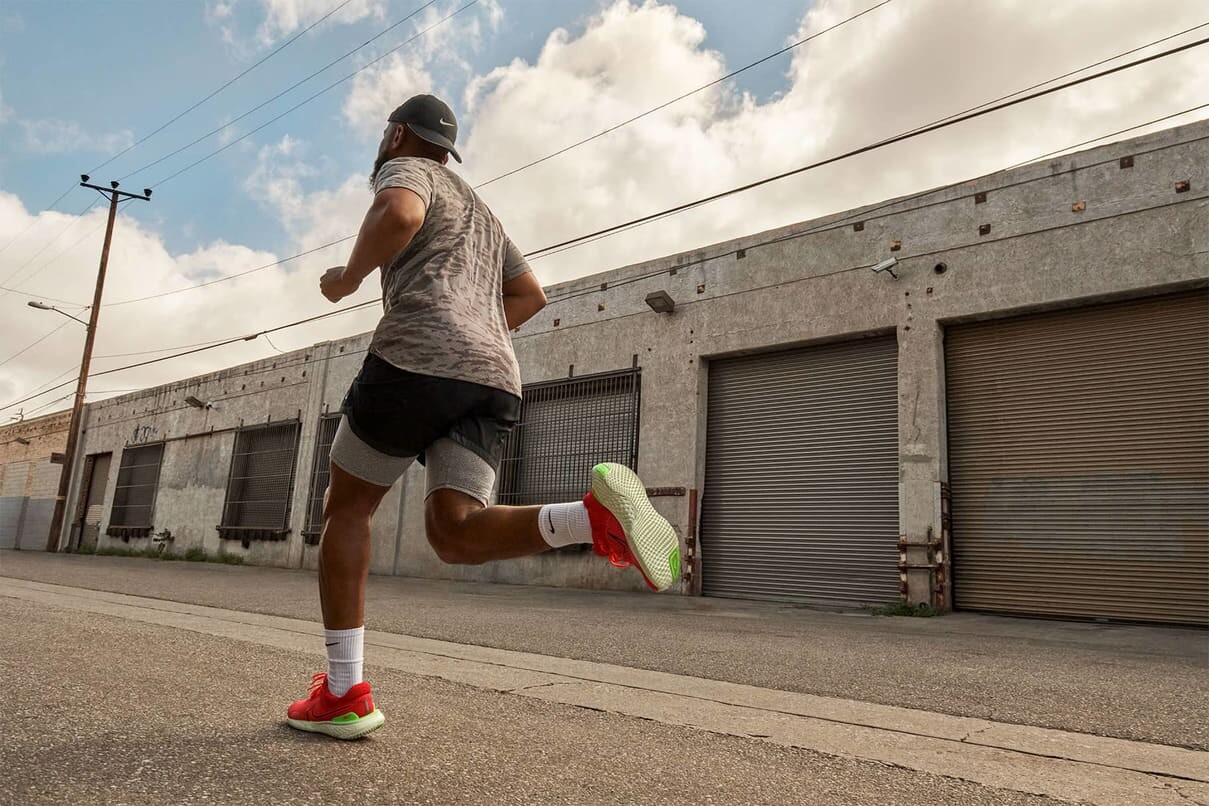
Switch it up
If you usually run on the roads, drive to a nearby trailhead and tackle a few trails. Switching it up doesn’t have to take a lot of effort, though: changing your routine can be as simple as veering into a different neighbourhood, running at a different time than usual (think evening instead of early morning), or throwing a stair workout into the mix. Trying something new can be challenging–but it also lessens any expectations you may have of yourself to hit goals or run at a certain pace. Know that you’re stimulating both mind and body by adding creativity, and you’ll probably have some fun while you’re at it.

Scrap the data–or take a break from obsessing over it
Data can be useful and is a handy tool to have. Many things can impact it. and it can be easy to focus on the numbers and ignore what they may be actually reflecting. If you’ve just had a mentally exhausting week, your heart rate may be higher than normal and you may find it hard to hit the usual paces you run at; similarly, if it’s really warm or windy outside, you may run slower than usual. If you find that you’re getting hung up on the numbers, try going for a run and leaving your watch behind. That may be too hard (hey, I hear you); alternatively, try telling yourself that today’s run is simply “miles in the bank” and change your watch setting to reflect time rather than pace. If you can’t resist looking at your data later and are surprised by how slowly you ran, know that not only did your body find the pace it needed for you while you were out there, but also that running slowly is a skill. Give yourself a pat on the back for taking a step towards greater running efficiency.
Try a new podcast or playlist, or try not listening to anything
Confession: I once ran to the same (albeit long) playlist for close to a year. When I’m struggling to get out the door I find that getting some podcast recommendations from friends, downloading a few episodes, and queuing them up to listen to is enough of a mental boost to get me out the door. Whether it’s a running-based podcast, true crime, self-help, or something funny, knowing I can zone out and tune into something new can be enough to overcome the lack of enthusiasm I may be feeling. My partner recently went through a bit of a battle to get out the door, and discovered that leaving his formerly-relied-upon headphones at home and enjoying the scenery on his long run was a game-changer for him. While he’s back to his regular eighties-mix playlists, he says he plans to take the quieter, scenic path more often.
Bonus tip: combine a few of these for an extra boost
Go really wild and throw a few of these mental picker-uppers into the mix at once. Like adding a shot of espresso to your regular coffee, adding more than one of these tricks to your run will amp up the rewards. After a week of dragging myself out the door, I ran some mountain bike paths with my husband. I had been following a training routine and working on nailing paces in speed workouts while keeping my heart rate down in longer runs, and I needed a change. While I kept my watch on, I ignored my pace and stopped to take a few photos and chat with passers-by. I left my headphones at home, paying attention to the new route we were following and admiring the scenery I often take for granted while grinding out interval repeats. I knew the windy, hot day heat was going to impact my data, and I reminded myself that wind and heat are powerful tools to train mental grit, something that is not directly reflected on Strava. The result? I had a blissful and challenging morning run, bonded with my partner while enjoying our community, and felt refreshed and ready to approach my next training block.
(07/01/2022) ⚡AMP
by Keeley Milne
Coach Bill Squires who coached runners like Bill Rodgers has died
The Boston Athletic Association mourns the passing of the legendary coach and athlete Bill Squires, who died today, Thursday, June 30. This is an immense loss for our running community.
William Squires was born November 24, 1932 and was an American track and field coach. He is well known for coaching the Greater Boston Track Club at the height of its marathon success, including marathoners Bill Rodgers, Alberto Salazar, Dick Beardsley and Greg Meyer.

Squires was originally from Arlington, Massachusetts and competed in track and field events for Arlington High School. While a senior there, Squires was chosen as a member of the 1952 Parade All-American team. Squires went on to college at Notre Dame, where he was a two-time All-America in cross-country in 1954 and 1955.

Squires's personal bests according to the MSTCA hall-of-fame induction were 4:21 for the mile in high school and 4:07 in college. He was notable for designing a Heartbreak Hill simulator for training. He was formerly a coach at Boston State College from 1965 to 1978.
In 2002 Squires received the Bill Bowerman award from the National Distance Running Hall of Fame. Squires co-authored the book "Speed with Endurance" with Bruce Lehane.
"Bill Squires was a speaker at our National Running Week in the early 1980's," says MBR publisher Bob Anerson. "He shared his knowledge and we were very impressed. He will be missed."
(06/30/2022) ⚡AMPUkrainian athletes benefit from fund to attend World Athletics Championships
The first group of Ukrainian athletes and coaches depart today (Thursday) for the USA ahead of next month’s World Athletics Championships Oregon22.
World Athletics is distributing more than US$220,000 to support Ukrainian athletes preparing for the World Championships and the World Athletics U20 Championships Cali 22 in response to the crisis caused by Russia’s invasion of Ukraine.

World Athletics, the Member Meetings of Diamond League Association and the International Athletics Foundation launched a Ukraine Fund in April with the purpose of assisting professional athletes, immediate family members and their support personnel affected by Russia’s invasion of their home country.
This was in addition to a Solidarity Fund established by the International Olympic Committee (IOC) in February, which has already allocated about US$2.5 million to the Ukrainian Olympic Community and sports movement.

Both funds have enabled the Ukrainian Federation to pay a significant portion of the cost of training camps and competition across Europe for athletes preparing for these major events while a number of European National Olympic Committees, in coordination with the IOC, have provided support too.
The Athletics Ukraine Fund is now being used to fund the entire Ukrainian delegation’s attendance in Oregon.
So far 53 athletes, 25 coaches and officials, and 18 family members including children have received assistance from the Fund.
With the support of the IOC, the Fund will also ensure the Ukrainian team’s attendance at the World U20 Championships in Cali in August.
The IOC and European Athletics also assisted with training camps in Europe while the US Olympic and Paralympic Committee is providing additional support for athletes attending a training camp in California leading into the World Championships.
World Athletics President Sebastian Coe said: ”I am grateful and proud of the way the athletics community and the Olympic community have come together to support the Ukrainian Federation as they try to keep as many athletes as they can in training and competition. My thanks go to everyone involved for their support as these athletes prepare to represent their country while the war continues.”
Iolanta Khropach, General Secretary of the Ukrainian Athletic Association, said the federation was extremely grateful for the support of the combined athletics organisations and the IOC who came immediately to their aid after the invasion.
“They help our athletes to train and compete,” she said. “Without this support, it just would not be possible. This is more than just having good facilities and possibility to perform at World Championships and other events. World Athletics and European Athletics have helped to save the lives of our athletes.
“Many Ukrainian athletes now defend our country with weapons in their hands. Our sports infrastructure is destroyed. World Athletics was one of the first sports organisations in the world that banned Russian and Belarusian athletes and officials. We appreciate it so much and believe in World Athletics' strong position in the future.
“We are grateful to World Athletics and the IOC, as well as to every federation, LOC, other organisations, and individuals supporting us during these challenging times. Now we feel like never before that we are a true athletics family.”
World Athletics would like to thank all those organisations who have made generous contributions to the Ukraine Fund, including Members of the Diamond League Association, the International Athletics Foundation, the IOC, USOPC and PWC France Sport Challenge.
The fund can receive additional contributions at any time until fund closure which is set for 31 December 2023. Funding per beneficiary will be allocated on a needs-basis.
Potential donors to the fund should contact UKRFund@worldathetics.org.
World Athletics is coordinating with the International Olympic Committee’s Solidarity Fund for the Ukrainian Olympic Community to prevent any duplication of efforts.
(06/30/2022) ⚡AMPby World Athletics
World Athletics Championships Budapest23
Budapest is a true capital of sports, which is one of the reasons why the World Athletics Championships Budapest 2023 is in the right place here. Here are some of the most important world athletics events and venues where we have witnessed moments of sporting history. Throughout the 125-year history of Hungarian athletics, the country and Budapest have hosted numerous...
more...Running Just 5 Minutes A Day Could Add Years To Your Life
If you don't think you have time to go for a run, think again.
Running just five minutes a day could add years to your life and provide the same health benefits as running much more, according to a recent study in the Journal of the American College of Cardiology. Even if you aren't a fan of running, that's not a lot to ask.
Almost everyone has five minutes to spare. This finding suggests that it takes longer to put on workout clothes and shoes and to clean up and change again afterward than it does to do something that could make you significantly healthier.
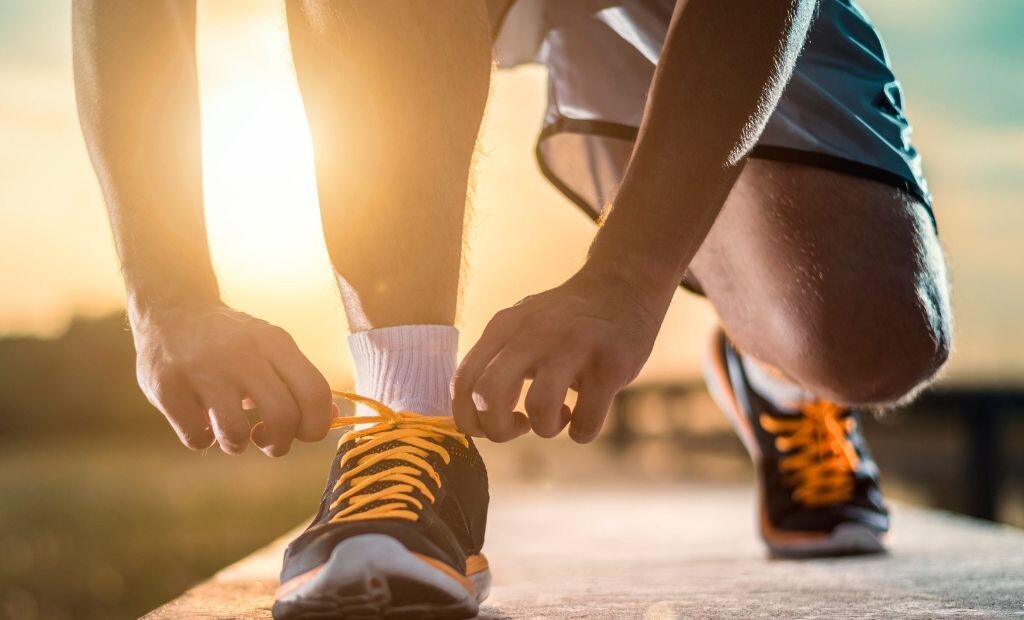
"Since time is one of the strongest barriers to participate in physical activity, the study may motivate more people to start running and continue to run as an attainable health goal," said DC Lee, lead author of the study and an assistant professor in the Iowa State University Kinesiology Department, in the news release.
Researchers followed a group of 55,137 adults for 15 years. Their ages ranged from 18 to 100, with an average age of 44. During that time period, 3,413 people died, 1,217 for reasons related to cardiovascular issues.
Runners were 30% less likely to die than non-runners, even if they didn't run a lot, and 45% less likely to die from heart disease or stroke.

And while the study was not designed to determine whether running was the root cause of those outcomes, any running at all was associated with an extra three years of life expectancy.
About a quarter of the total group identified as "runners," though that group was then subdivided into groups who ran anywhere from more than 20 miles a week and more than 25 minutes a day to those who ran fewer than six miles a week and only five to 10 minutes a day.
The really crazy part is that the running-related health benefits for all those groups were similar, even after controlling for other exercise habits, age, sex, weight, smoking, drinking, and family history of heart disease. Running a lot more wasn't necessarily better than running just a little, at least not in terms of risk of cardiovascular problems.
So is there something particularly special about running that makes it stand out more than other exercise?
Not really, according to Timothy Church, a professor at the Pennington Institute and co-author of the study. It's more about intense exercise, he told The New York Times.
Running is an easy way to get intense exercise, even if you aren't a particularly fast runner. It takes a lot more out of you than things that qualify as moderate exercise, like walking.
"Running just happens to be the most convenient way for most people to exercise intensely," Church told The Times.
(06/30/2022) ⚡AMPby Kevin Loria
GB boost team for World Champs
A number of athletes have been added to the British squad for the World Championships in Eugene following the publication of the “Road to Oregon 2022” qualification positions.
The athletes added are: high jumpers Emily Borthwick, Laura Zialor, Morgan Lake and Joel Clarke-Khan, long jumper Jazmin Sawyers, triple jumper Naomi Metzger, discus throwers Jade Lally and Nick Percy, shot putters Scott Lincoln and Amelia Strickler, sprint hurdler David King, 400m hurdler Chris McAlister, 400m runner Alex Haydock-Wilson, triple jumper Ben Williams and pole vaulter Molly Caudery.
Ellie Baker is also expected to be added to the team in the women’s 800m due to withdrawals from athletes ahead of her in the rankings.
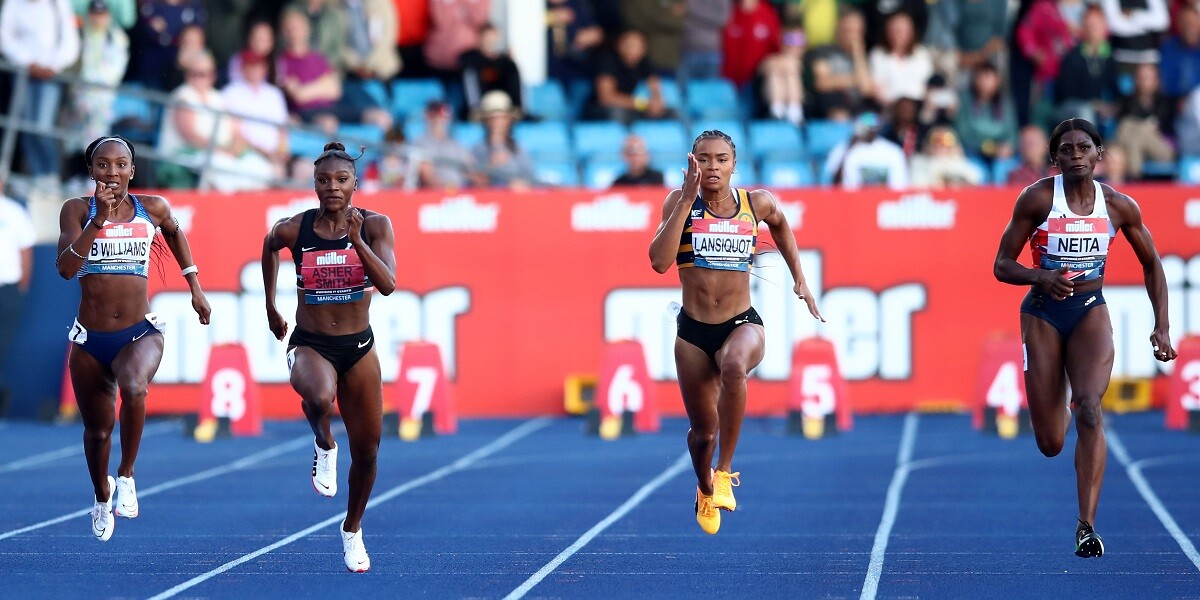
However Callum Wilkinson has dropped out of the team in the 20km walk to focus instead on the Commonwealth Games.
The team is as follows:
Women:

100m: Dina Asher-Smith; Daryll Neita; Imani-Lara Lansiquot;
200m: Dina Asher-Smith; Beth Dobbin;
400m: Victoria Ohuruogu; Ama Pipi; Nicole Yeargin;
800m: Alex Bell; Keely Hodgkinson; Jemma Reekie; Ellie Baker (subject to top 32 ranking);
1500m: Melissa Courtney-Bryant; Laura Muir; Katie Snowden;
5000m: Jessica Judd; Amy-Eloise Markovc; Eilish McColgan;
10,000m: Jessica Judd; Eilish McColgan;
3000m steeplechase: Lizzie Bird; Aimee Pratt;
100m hurdles: Cindy Sember;
400m Hurdles: Jessie Knight; Lina Nielsen;
High jump: Emily Borthwick, Morgan Lake, Laura Zialor;
Pole vault: Holly Bradshaw; Molly Caudery;
Long jump: Lorraine Ugen; Jazmin Sawyers;
Triple jump: Naomi Metzger;
Shot put: Sophie McKinna; Amelia Strickler;
Discus: Jade Lally;
Heptathlon: Katarina Johnson-Thompson;
4x100m: Dina Asher-Smith; Beth Dobbin; Imani-Lara Lansiquot; Daryll Neita; Ashleigh Nelson; Asha Philip; Bianca Williams;
4x400m: Zoey Clark; Jessie Knight; Laviai Nielsen; Lina Nielsen; Victoria Ohuruogu; Ama Pipi; Nicole Yeargin;
Marathon: Rose Harvey; Jess Piasecki; Charlotte Purdue.
Men:
100m: Zharnel Hughes; Reece Prescod;
200m: Joe Ferguson; Adam Gemili; Nethaneel Mitchell-Blake;
400m: Matthew Hudson-Smith; Alex Haydock-Wilson;
800m: Max Burgin; Kyle Langford; Daniel Rowden;
1500m: Neil Gourley; Josh Kerr; Jake Wightman;
5000m: Sam Atkin; Andrew Butchart; Marc Scott;
10,000m: Patrick Dever;
110m hurdles: Andrew Pozzi; Josh Zeller; David King;
400m hurdles: Alastair Chalmers; Chris McAlister;
High jump: Joel Clarke-Khan;
Pole vault: Harry Coppell;
Triple jump: Ben Williams;
Shot put: Scott Lincoln;
Discus: Lawrence Okoye; Nick Percy;
Hammer: Nick Miller;
4x100m: Harry Aikines-Aryeetey; Jeremiah Azu; Jona Efoloko; Adam Gemili; Zharnel Hughes; Reece Prescod; Nethaneel Mitchell-Blake;
Marathon: Josh Griffiths; Chris Thompson;
Mixed 4x400m: Athletes already selected for the women’s 4x400m relay team will be available for selection for this event, plus: Joe Brier; Lewis Davey; Alex Haydock-Wilson.
(06/30/2022) ⚡AMPby Athletics Weekly
World Athletics Championships Budapest23
Budapest is a true capital of sports, which is one of the reasons why the World Athletics Championships Budapest 2023 is in the right place here. Here are some of the most important world athletics events and venues where we have witnessed moments of sporting history. Throughout the 125-year history of Hungarian athletics, the country and Budapest have hosted numerous...
more...New study explains why you should not eat after a hard run
Have you ever envisioned the perfect meal during a long run or race, only to have your appetite vanish when it’s time to refuel? There is evidence to suggest that appetite may be suppressed after a hard workout, due to alterations in hunger hormones and metabolism. In a recent study in Nature, researchers at Stanford University, Baylor College of Medicine in Houston and elsewhere identified a metabolite molecule that’s released into the blood during exercise, and that’s associated with appetite suppression.
The researchers analyzed blood samples from mice, racehorses, and humans after intense exercise—for humans, this was a treadmill running test to exhaustion. They noticed an increase in the circulation of a metabolite called N-lactoyl-phenylalanine (Lac-Phe) in both animals and humans.
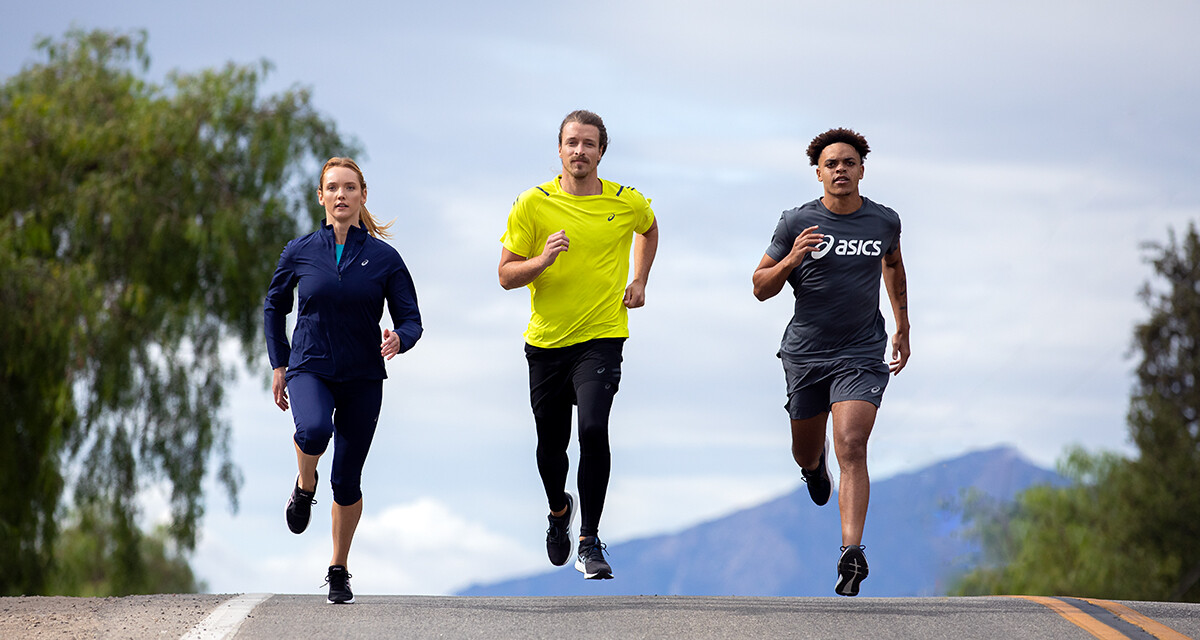
The study also examined the effect of different exercise modalities on circulating Lac-Phe. A second group of volunteers underwent three different exercise trials: a sprint exercise trial on a stationary bike, an endurance exercise trial on a stationary bike, and a resistance exercise trial consisting of leg extensions. All three types of exercise produce a substantial increase in the Lac-Phe metabolite, but the increase was most pronounced with the sprint exercise.
Prior to this study, the Lac-Phe metabolite was not well studied. It is formed through an enzymatic reaction between the amino acid phenylalanine and lactate, an end-product of anaerobic respiration that occurs during intense exercise. Its function, however, was largely unknown.
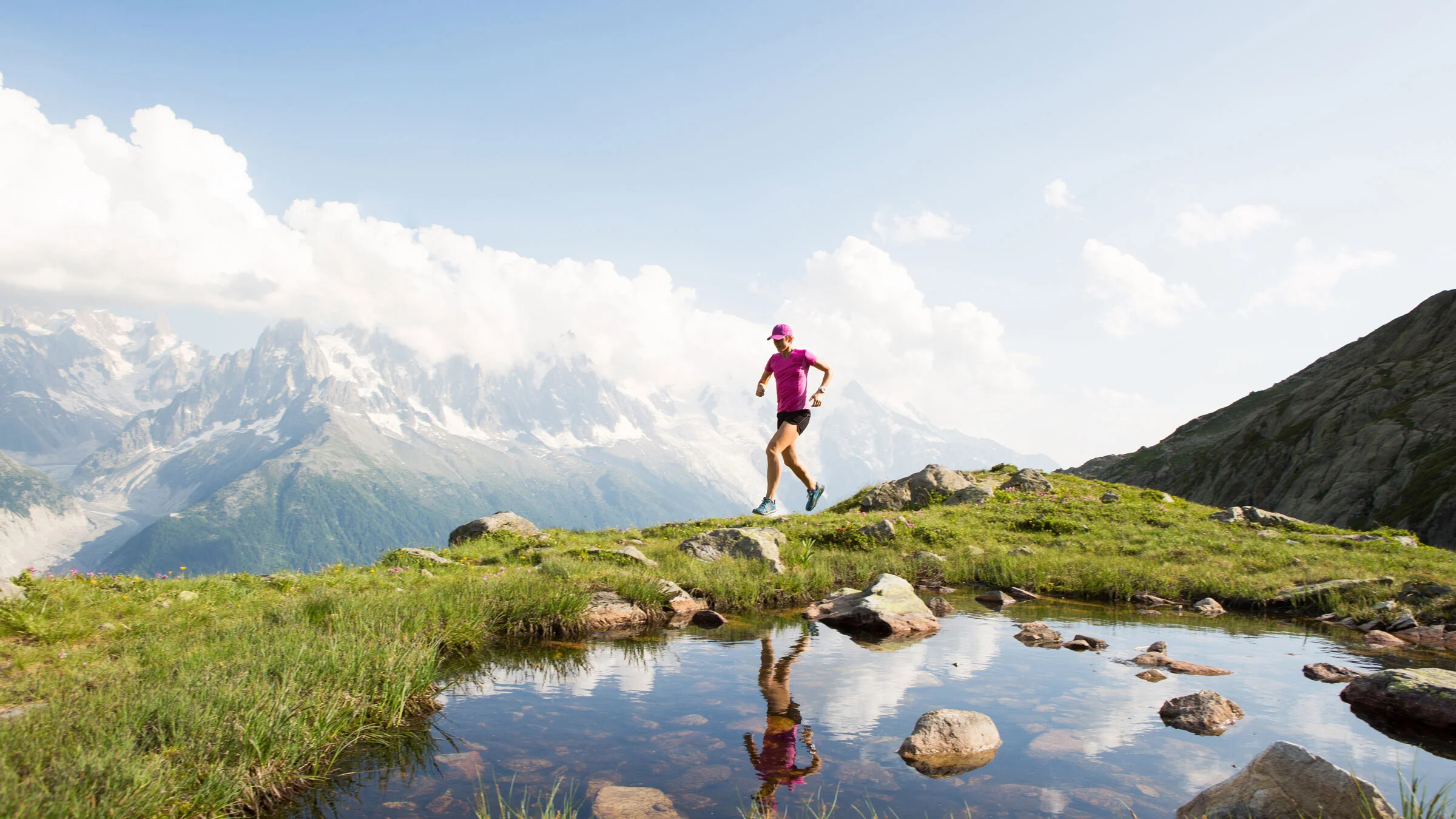
In this study, when the scientists administered Lac-Phe to obese mice fed a high-fat diet, they consumed less food than usual over the next 12 hours. Over 10 days, their food consumption and weight dropped, and their glucose homeostasis improved. Interestingly, Lac-Phe did not have a similar effect in lean mice eating a low-fat diet.
Does this mean intense exercise will lead to weight loss? Not exactly. The study has identified a potential mechanism by which exercise can contribute to weight loss in obese mice. Further studies will be needed to investigate whether these effects on appetite translate to humans. But it may start to explain why that post-race feast sometimes loses its appeal.
(06/30/2022) ⚡AMPby Michelle Dotzert
Increase your lactic tolerance with this simple sprint workout
When your muscles move, they produce lactic acid. On an easy run, your lactate levels will remain at a stable level, but during high-intensity workouts, it’s common to reach or surpass your lactate threshold. This means that lactic acid will build up faster in your muscles than it can be flushed out.
Lactic buildup can cause fatigue and pain, which can slow you down. But there are ways you can raise your lactic threshold and delay pain, which can help you run faster and worry less about bottoming out.

Here is a simple sprint workout to increase your lactic tolerance.
The workout
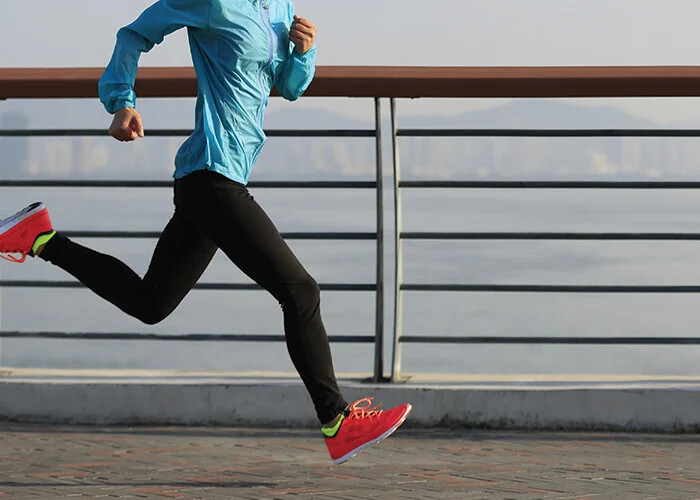
Two sets of five reps of 30 seconds sprint and 30 seconds rest, with five minutes rest between sets. If you are on an athletics track two sets of 5x 200m with 30 seconds rest between (five between sets)
A light, low-fatigue five to 10-minute warm-up jog should be done before starting this workout to get your blood flowing.
Each rep should be done at a speed sprint that you can comfortably hold for 30 seconds. You can use your mile or 800m pace as a frame of reference to start. Use the 30 seconds between reps to catch your breath and get ready for the next interval.
The first set should begin to feel hard after two or three reps in, but you should start to feel the lactic build-up in your legs after the second or third rep on the second set. The short amount of rest off high-intensity work improves your lactic tolerance over time.
High-intensity workouts like this are a great way to improve your top-end sprint speed but should not be done more than once or twice a week to avoid injury.
(06/30/2022) ⚡AMPby Marley Dickinson
Workouts to build speed when you’re short on time
We’ve all heard it before: consistency is key. While you know the basics–get out the door regularly, do most of your running slow and a little bit of it fast–even the best training plans go out the window sometimes when life happens. When you’re already mentally stressed, the last thing you want to worry about is losing fitness. Here are three shorter workouts you can slot into a busy schedule and still reap the rewards of a longer speedwork session.
Simple speedwork for time-crunched days
This adaptable workout can be thrown into any athlete’s training plan, during any season. Take it to the trails for some hill work, or add more or fewer intervals depending on the time available.
Warm up with 10 minutes of easy running
10-15 x 1 minute fast, 1 minute easy
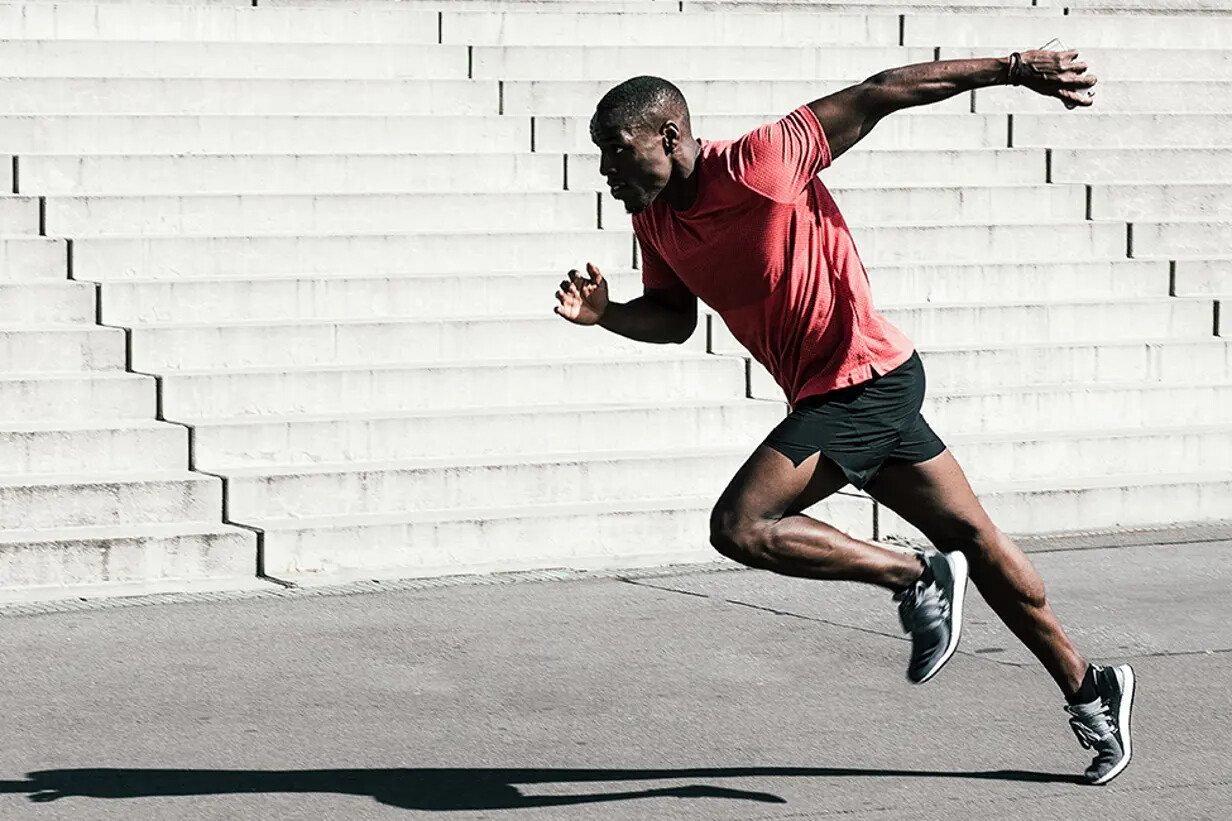
Cool down with 10 minutes of easy running
Tempo and speed combo
This workout bridges speed and strength, combining the tempo run (which helps to get you race-ready) with some quick intervals. The speed intervals are like the “fast finish” portion of some long runs–they will remind your legs they have a bit of kick left, while also making the workout just that little bit more challenging. Use the easy portion in the middle for a super slow, gentle (but short) recovery.
Warm up with 10 minutes of easy running
15- to 20-minute moderate tempo run, 5 minutes easy, 6-8 x 30 seconds fast/30 seconds easy
Cool down with 10 minutes of easy running
30-minute sustained effort on mixed terrain
Try to do this workout on a trail or road that has some climbs and descents, or even program a treadmill with a variety of inclines. If you’re stuck somewhere flat without a hill in sight, you can certainly still benefit. Keep that one-hour effort in mind, and try not to go faster–you want to prep your body for race pace without overdoing it. You can add a warmup and cooldown to this one if you have time, running easy for five to 10 minutes at both ends.
Make sure the day following any of these sessions is rest or easy running. You can count on these workouts to give you the training effect of a longer session and can substitute them into your schedule whenever you’re short on time.
(06/29/2022) ⚡AMPby Keeley Milne
George Hirsch is passing the baton to Nnenna Lynch after 18 years at the NYRR
George Hirsch sent this message to My Best Runs today and others. "I am writing this to tell you that I will be stepping down as Chairman of New York Road Runners on June 30, 2023 after serving eighteen years in that role," wrote George.
"As one who has been involved with this extraordinary organization for more than five decades, it has been an honor and the privilege of a lifetime to have worked with such a diverse and talented team of people. The memories and adventures are too numerous to recount and we can save them for another day."

"However now is the time to look ahead and I’m thrilled that Nnenna Lynch (photo) will succeed me as Chairperson. She is truly the ideal person for the role: an elite runner who won several NCAA Championships at Villanova, she has an extensive background in business and community engagement as well as working for the City of New York during the Bloomberg administration."
"Oh, and did I say that she was a Rhodes Scholar among her many achievements? During this next year, Nnenna and I will be working closely to assure a smooth and positive transition for our beloved NYRR. And then I will become Chairman Emeritus, cheering on my passionate colleagues as they continue to find new ways to help and inspire people–all people–through running," onward George.

Nnenna Lynch was born July 3, 1971, in New York City, New York) and is a retired middle distance and long distance runner from the United States.
She won the gold medal at the 1997 Summer Universiade in Catania, Italy in the women's 5,000 metres event.
In January 1998, she placed first at the US world cross-country trials in Orlando, qualifying her to represent the country at the 1998 IAAF World Cross Country Championships at Marrakech, where the US women's team finished 5th.
She currently lives in New York with her husband Jonathon Kahn and two young children.
"The New York Road Runners has done as much as any other organization to promote running at all levels around the world. Their New York City Marathon is considered one of the best marathons in the world. Under the leadership of George Hirsch, the NYRR grew to what it is today," says Bob Anderson (MBR publisher and RW founder) who has known George for over 50 years.
"Good luck Nnenna Lynch in this transition and we look forward to seeing the continued success of the NYRR under your leadership," stated Bob Anderson.
(06/29/2022) ⚡AMPQualification period ends for World Athletics Championships Oregon22
Some 1900 athletes have qualified to compete at the World Athletics Championships Oregon22 from July 15-24.
The qualification period for individual track and field disciplines closed on June 26, following a busy weekend of national championships action, while the invitation process for relays ended on June 28.

About 63 percent of athletes have qualified by entry standard, 33 percent by world ranking position and four percent by designated finishes in qualifying competitions (such as area championships). 75 countries are expected to enter athletes through universality places.
The Road to Oregon tool on the World Athletics website shows which athletes – subject to being officially selected by their member federation – have qualified to compete at the World Championships, either by entry standard or world ranking position within a discipline’s quota.
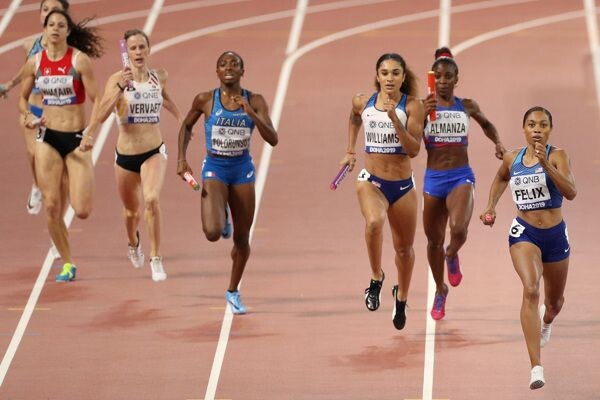
The tool identifies the first three qualifiers per nation (in bold) but any athlete who has qualified can be selected within the limit of three per nation. As this is a qualification monitoring tool, not an entry monitoring tool, it won't highlight which athletes have been officially selected by their member federation, but team announcements of many of the leading nations will be published on the World Athletics website in the weeks leading up to the championships.
Member federations have until the entry deadline of July 4 to submit their final selections.
World Athletics president Sebastian Coe said: “The end of the qualifying period is an important milestone on the way to our World Championships and the final qualified list is a good indicator of the unparalleled strength of our sport around the world. I’m delighted to see that almost 200 countries have qualified athletes for the pinnacle event in our sport. As we begin the final countdown to the start of the World Championships in just 16 days, I wish every qualified athlete the best of fortune and I hope to see you all at your best in Oregon.”
Wild card entries are offered to all individual winners from the World Athletics Championships Doha 2019, along with the winners of the 2021 Wanda Diamond League and Combined Events Challenge. The acceptance of those wild card entries, however, rests with member federations. Only one wildcard can be used by a member federation in each discipline.
Several places in relay disciplines, meanwhile, were claimed at the World Athletics Relays Silesia 21.
(06/29/2022) ⚡AMPby World Athletics
World Athletics Championships Budapest23
Budapest is a true capital of sports, which is one of the reasons why the World Athletics Championships Budapest 2023 is in the right place here. Here are some of the most important world athletics events and venues where we have witnessed moments of sporting history. Throughout the 125-year history of Hungarian athletics, the country and Budapest have hosted numerous...
more...Why a DNF could be your best learning tool, here's how to use a bad race to your advantage
So you dropped out of a race–what can you learn from it? You may be surprised what you are able to take away from a less-than-ideal experience.
If you enter enough races, you’re bound to experience one that doesn’t go as planned. A DNF (did not finish) result can initially be heartbreaking, especially if you’ve been working up to your race for a long time. You can do everything possible to prepare for an event and still have a race day that doesn’t go well, particularly in longer distances like marathons or ultras. Stomach problems, hot weather, shoe issues—reasons for a DNF are wide-ranging. If you need a day to process your disappointment after a bad race, go for it: but no longer than that.
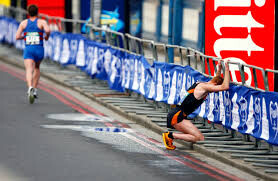
Revisiting your experience and looking at what you can learn from it can be a game-changer. You will head into your next race with greater insight, new ways to tackle problems and the mental toughness from experience that you simply wouldn’t have gained without struggle.
Consider where the problem started

Did you veer off your regular pre-race meal routine when out of town? Maybe you need to plan ahead so that you can have food you’re comfortable with available. Perhaps you went into the race without enough rest, or chose the wrong shoes for a particular course. By revisiting your race and looking for clues to where problems were initiated, you’ll often see that mistakes were made before you even laced up your shoes. Finding that critical first error can be helpful as you figure out how to spin your experience from a negative to a positive.
Pinpoint your weaknesses
It is easy to avoid reflecting on problem areas. For me, after running a race and becoming quite ill afterward with heat exhaustion, it was tempting to chalk it up to the weather, and not alter any of my training habits. Instead, I decided to take a good look at what I had failed to do during the race to adapt to warmer temperatures and increased hydration needs. As in many things, awareness is key. Make a list, and don’t be afraid to do the work: being honest with yourself about areas to improve is key to becoming a better runner. If you determine that your taper was inadequate, do some research and ask others for tips and suggestions.
Figure out what you need to change, and get to work
Now that you have an idea of things to work on, put them into practise now. If your problems were with nutrition, start troubleshooting nutritional strategies on long runs, or try out new food prior to training runs. Far better to have something go wrong during a training run than in a much-anticipated race. Digestion has always been one of my own challenges in longer races, so now I work on this on almost every run. Just being conscious of what I was eating before and after a run and noticing how it affected my performance was hugely beneficial to my race-day performance. The knowledge gains also gave me a pre-race boost in confidence.
A coach once told me that the only time a DNF was a bad thing was when the athlete didn’t make the experience an opportunity for growth. Sure, a poorly executed race day feels unpleasant at the time, but viewing it as a tool to enhance your future performance can turn it into a stepping-stone on the way to your next PB.
(06/29/2022) ⚡AMP
by Keeley Milne
Eliud Kipchoge launches cycling academy
The GOAT of marathoning has taken on a new project: a cycling academy. The two-time Olympic marathon champion and world-record holder Eliud Kipchoge announced on Instagram last week that, together with his partners INEOS and Global Sports Communication, the NN Running training center will now also host a cycling school. “I’m proud that we are expanding our Kaptagat-based training camp from a purely athletics focused training camp toward a wider kind of sports academy.
The INEOS Eliud Kipchoge Cycling Academy is a very natural fit, with great potential to enable our young talented cyclists to make the next steps toward the top level of cycling,” Kipchoge shared.
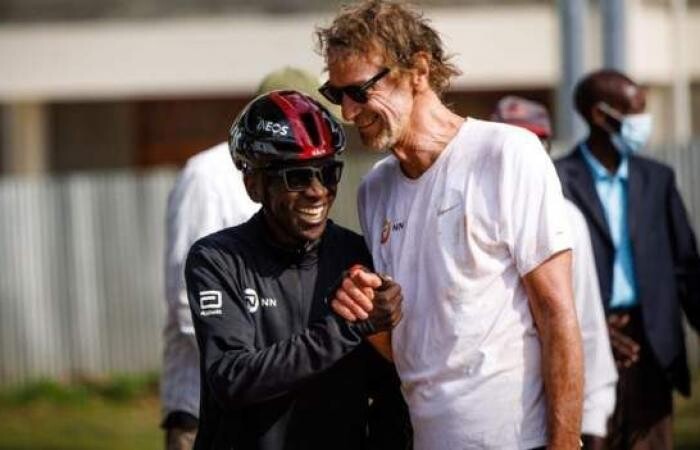
The cycling academy will employ some of the staff already on Kipchoge’s team and will be run by Kipchoge’s long-time partner Valentijn Truow, as reported by Cycling News.
Trouw, a Dutch citizen, has over three decades of experience working with long-distance runners in Kenya and a background in athlete management. Trouw said that he was excited to build what is a fairly undeveloped sport in Kenya, “in good harmony and collaboration with the Kenyan Cycling Federation, bringing together our collective knowledge and insights from running and cycling for the benefit of the sport.” Kenya had no full-time cycling professionals in 2022.

“We work with the great potential of east African long-distance runners for over 30 years, and I believe the exceptional local endurance talent combined with the great training environment at Kaptagat will be perfect for developing quality cyclists,” Truow added. “Working together with Sir Dave Brailsford, the INEOS Grenadiers Cycling Team and tapping into the broader INEOS sporting family will bring us the world’s best practice in competitive cycling.”
The INEOS Grenadiers Cycling Team is world-renowned, and it will be interesting to watch Kipchoge’s cycling academy grow through this high-level partnership. “This is a significant and exciting development in world cycling–it has the power to drive lasting change by developing new riders from Africa,” said Grenadiers manager Dave Brailsford.
(06/29/2022) ⚡AMPby Running Magazine
French 400m Hurdler Wilfried Happio wins title after being assaulted during warm-up
French athlete Wilfried Happio was warming up for his 400m hurdles race at the French Elite Athletics Championships when he was brazenly attacked by an anonymous assailant. Twenty minutes later, the 23-year-old was crowned national champion.
Shortly before the race’s start time, an individual snuck past security at Helitas Stadium in Caen, France and made his way onto the track, according to RCM Sport. The attacker located Happio as he was loosening up, asking the hurdler if he really was Wilfried Happio before landing several blows to his face. The reasoning behind the barrage is still unknown.
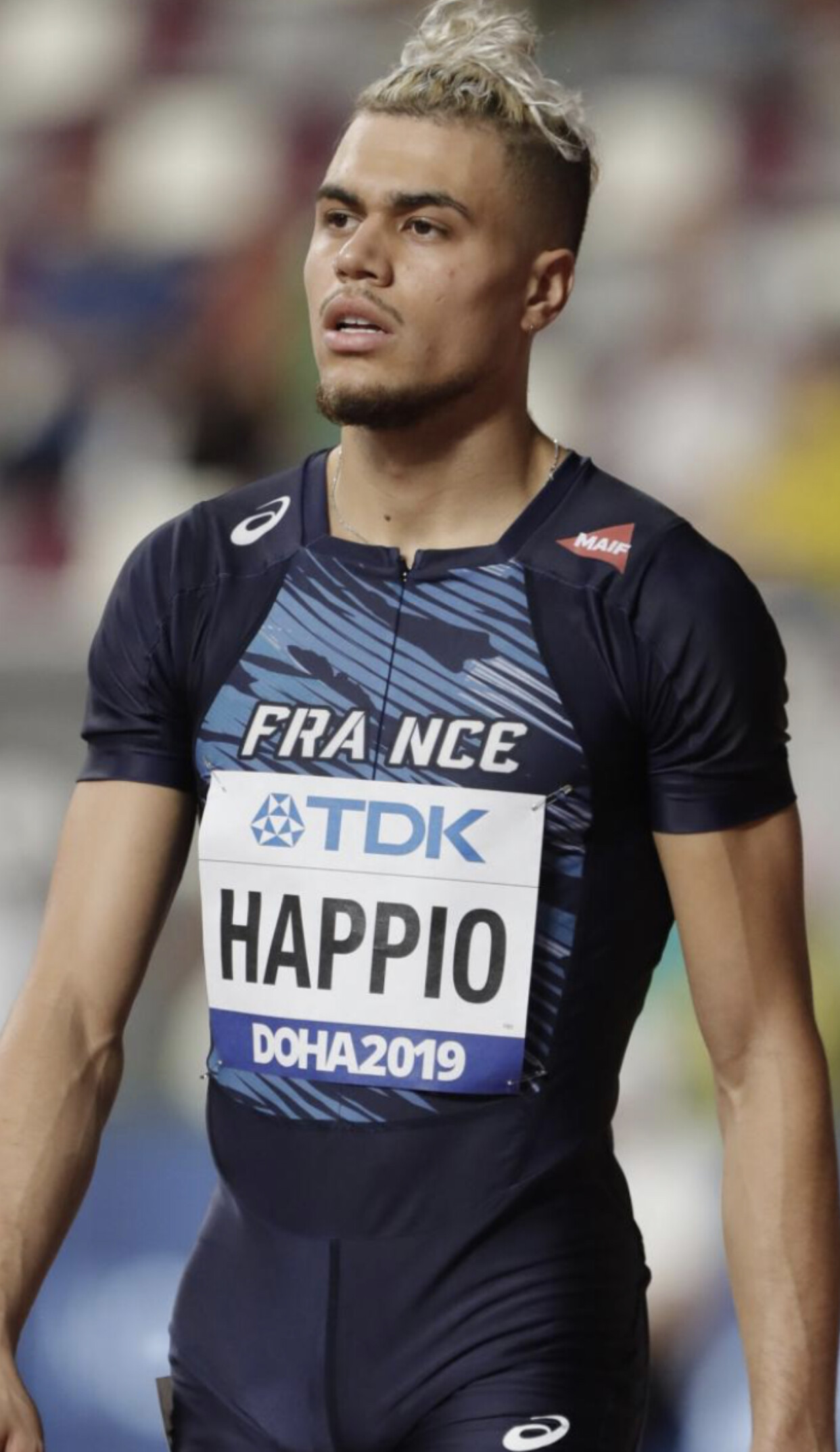
Olivier Vallaeys, Happio’s coach, swiftly came to his athlete’s aid, wrangling the aggressor and preventing further damage. Police later arrived at the scene to arrest the individual.

Happio was visibly shaken up by the seemingly random attack, even coughing up blood shortly before his event was set to take place. However, he declared himself fit to compete in the race.
Donning a makeshift eye patch made out of his headband and a spare bandage, Happio finished first in the 400m hurdles event, clocking in at 48.57 seconds – a personal record. Moments after crossing the finish line, the Parisian let out a thunderous yell, seemingly releasing the mixed cluster of emotions he garnered over the last hour. Despite blood dripping from his nose, Happio assured media post-race he was fine after the attack.
(06/28/2022) ⚡AMPThe perfect track workouts for newer runners
If you’re new to running, the track may seem daunting. Even if you’ve been running on roads or trails for some time, running on a track can be intimidating. But the track can be a useful tool, whether you’re a new runners or a seasoned athlete, and whether you’re a sprinter or a distance runner. Here are a few simple workouts to try during your first track sessions. Once you gain some experience, add repetitions to your workouts to make them more challenging.
Hard/easy 400m intervals

Warm up with a 10-15 minute easy run
Run one lap (400m) at a hard, but controlled effort, around 3K pace–you’ll be moving quickly enough that talking would be uncomfortable, but you’re definitely not in a full-on sprint

Take 400m to recover, either by running or walking at an easy pace
Repeat 4-6 times
Cool down with a 10-minute easy run
Ladder workout
A ladder workout is an interval session that increases in distance with each “rung” and then decreases, as if you are climbing up and down a ladder. As you progress in fitness and confidence at the track, add more rungs to your ladder.
Warm up with a 10 minute easy run
Run 400m hard (3K pace), 400m easy
Run 800m hard, 400m easy
Run 1,200m hard, 400m easy
Run 800m hard, 400m easy
Run 400m hard, 400m easy
Cool down with a 10-minute easy run
100-meter sprint workout
For this workout, you’ll sprint on the straight parts of the track, and do an easy run or walk on the curves to recover.
Warm up with a 10-minute easy run
Run 100m sprint, 100m easy
Repeat 8 times, or 1,600m
Cool down with a 10-minute easy run
Make sure to take an easy or recovery day after a track workout, and to rehydrate.
(06/28/2022) ⚡AMPby Running Magazine
Dina Asher-Smith will launch the defence of her 200m title at world championships
Dina Asher-Smith set for 200m defence as part of GB’s World Championships squad.
The 26-year-old, Katarina Johnson-Thompson and Keely Hodgkinson headline the 64-strong team for the competition in Eugene, Oregon, in July.

Asher-Smith won gold in Doha three years ago, having collected 100m silver, before going on to also secure silver in the 4x100m relay, and will look to improve on that haul in the United States.
She is expected to run at the Stockholm Diamond League meet on Thursday in her final race before the World Championships, which were rescheduled from last year after the postponement of the Tokyo Olympics to 2021 due to the coronavirus pandemic.
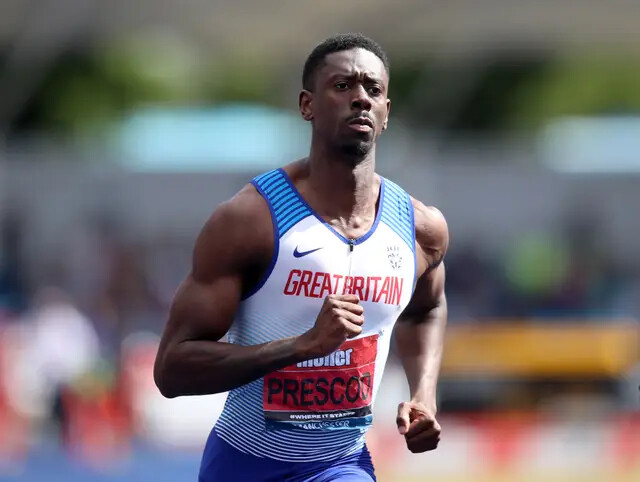
Outgoing Olympic head coach Christian Malcolm said: “We’ve seen a number of athletes step up on the global circuit so far this season, which has been really encouraging.
“We are confident that we’ve selected a team that optimises medal success and that have the ability to progress through rounds to reach finals.
“The World Championships is the start of a very busy summer of Championships and Games, so there are a number of opportunities for athletes to represent their country this summer.
“For those who have been selected for the team for Oregon, I wish the athletes and their coaches the best over the next week or so and to keep focus to achieve your goals.”
Daryll Neita, who reached last year’s Olympic 100m final and beat Asher-Smith in Manchester at the weekend to become British 100m champion, is also included for the 100m and 4x100m.
Despite winning the 200m at the British Championships on Sunday, however, 25-year-old Neita does not have the time for 200m qualification, with Asher-Smith joined by Beth Dobbin.
Johnson-Thompson missed the Manchester championships at the weekend but will look to defend the heptathlon world title she won in 2019.
The 29-year-old has been dogged by injury for 18 months since rupturing her Achilles in late 2020 and pulled out of the Olympics having suffered a calf problem in the heptathlon’s 200m.
Hodgkinson, who is expected to challenge American Athing Mu for 800m gold, is included along with Laura Muir, with the Scot aiming for her first World Championships outdoor medal after claiming 1500m silver in Tokyo last year.
Hodgkinson is joined in the 800m by Alex Bell and Jemma Reekie while Holly Bradshaw, who won Olympic bronze last year, will contest the pole vault.
Zharnel Hughes and Reece Prescod are Britain’s hopes in the men’s 100m with Nethaneel Mitchell-Blake and Adam Gemili in the 200m.
Prescod ran 9.93 seconds in Ostrava last month to leave him 11th fastest in the world this year but he remains well behind world lead Fred Kerley, who posted 9.76 seconds at the US trials at the weekend.
All four are in the men’s 4x100m relay squad, with Hughes and Mitchell-Blake aiming to ease their heartbreak having been stripped of their Olympic relay silver after CJ Ujah’s positive drugs test.
They are joined by Harry Aikines-Aryeetey, new British 100m champion Jeremiah Azu and Jona Efoloko.
Asher-Smith, Dobbin, Neita, Imani-Lara Lansiquot, Ashleigh Nelson, Asha Philip and Bianca Williams make up the women’s 4x100m squad.
Max Burgin, the fastest man in the world over 800m this year, won the British title on Sunday to seal his place.
World Athletics will publish its final world rankings ahead of the Championships on Wednesday, meaning there are likely to be a number of additions to the squad based on rankings.
The World Championships sparks a frantic summer with the Commonwealth Games in Birmingham starting days after the end of competition in Eugene and then the European Championships in Munich in August.
(06/28/2022) ⚡AMPWorld Athletics Championships Budapest23
Budapest is a true capital of sports, which is one of the reasons why the World Athletics Championships Budapest 2023 is in the right place here. Here are some of the most important world athletics events and venues where we have witnessed moments of sporting history. Throughout the 125-year history of Hungarian athletics, the country and Budapest have hosted numerous...
more...Will taking cold showers /baths improve your running performance?
Ice baths have long been a go-to for runners hoping to improve recovery time and ease sore muscles and are a favourite topic of debate within the running community. Cold showers have recently taken over the conversation, as neuroscientists like Andrew Huberman say they may offer benefits both for your athletic ability and everyday life. While Huberman says cold plunges are the most effective way to maximize cold exposure, if you don’t have a frigid river out your back door, a cold shower is a worthwhile alternative. Here’s a few reasons why turning that shower dial all the way over and freezing for a few moments can help you be a better runner.
Cold showers (or plunges) improve resilience

One his podcast Huberman Lab, the neuroscientist and Stanford professor says that getting very cold for only a few minutes per week develops mental grit. By intentionally placing yourself in an uncomfortable environment for a few moments at a time, your brain learns how to regulate your mind and internal state under conditions of stress (when the stress hormones adrenaline and noradrenaline are elevated in your body). When you’re running a hard race or training workout, no matter the distance, mental toughness is often what gets you through. “Deliberate cold exposure is an opportunity to stress our body on purpose, and learn to maintain mental clarity and calm while our body is in a state of stress,” says Huberman.
Mental performance can be improved with deliberate cold exposure

Deliberate cold exposure directly impacts the release of the feel-good neurotransmitter dopamine. The release of dopamine, or the “high” that people get from cold plunges or a regular cold shower practice, is what studies say keeps people coming back. That feeling lasts much longer than the cold shower does. Huberman explains: “any stimulus that delivers more adrenaline, noradrenaline, and dopamine to our system will sharpen our mental acuity and elevate our mood and will do so for a while.” He says the dopamine reward from a cold shower is similar to that from nicotine exposure, and will last much longer.
They can help with recovery if you time them correctly
Huberman says cold therapy can be effective to help with recovery, immediately after exercise. “Shorter durations of cold water exposure after training have been shown to improve outcomes in terms of reducing soreness and improving training efficacy,” he explains. While he doesn’t recommend full-body immersion for at least four hours after training if you have a strength-based goal, cold showers are fine.
By getting really cold for less than 12 minutes a week, you may be able to boost your mental stamina (both in running and when facing hard life situations), increase happy brain chemicals, and lessen recovery time. Huberman suggests timing cold showers as early in the day as possible to capitalize on the wakefulness and alertness that results, and to avoid having them very late in the evening and potentially disrupting sleep.
(06/28/2022) ⚡AMPby Keeley Milne
How to handle the summer sweats, use these tips to manage excessive sweating on summer runs
Now that summer is in full swing across Canada, temperatures are soaring. Summer running can be fun, but it can be tough to find the right time of day to get out without being drenched in sweat. There’s no need to feel self-conscious about how much you sweat–it’s your body’s way of preventing overheating–but here are some ways to manage your sweat glands for maximum freshness.
Dress for success

Before heading outdoors, check current weather conditions, forecast and humidity If conditions are hot and humid, choose a moisture-wicking fabric like polyester, polypropylene or nylon. The development of technical fabrics has been a boon to runners!
Socks made of merino wool or a polyester blend are more effective at absorbing sweat than other synthetic materials.
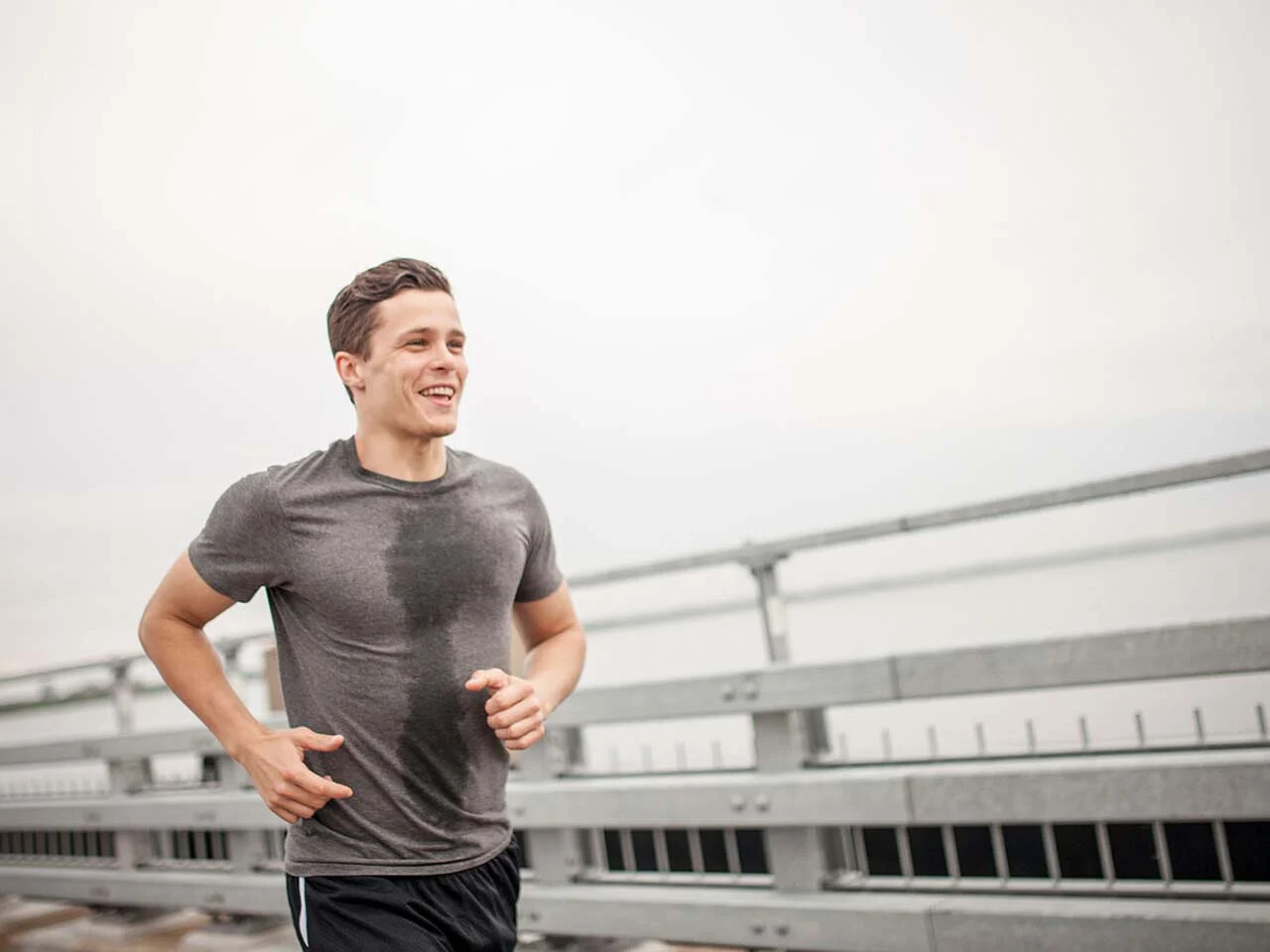
To maximize comfort while running, always dress for 10 degrees warmer than the air temperature.
Cut back on caffeine
While a majority of Canadians can’t live without their morning Tim Horton’s, caffeine may not be the best thing for your sweat glands. According to the Mayo Clinic Institute, “Caffeine stimulates your central nervous system, which activates your sweat glands.” Caffeine elevates your heart rate, and sweating uncontrollably is not an uncommon side effect of overconsumption. If you are trying to sweat less, try cutting back on your daily coffee intake. (The recommended daily maximum for healthy adults is 400 mg per day–about four cups of coffee.)
Use antiperspirant
If you’re only using deodorant to tame your pits while you work out, it won’t do much. All deodorant does is mask unpleasant smells; antiperspirant helps reduce sweating by plugging your sweat glands with aluminum salts. Some athletes will put on antiperspirant the night before their run to allow it to absorb into their sweat glands and prevent sweat the following day.
Stay cool
Some final tips for staying cool in summer:
place a small bag of ice on your head or neck before you run.
Stay well hydrated throughout the day.
Change up your usual route and head into the trails to find some shade.
(06/28/2022) ⚡AMPby Marley Dickinson
Highlights from the 2022 USATF Outdoor Championships June 26
The USATF Outdoor Championships at Hayward Field in Eugene, Oregon have finished and the athletes set to represent Team USA at the World Athletics Championships have been decided. Over four days, there was a world record set and plenty of great battles for the limited spots on the world team.
The World Athletics Championships will be back at Hayward Field from July 15 to July 24. It will be the first time the United States is hosting the meet.
Here are the highlights from the 2022 USATF Outdoor Championships.
Cranny wins a close one in the 5,000 meters

After a schedule change to avoid hot conditions, the women’s 5,000 meters opened the final day of the USATF Outdoor Championships. Unfortunately, the women couldn’t completely escape the heat—the temperature on the track read 82 degrees.

As a result, the women dawdled, running most of the race in a tight pack. With 1600 meters remaining, Karissa Schweizer—who placed fourth in the 1500 meters on Saturday—picked up the pace. With two laps, four women separated themselves: Schweizer, indoor American record holder Elise Cranny, world championships bronze medalist Emily Infeld, and Weini Kelati. Kelati fell off the group by the bell, and the top three were set. Now, it was a battle for place.
Schweizer, Cranny, and Infeld battled down the final straightaway, trading leads multiple times. When the dust settled, Cranny earned the victory, with Schweizer and Infeld less than a half second behind in that order.
Each woman completed their own unique narrative coming into the race. Cranny scratched from the USATF 10,000-meter championships on May 27, saying in an Instagram post she hadn’t been feeling like herself in training. Schweizer, who did qualify for the 10,000 meters, also placed fourth in the 1500. With this 5,000-meter performance, she completed one of the best championship runs in U.S. history. Finally, after just missing out on qualifying for the 10,000-meter world team, Infeld earned a spot on her first global championship team since 2017.
Fisher takes down 5,000 meet record, Kincaid unleashes furious kick for second
Conversely to the women’s race, the men’s 5,000 meters went out hard. Hillary Bor, who qualified for the steeplechase team on Saturday, kept checking his watch—apparently pacing the race. Multiple time global medalist Paul Chelimo and Bowerman Track Club teammates Grant Fisher and Woody Kincaid held position right behind Bor.
Bor dropped out at 1800 meters after splitting 4:12 for the mile. Evan Jager, who also qualified for the steeplechase world team, led the men for another mile. Fisher, Emmanuel Bor, and NCAA indoor 5,000-meter champion Abdihamid Nur of Northern Arizona quickly separated from the group after Jager dropped out.
Over the final 1200, Fisher put on a clinic, squeezing the pace over each lap until he was all alone. He won the race in 13:03.86, a meet record.
The most exciting portion of the race occurred offscreen. After trailing the top three by five seconds with 400 to go, Kincaid unleashed a monstrous 54.24 final lap to take silver in a time of 13:06.70. Nur held on to earn his first world championship berth, running 13:08.63. Emmanuel Bor faded to fifth.
Coburn claims eighth straight U.S. steeplechase title
After a moderate first 1,000 meters, four women were clear of the pack in the women’s steeplechase: recent NCAA champion Courtney Wayment, Gabi Jennings, six-time U.S. champion Emma Coburn, and Olympic silver medalist and American record holder Courtney Frerichs.
That group whittled down to Wayment, Coburn, and Frerichs by 800 to go. Half a lap later, Coburn quickened her pace. Wayment and Frerichs, perhaps surprised by the move, didn’t go with Coburn, who put more and more distance on them over the final lap. Coburn notched her eighth consecutive U.S. title in a season best of 9:10.63. Wayment finished second, and Frerichs took third.
Ajeé Wilson nearly upsets the defending Olympic champion The women’s 800 meters promised to be the event of the meet, and it didn’t disappoint.
Athing Mu, defending champion, jumped off the line hard to take her traditional spot in the lead. Olivia Baker and indoor world champion Ajeé Wilson were right on her heels while Olympic bronze medalist Raevyn Rogers hung around mid-pack.
All of the women were still together with 200 to go. The broadcast commentators predicted that Mu would break the race open before the end of the bend, but spectators were treated to something more interesting: Wilson was right on Mu’s shoulder with 100 to go. With gritted teeth, the two athletes dashed neck-and-neck down the straightaway. It looked as if Wilson had the upper hand, but the Olympic champion pulled through in the final meters to snag the victory in 1:57.16. Rogers slingshotted out of the pack to pass three runners for third.
Bryce Hoppel earns first outdoor national title
The men’s 800 meters featured a consequential last 100 meters. Texas A&M’s Brandon Miller set a fast early pace, crossing the 400-meter mark in 51.62. He fell to second as Hoppel took control on the final bend.
It wasn’t over yet, as the entire field was still in striking range with 100 left. But Hoppel and Jonah Koech surged ahead, while Miller duked it out with a late-charging Clayton Murphy for the third qualifying spot. Miller overtook the two-time Olympian with a dramatic dive at the line, securing a trip to worlds. Hoppel’s winning time was 1:44.60, a season best, while Koech’s ran a personal best of 1:44.74.
Noah Lyles charges late to overtake 18-year-old star Erriyon Knighton
After 100 meters, it looked like 18-year-old Erriyon Knighton was on his way to his first national championship. But that’s why there’s another 100 meters in this event, because defending world champion Noah Lyles found another gear. With a smile and finger pointed at Knighton, Lyles broke the tape first in 19.67. Knighton finished second, while 100-meter national champion Fred Kerley nabbed another world team spot. Because Noah Lyles has a bye to the world championships, fourth-placer Kenny Bendarek also qualified.
NCAA champion Abby Steiner becomes U.S. champion
With defending U.S. champion Gabby Thomas in poor form this year, the gate was open for a new women’s 200-meter champion. Abby Steiner, who won the NCAA title two weeks ago, capitalized on that opening. She won the title with a world lead and personal best of 21.77. Tamara Clark and Jenna Prandini qualified as well with their respective second and third place finishes.
(06/27/2022) ⚡AMPby Runner's World
USATF Outdoor Championships
With an eye toward continuing the historic athletic success of 2022, USATF is pleased to announce competitive opportunities for its athletes to secure qualifying marks and prize money, including a new Grand Prix series, as they prepare for the 2023 World Athletics Championships in Budapest, Hungary.As announced a few months ago, the 2023 Indoor Championships in Nanjing, China have been...
more...Do this to improve your running form in seconds, Use this quick check-in to run more efficiently right now
If you’re looking to improve your running form, you’ll find no shortage of information. Entire books devoted to proper footstrike, gait analysis sessions and shoes promising to fix your bad habits are all popular (and expensive). Insert a minute focused on form into your training sessions regularly, and you’ll soon be running more smoothly by habit. Your natural form will become more loose and efficient, with minimal effort or cost. Here’s a quick rundown on how to check and improve your form in under 60 seconds.
Relax
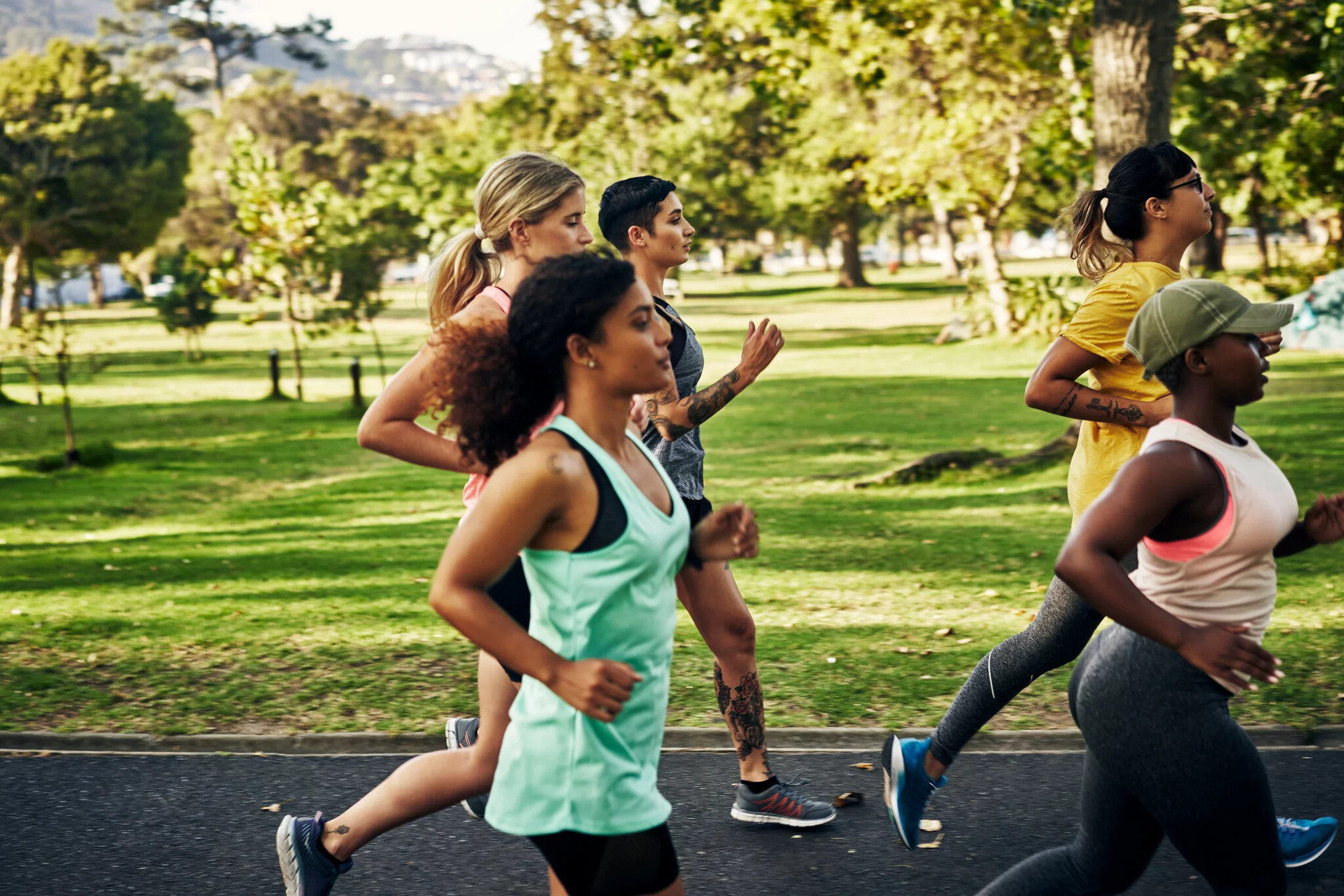
It sounds simple, but it can be tricky, especially if you’re running at a challenging pace or experiencing life stress. Both will carry over to tension in your body during a run, a common form-destroyer. If you’ve ever ended a running workout and discovered that your arms and shoulders were sore, you’ve fallen prey to this common issue. By taking a moment to consciously relax your face, drop your shoulders and give your arms a shake-out, you can release any tight spots and give yourself a reset.
Don’t lean too far forward, or back

When fatigue sets in, it’s easy to stop paying attention to the way you’re carrying yourself. At the very end of ultras, you can usually see a few people coming in with “the lean,” an exhausted-looking forward slant. After you’ve shaken out your arms and relaxed your face, check in with your carriage. You might find it most comfortable to lean slightly forward while running: that’s fine, as long as you aren’t compromising your ability to breathe easily. If you find yourself overstriding, or your feet are connecting with the ground in front of your body, you need to adjust. Imagine the crown of your head reaching skyward, or envision yourself as a puppet with a piece of string stretching up through the top of your head. Keeping your gaze focused forward rather than down can help you find your natural running stride.
Breathe deeply
Using your breath as a tool can take some practice, but simply taking a couple of deep breaths improves your oxygen intake immediately. If you’ve ever tried yoga, you are probably familiar with “belly breathing” or diaphragmatic breathing: inhale through the nose while expanding your abdomen, then exhale deeply through your nose or mouth. Deep breathing will help your body relax, and with a bit of experience, you’ll find yourself belly-breathing naturally, even in hard runs and races. If you notice breathing deeply is a challenge during your one-minute form check, try adding a few minutes of belly-breathing practice before or after your run.
(06/27/2022) ⚡AMPby Running Magazine
Abby Steiner storms to 200m win at US Championships
There’s no place like Hayward Field for US athletes, who completed their national championships on Sunday (26) in what was essentially a trial run for the World Athletics Championships Oregon22 next month.
Abby Steiner had the race of her life in the women’s 200m, while 400m hurdler Rai Benjamin and shot putter Chase Ealey moved atop the world lists on another hot day at the US Championships in Eugene.
For Steiner, Hayward Field is definitely in her comfort zone. She lowered her PB to 21.77 while earning her first national crown just 15 days after shattering the collegiate record and taking the world lead with a 21.80 amid cooler temperatures at the NCAA Championships. The University of Kentucky sprinter equalled that time in the semifinals at the US Championships.

“The main focus was just to come away with a win, make the team,” said Steiner, whose performance was another world lead until Shericka Jackson ran 21.55 at the Jamaican Championships. “It was nice having had NCAAs at this track; it was kind of a familiar environment so I knew if I replicated my race that I had at NCAAs with nicer weather, we were going to walk away with a PB.”
Steiner will return to Eugene along with the other US athletes who qualified for the World Athletics Championships Oregon22 in less than three weeks, no doubt to enjoy their home field advantage. The World Championships are taking place on US soil for the first time.

While Steiner wasn’t as dominant in the first 50 metres, she grabbed the lead with 40 meters to go, defeating Tamara Clark, who ran a PB of 21.92. Olympian Jenna Prandini, who came off the curve in first place, ran a season's best of 22.01 on her college alma mater’s track.
Olympic bronze medalist Gabby Thomas placed eighth in 22.47 after battling a hamstring injury the past two weeks, while Sha’Carri Richardson did not advance to the final.
Steiner was smiling with her arms outstretched as she crossed the finish line into a slight headwind.
Steiner said the win means “Everything.”
“Coming off the collegiate season, a lot of people want to put limitations on you and say you’re going to be burnt out,” she said.
Steiner definitely proved she still has momentum.
(06/27/2022) ⚡AMPby World Athletics
USATF Outdoor Championships
With an eye toward continuing the historic athletic success of 2022, USATF is pleased to announce competitive opportunities for its athletes to secure qualifying marks and prize money, including a new Grand Prix series, as they prepare for the 2023 World Athletics Championships in Budapest, Hungary.As announced a few months ago, the 2023 Indoor Championships in Nanjing, China have been...
more...Americans Leonard Korir and Keira D’Amato Sweep Titles at 2022 B.A.A. 10K
It was an American sweep at the 2022 B.A.A. 10K presented by Brigham and Women’s Hospital, with Leonard Korir (28:00) and Keira D’Amato (31:17) winning the professional open divisions and Susannah Scaroni and Hermin Garic capturing the wheelchair crowns. The pace was as hot as the weather, with the wily veteran Korir setting a personal best and Scaroni shattering the wheelchair world record for the distance.
“It feels really nice!” said Scaroni, who won a gold medal at 5,000 meters in the 2020 Paralympics but two weeks later was struck by a car while training. “It’s always great to be at a race where they’re trying to make it world-record eligible.” Scaroni broke the tape in 21:56, shattering Tatyana McFadden’s previous mark of 23:34.

As pleased as she was with the record, Scaroni was also excited to win the race outright. Asked if she had ever been the first wheelchair athlete, man or woman, across the line, she beamed. “Oh no, never! I didn’t expect that at all.”
Winning the men’s wheelchair race was Boston Marathon veteran Hermin Garic, in 22:07. “It feels awesome, coming back to Boston.”

In the men’s open division, a pack of 17, led by Bravin Kiptoo, went through the first mile in a scorching 4:21.
“When I saw the first people were so fast, I knew they were going to pay,” said Korir, a 2016 Olympian who has already won national titles this year at the half marathon and 25K. “It was like suicide. I said, ‘let me just hang in there and strike when the time comes.’”
The men ran the second mile in 4:24, but had slowed to 4:37 by the fifth. By that time, it was Kennedy Kimutai and Korir running neck-and-neck. “With a mile to go, I realized I was feeling so strong. I said, ‘let me just go now.’”
He would surge ahead to win in 28:00, nine seconds faster than the personal best he set on this course in 2014. Kimutai would finish second in 28:07, with Philemon Kiplimo third in 28:09. American Ben True was fourth in the same time; Ben Flanagan, fifth in 28:11, set a Canadian 10K record and also set a national mark through 8K in 22:30.
In the women’s race, D’Amato said that her goal was to race aggressively and go after the pace. Mission accomplished: A pack hit mile 1 in 5:05, but by mile 3 (reached in 15:08) she and Kenya’s Sharon Lokedi were gapping the field. As they battled, they ran mile 4 in 4:29, 30 seconds ahead of their chasers.
“We were battling it out,” said D’Amato, who in January broke the American record for the marathon when she ran 2:19:12 in Houston. “That was a fierce duel. With 1200 [meters] to go, she was breathing really hard and I just went by her.” Lokedi succumbed to the heat and humidity on Charles Street roughly 200 meters from the line and would not finish.
American Emily Sisson finished as runner-up in 32:03, with the 42-year-old Edna Kiplagat, the 2017 Boston Marathon champion, third in 32:09.
Claiming the inaugural B.A.A. 10K Para Athletics Divisions were Adrianne Haslet (1:15:19) and Marko Cheseto Lemtukei (35:44) for T61-T64 (lower limb impairment) classification and Erich Manser (50:49) and Jennifer Herring (45:41) in the T11-T15 (vision impairment) classification. Haslet earned the title on her birthday, and was exuberant at the opportunity to win on the road of Boston.
“To not just be invited to run a race, but invited to compete means that we’re being included among some of the world’s best runners with the world-class B.A.A. as hosts. It can’t get much better than that,” said Haslet.
Approximately 5,146 participants crossed the finish line of today’s B.A.A. 10K. Brigham and Women's Hospital, the B.A.A. 10K’s presenting sponsor and exclusive fundraising partner, fielded a team of more than 350 fundraising runners. Since 2016, more than 2,100 runners and 180 teams have raised $1.2 million to fuel life-giving breakthroughs at Brigham and Women’s Hospital through the B.A.A. 10K.
The third and final event of the 2022 B.A.A. Distance Medley will be the B.A.A. Half Marathon presented by Dana-Farber Cancer Institute and the Jimmy Fun on Sunday, November 13. Registration is currently open within the B.A.A.’s online platform, Athletes’ Village.
(06/27/2022) ⚡AMPB.A.A. 10K
The 6.2-mile course is a scenic tour through Boston's Back Bay. Notable neighborhoods and attractions include the legendary Bull and Finch Pub, after which the television series "Cheers" was developed, the campus of Boston University, and trendy Kenmore Square. ...
more...Why you should try a backyard ultra
The creator of the backyard ultra, Lazarus Lake, sums his event up perfectly: “We run in the backyard for many different reasons. We run because it is fun. We run to socialize with our friends (old and new). We run to go further than we have ever gone before.” Whether you are an experienced trail runner or completely new to the scene, a backyard ultra is worth experiencing. Lake hosts the most famous backyard ultra, Big’s Backyard, but you don’t need to have your hopes set on Big’s to try out one of the many backyard races hosted each year.
Backyard ultras follow a simple rule: runners start every hour on the hour, and follow a 6.706 km course. Pace doesn’t matter, as long as you finish the loop before the one-hour cutoff and are ready to start the next loop on time. After runners finish each loop (or “yard” as it’s called in a backyard race) they may rest, eat, refuel, cry—the options are endless. Racers must simply be at the starting line ready to run every hour on the hour until only one runner is left. A backyard ultra can go on for many hours or even days, with current record holder Merijn Geerts boasting 90 laps, or 600 km. While that might sound daunting, a backyard ultra can be a unique and valuable experience for any runner, regardless of distance and time goals. Here’s why you should sign up for one this season.
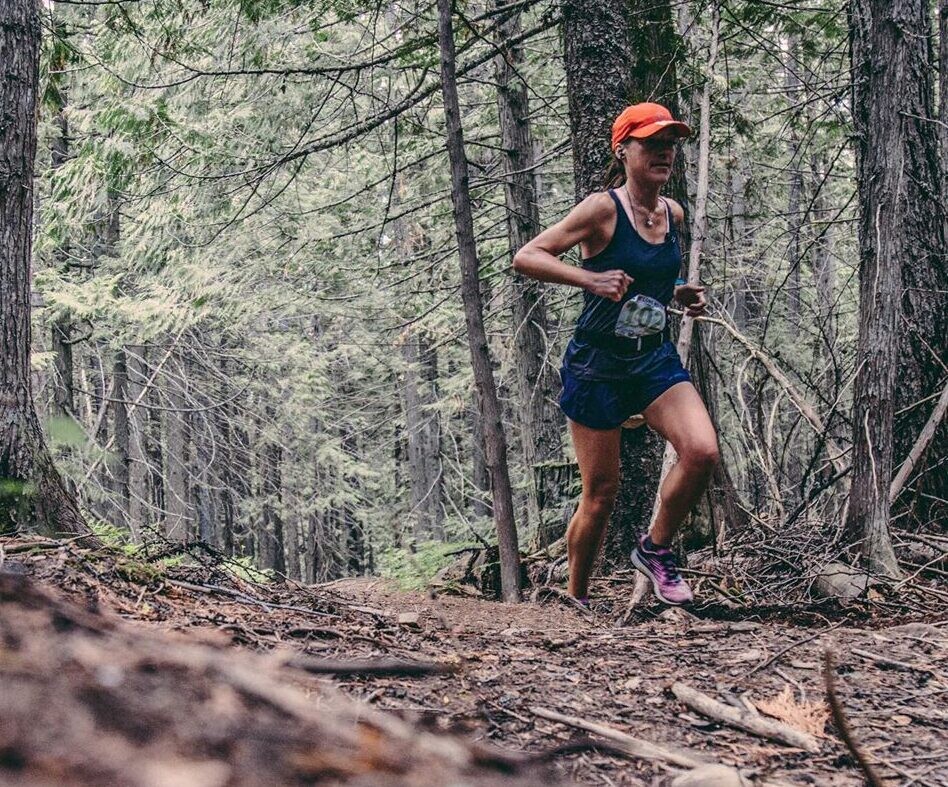
It doesn’t matter how fast or far you run
I ran three loops at my first backyard race–not remotely close to an ultra distance, despite the word being in the race name. Recovering from an injury and just starting to add mileage, I knew I was done just shy of a half-marathon. I had never been to an endurance event of this kind, and I hung around after to soak in the atmosphere. I wasn’t the first person to drop out. At the end of a backyard race, every single person aside from the winner takes a DNF (did not finish). There’s no second place; everyone is equal.
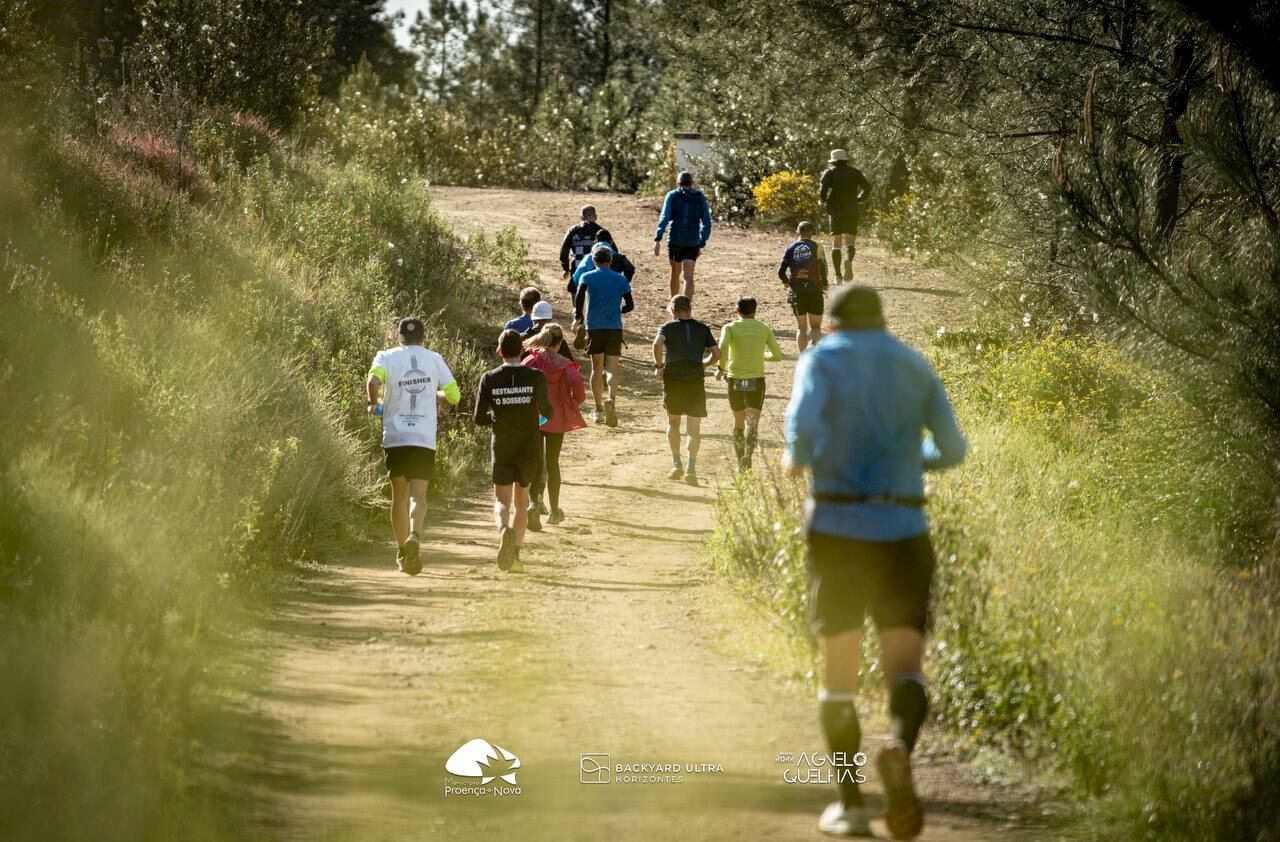
Running fast at a backyard ultra sounds like a positive—lots of time to recover, right? Many of the top backyard athletes actually run very slowly, even taking walk breaks, to minimize the toll on their bodies and extend their ability to run for hours (or days). There are very few perks to running quickly through the course and burning through your energy, fuel, and enthusiasm. If you are usually a back-of-the-packer, you’ll find you’re never alone.
It’s the perfect place to learn and practice troubleshooting
Most runners have experienced a less-than-ideal racing situation. From wardrobe malfunctions to GI distress, if you run long enough, you’ll have to work through an issue of some kind. In a backyard ultra, because you’re with your crew and around aid stations after each loop, you have the perfect opportunity to practise handling situations as they arise. If you’re training for an ultra, this can be essential. Not only are you only a maximum of 6.706 km away from your crew if your shoelace breaks or you start to feel sick; but you also get to experience handling potential setbacks on the fly. Backyard ultras often have both a daytime course, run on trails, and a nighttime course, on road or smooth paths that are safer during the dark hours.
My mom crews me at most of my races, and instead of trying to anticipate what I would need when I came flying into an aid station (as is usually the case), I was able to ask her to have something ready for me when I came back in from my loop. There’s a mental boost to knowing you only have to run 6.706 km and you’ll find fresh clothing prepped for you, or the snack you’ve been craving.
You’ll experience a community like no other
Backyard ultras are unique in that you’re always fairly close to the rest of the group, as well as the crowd and crew. A team atmosphere emerges, since a backyard racer can only go as long as their “assist” or the second-place finisher, runs. Racers need one another in order to keep going, and the larger the crowd, the more fun. If you make it until the nighttime loops, you will find that team atmosphere growing stronger, as runners personally battle their own fatigue and desire to stop running when darkness takes over. In my most recent backyard race, the inaugural Lewiston Backyard Ultra in Salmon Arm, B.C., it was most certainly the camaraderie among the runners that kept me moving through the night. One particularly cheerful (and renowned backyard athlete) Matt Shepard, of Valleyview, Alta., performed a resounding rendition of Macklemore’s Downtown, while running, to rally the group in the wee hours of the morning, and it worked–our spirits were lifted. You’ll experience tiny magical moments like this sprinkled throughout every backyard event.
(06/27/2022) ⚡AMPby Keeley Milne
2022 Western States 100 Men’s Race
This year’s men’s race had the notable absence of course record holder Jim Walmsley, who has dominated the race in recent years, leaving it wide open for a good number of runners with potential to win. Among them were seven of last year’s top 10, including second-place finisher Tyler Green, and Tim Tollefson, who was fifth last year but hotly fancied to be capable of winning this race on a good day. Last year’s eighth place man, Hayden Hawks, who ran Western States as his debut 100 miler, was also believed to have more to offer in this race.
Notably, joining them as a Golden Ticket entrant was Jared Hazen, the second fastest Western States finisher of all time.


And last but certainly not least, the relative new kid on the block, who has quickly shot up through the distances and dominated every ultra he’s ever started — Adam Peterman.
Peterman won his way into Western States at the Canyons by UTMB 100k, where he toppled the course record in his first ever 100-kilometer race. He took a gamble by taking on his first 100 miler a little over two months later, and defended the decision to iRunFar in his pre-race interview saying: “I don’t feel like I always need to just make logical steps because we’re running 100 miles, that’s an illogical game.”
The first 3.5 miles of Western States features 2,550 feet of climbing, to the first landmark at the Escarpment. First to the top was Adam Kimble, closely followed by France’s Ludovic Pommeret — with Hawks, France’s Seb Spehler, and Hazen coming through in quick succession.
Tollefson, Tom Owens (U.K.), Peterman, Jonathan Rea, and Alex Nichols completed the front 10, all within a couple of minutes of each other.
By Lyon Ridge at mile 10, Ludovic had taken the lead and he came through Red Star Ridge at mile 15, four minutes clear of Spehler in second, with Kimble in third, and Hawks and Tollefson a few minutes back, followed by Hazen, Peterman, and Arlen Glick. Nine minutes separated the first eight runners to this point.
The two Frenchmen held the top positions into mile 24, just before Duncan Canyon, with Pommeret coming through six minutes off course record pace. At this point Tollefson had moved up to third and Hawks and Peterman sat comfortably in fourth and fifth, 8:10 back from the lead, with Glick following 10 seconds behind.
Pommeret held the lead into Robinson Flat, mile 30, with the pressure starting to show. Hawks had moved up to second by now and was looking a lot more comfortable, just two minutes back from the leader. Peterman had then moved up the field also to third position, just in front of Spehler, who’d dropped back to fourth, with Tollefson seconds behind. This chasing pack were just four-and-a-half minutes off the leader.By Millers Defeat at mile 34, Hawks had closed the gap to a minute, and by Dusty Corners, mile 38, he’d taken the lead from Pommeret.
Through Deadwood Cemetery, mile 49.5, Hawks maintained the lead and looked like he was having a super day. There had been some reshuffling in the other top positions, with Peterman, Hazen, and Glick all still in the mix.
By Foresthill, mile 62, Hawks was still in the lead but Peterman had separated himself from the other chasers in second. He arrived just three minutes back from Hawks and almost eight minutes clear of Hazen in third. Spehler, who had a promising first half, had dropped back the field suffering stomach issues, and Tollefson had also fallen back from the front runners.
Hawks was still in the lead after Foresthill, but by Cal 2, mile 70, Peterman had joined him at the front and the race was on! Hazen held third place, 14 minutes back from the leaders, with Glick in fourth another 15 minutes back from Hazen.
When the race reached the Rucky Chucky river crossing at mile 78, Hawks still looked comfortable but Peterman had stretched four minutes ahead, putting 30 seconds per mile on his opponent since Cal 2, showing unbelievable strength and determination for a 100-mile debut.
Hazen maintained third position, now 24 minutes off the lead, with Glick and France’s Vincent Vietmaking up the front five.
Hazen had started to struggle and dropped out at mile 85, with Glick moving up to third. Peterman had by now extended his lead to 10 minutes.
The top three positions remained unchanged for the remainder of the race, but Peterman utterly dominated in the closing miles, finishing in 15:13:48, almost 34 minutes clear of Hawks in 15:47:27. Glick rounded out the top three in 15:56:17.
t’s clear from this 100-mile debut that we will be seeing a lot more of Adam Peterman. He executed this win in a similarly patient manner to his win at the Canyons 100k, and he races like a runner with a lot more ultrarunning experience than he has.
Moving up all race again, Green ended the day in fourth position in 15:57:10, what was two places back but some 13 minutes faster than his debut at this race last year. Drew Holmen (pre-race interview) finished fifth after a strong, all-day performance. His 16:09 finish this year is also two places back but 14 minutes faster than last year. These two gentlemen have much in common.
Frenchman Pommeret stayed strong to finish in sixth place and first masters, and he was closely chased by fellow Frenchman Viet. Nichols moved up two spots this year to take eighth. Cody Lind moved back from fourth last year to ninth this year. And Scott Traer meted out his race effort perfectly to run his way into the men’s top 10 for 10th place.
Men’s DNFs included Spehler and Hazen, both due to various physical issues.
(06/26/2022) ⚡AMPWestern States 100
The Western States ® 100-Mile Endurance Run is the world’s oldest and most prestigious 100-mile trail race. Starting in Squaw Valley, California near the site of the 1960 Winter Olympics and ending 100.2 miles later in Auburn, California, Western States, in the decades since its inception in 1974, has come to represent one of the ultimate endurance tests in the...
more...2022 Western States 100 Women’s Race
Last year’s winner Beth Pascall was absent from the start list for 2022, but there was still plenty of talent toeing the line. Six of last year’s top 10 made the final starting list, including hot favorite and previous second-place finisher, New Zealand’s Ruth Croft and last year’s seventh-place woman Emily Hawgood, who was believed to be capable of ruffling some feathers on her second attempt.
Outside of the returning top runners, this year’s start list also featured 100-mile world record holder Camille Herron, former podium finisher Lucy Bartholomew (Australia), and second-place woman at last year’s UTMB, France’s Camille Bruyas.

Herron was first to the top of the Escarpment, the race’s high point at mile 3.5, with Ellie Pell hot on her heels. They were followed by Keely Henninger, Poland’s Dominika Stelmach, Katie Asmuth, Canada’s Marianne Hogan, Lindsey Hagen, and Camille Bruyas, all within a couple of seconds of each other. Hawgood followed along in ninth position, followed by Switzerland’s Luzia Buehler in 10th.
The race had yet to space out at Lyon Ridge at mile 10, with Stelmach, Herron, and Hogan coming in together, closely followed by Henninger, Hawgood, Asmuth, and Pell.

By Red Star Ridge at mile 15, Croft had begun to make her presence felt and climbed up the field to fourth position. Hogan led the field into Duncan Canyon, mile 24, just 20 seconds clear of Stelmach in second, then Hawgood, Henninger, and Croft.
By Robinson Flat, mile 30, Hawgood and Croft had moved up to share the lead and they continued to run together through mile 38, which they passed just under course record pace. Stelmach followed about 90 seconds back in third, a minute clear of Henninger in fourth. Herron had moved back to seventh position but still looked good.
The two leaders were still together at Devil’s Thumb, mile 47, but shortly after Croft managed to break away and ran through Deadwood Cemetery, mile 49.5, seven minutes back of course record pace. Hawgood came through just 30 seconds later, still looking happy and fresh and Henninger looked strong in third, 1:15 back from Croft.
The top two remained the same through mile 62, Foresthill, but Herron had begun to fight back and moved up to third position, about 18 minutes back from the leader and four minutes clear of Ailsa Macdonald in fourth. By the Rucky Chucky river crossing, mile 78, Croft had further extended her lead, but the real action was taking place behind her, with Macdonald making moves and climbing up to second place, 24 minutes back from Croft and three clear of Hawgood. Then with 10 miles to go at Quarry Road, Marianne Hogan, who had never been too far out of the frame, made a push and climbed up to third position.
Croft sealed the deal with a 17:21:30 finish to take the win, the third fastest women’s time on record. Macdonald finished impressively close, just 25 minutes back in 17:46:46. Marianne Hogan took the final podium spot in 18:08:32, less than three minutes clear of Buehler in fourth, in a race that really wasn’t over ‘til it was over.
Hawgood, who ran a brave race, finished fifth in 18:16:02, almost an hour better than her previous time. We expect there will be more to come from her if she takes her place on the 2023 start line.
Leah Yingling was sixth in 18:32:31, and Taylor Nowlin, who had a strong second half, took seventh in 18:46:42. Herron, who’s had bad luck in this race before, had a strong eighth place finish in 18:51:54 and Asmuth and Bruyas rounded out the top 10 in 19:30:26 and 19:34:24 respectively. Overall, 11 women broke 20 hours this year, with Anne-Marie Madden finishing just outside the top 10 in 19:38:44.
Women’s DNFs included Bartholomew and Henninger, both due to injury.
(06/26/2022) ⚡AMPWestern States 100
The Western States ® 100-Mile Endurance Run is the world’s oldest and most prestigious 100-mile trail race. Starting in Squaw Valley, California near the site of the 1960 Winter Olympics and ending 100.2 miles later in Auburn, California, Western States, in the decades since its inception in 1974, has come to represent one of the ultimate endurance tests in the...
more...Strava adds video uploads feature in latest update
Who needs to upload running content on TikTok or Instagram, when you can now do it all on one app? Strava, the popular social media app for athletes, is now adding 30-second videos in a rollout of their new update.
The new feature was released in North America on June 15, and all Strava users will be able to see videos before the entire platform releases the upload tool worldwide in the coming weeks.


Video clips can be up to 30 seconds long and can be added directly via activity uploads. There’s no limit on how many videos you can upload, and the upload tool is similar to the photo upload, which is still available. If the video file is longer than 30 seconds, Strava will automatically trim it to fit.
Landscape and portrait videos are both supported via web and mobile upload. Videos that are uploaded will automatically play auto-looped, which all Strava users can watch and upload for free.
Although you may be looking forward to uploading videos from your race finishes or hard training sessions, I am looking forward to sharing Gifs and video memes to describe my runs.
Some other cool features in the new update: you can now mention or tag other athletes in an activity description (previously, you could only tag them in the activity itself or mention them in the comments); you can also get an embed code for activity uploads on the web to other online platforms (click “Get Embed Code” in the upper right corner of activity on the web, then paste in in text mode).
(06/26/2022) ⚡AMPby Running Magazine
USATF 2022 Championships finals results through June 25
There has already been a lot of a action during the 2022 USATF Championships in Eugene Oregon. Sydney McLaughlin set a new world record in the 400m hurdles (Second photo). Michael Norman won the 400m (first photo) and Fred Kerley won the 100m (third photo). Photos by Jivko
Women’s 100m

1. Melissa Jefferson — 10.69 2. Aleia Hobbs — 10.72 3. Twanisha Terry — 10.744. Tamari Davis — 10.785. Tamara Clark — 10.826. Celera Barnes — 10.86
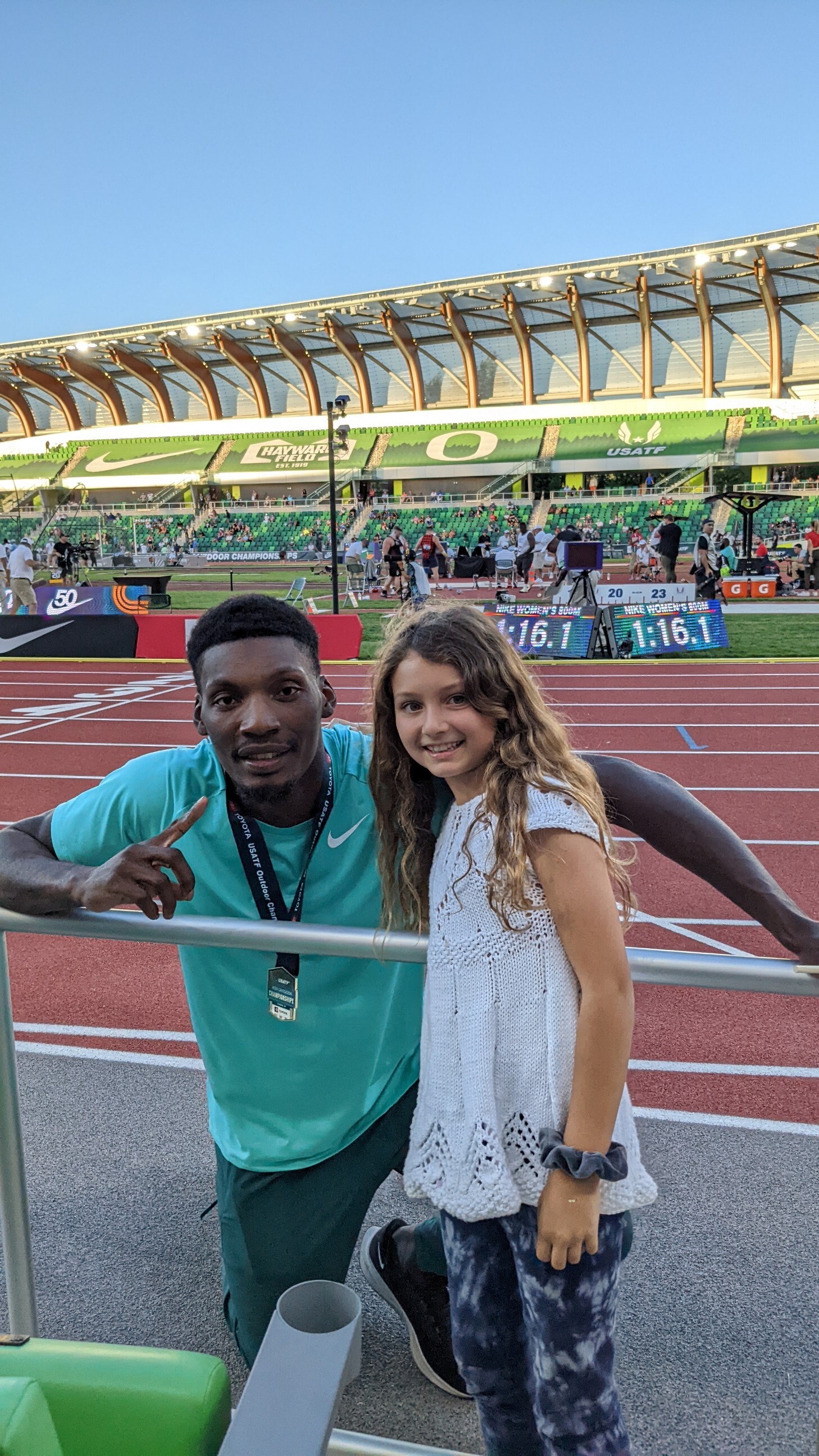
Women’s 400m
1. Talitha Diggs — 50.22 2. Kendall Ellis — 50.35 3. Lynna Irby — 50.674. Wadeline Jonathas — 50.845. Kennedy Simon — 50.906. Allyson Felix — 51.307. Jaide Stepter — 51.308. Kaylin Whitney — 51.31
Women’s 1500m
1. Sinclaire Johnson — 4:03.29 2. Cory McGee — 4:04.52 3. Elle St. Pierre — 4:05.144. Karissa Schweizer — 4:05.405. Heather MacLean — 4:06.40
Women’s 10,000m (from May 27)
1. Karissa Schweizer — 30:49.56 2. Alicia Monson — 30:51.09 3. Natosha Rogers — 31:29.804. Emily Infeld — 31:30.045. Weini Kelati — 31:39.90
Women’s 100m Hurdles
1. Keni Harrison — 12.34 2. Alaysha Johnson — 12.35 3. Alia Armstrong — 12.474. Tonea Marshall — 12.555. Tia Jones — 12.59DNS. Nia Ali (has bye onto world team)
Women’s 400m Hurdles
1. Sydney McLaughlin — 51.41 WR 2. Britton Wilson — 53.08 3. Shamier Little — 53.924. Anna Cockrell — 53.985. Shannon Meisberger — 55.39
Men’s 100m
1. Fred Kerley — 9.77 2. Marvin Bracy-Williams — 9.85 3. Trayvon Bromell — 9.884. Micah Williams — 9.905. Elijah Hall-Thompson — 9.906. Kyree King — 9.96DNS. Christian Coleman (has bye onto world team)
Men’s 400m
1. Michael Norman — 43.56 2. Champion Allison — 43.70 3. Randolph Ross — 44.174. Elija Godwin — 44.345. Vernon Norwood — 44.356. Bryce Deadmon — 44.547. Noah Williams — 45.048. Ismail Turner — 45.56
Men’s 1500m
1. Cooper Teare — 3:45.86 2. Jonathan Davis — 3:46.01 (doesn’t have standard)3. Josh Thompson — 3:46.07 (doesn’t have standard)4. Eric Holt — 3:46.15 (doesn’t have standard)5. Reed Brown — 3:46.28 (doesn’t have standard)6. Johnny Gregorek — 3:46.36 (has standard)11. Yared Nuguse — 3:47.46 (has standard)
Men’s 10,000m (from May 27)
1. Joe Klecker — 28:28.71 2. Grant Fisher — 28:28.81 3. Sean McGorty — 28:29.574. Dillon Maggard — 28:30.755. Shadrack Kipchirchir — 28:30.79
Men’s 3000m Steeplechase
1. Hillary Bor — 8:15.76 2. Evan Jager — 8:17.29 3. Benard Keter — 8:19.164. Duncan Hamilton — 8:20.235. Anthony Rotich — 8:23.15
(06/25/2022) ⚡AMPUSATF Outdoor Championships
With an eye toward continuing the historic athletic success of 2022, USATF is pleased to announce competitive opportunities for its athletes to secure qualifying marks and prize money, including a new Grand Prix series, as they prepare for the 2023 World Athletics Championships in Budapest, Hungary.As announced a few months ago, the 2023 Indoor Championships in Nanjing, China have been...
more...Demystifying Carbon Fiber, A Key Super Shoe Ingredient
The plate is just one part of a midsole’s secret sauce.
Four years ago, Nike launched the Vaporfly 4%, enthralling us with the promise its name implied: a 4-percent boost in running economy. Before the shoe’s release, Eliud Kipchoge wore the Vaporfly while attempting to run a marathon in less than two hours in 2017’s Breaking2 Project. He eventually succeeded two years later in the Alphafly Next%, the Vaporfly’s beefed-up, controversial descendant.

It takes a superhuman like Kipchoge to break what was once thought an impossible barrier, but stats show the average runner can also benefit from running in super shoes. In 2019, Strava data showed runners ran 4 to 5 percent faster in the Vaporfly or Next% compared to runners wearing an average trainer.
Trailing Nike, other brands dove in, releasing their own rendition of super shoes, and adding a smidge of original flavor (e.g., Saucony’s Speedroll tech; the decoupled midsole on the Puma Fast-R). But there are two common denominators these models share: a responsive midsole foam and a carbon-fiber plate. The midsole foam is usually made from a polyether block amide thermoplastic (also known as Peba, or the Arkema-trademarked Pebax). Examples include Nike’s ZoomX, Puma’s Nitro Elite, and Saucony’s PwrrunPB. Compared with standard foam (EVA), Peba is lighter, more compliant, and more resilient.
“Typically, foams act as a cushioning ingredient and plates act as a stiffening ingredient,” said Rebekah Broe, director of product and performance footwear at Hoka, on a video call. The plate limits flexibility, acting as a propulsion agent in the gait cycle. It works in harmony with the responsive foam sandwiching it, thus delivering even higher energy return as you run.
Elliot Heath, Nike product line manager, referred to the carbon-fiber plate as an “enabler.” In constructing the Vaporfly and subsequent models, the Nike running footwear team focused on stiffness and propulsion. The placement of the plate as well as its shape—it has curves like a spoon—enhances your stride’s toe-off.
The plate in Hoka’s road racing models, for example, is fork-shaped and sits closer to the heel. It curves higher in the rear of the shoe and swoops down closer to the ground in the forefoot. “Its offset helps reduce energy loss at the ankle joint and increases stiffness to reduce energy loss at the big toe,” said Broe. “It gives you this balanced ride because you have really soft compliant foam under the foot.”
Hoka released a carbon-fiber trail shoe, the Tecton X, earlier this year. We dissected its midsole in “The Cut Up” last issue, revealing two parallel plates to allow dexterity over obstacles while still providing that propulsive stiffness. The ski-like plates are markedly different from the wishbone-shaped single plate in Hoka’s road racing shoes. Broe said Hoka worked with carbon-fiber vendors to finesse and mold the plates to meet the shoes’ specific needs.
Broe was evasive about which carbon-fiber vendors Hoka uses, withholding that specific information. As predicted, Nike also dodged the question, with Heath stating, “We’re not really in a position to talk exactly about our manufacturers, but all of the initial research and building is done here at Nike campus.”
At The Running Event in Austin, Texas, last November, I met with the carbon-fiber manufacturer Carbitex. Founded in 2010, the company shifted its focus to footwear about five years ago. Shoe brands, including Adidas, Altra, and Scott, are listed on Carbitex’s site.
Carbon fiber is valued not only for its stiffness to encourage propulsion but also because shoe manufacturers can control flexibility. The human foot, Carbitex founder Junus Khan explained on a video call, is asymmetrical; its tendons and ligaments change in stiffness based on need. The malleability of Carbitex’s plates allows the foot to bend in its natural way while providing stability and the prized propulsion PR chasers crave. “When it comes to sporting equipment, how do you create technology that helps augment people’s natural performance?” asked Khan. “The traditional carbon-fiber plates in shoes kind of tell you how to run because it’s a fixed rigid plate.”
Carbon fiber, according to Khan, has been around for only about 50 years. It’s still the new kid on the block in terms of usage. It’s implemented in a host of sectors, from military aerospace to backpacks. Khan describes Carbitex’s role working with shoe brands as “the best supporting actor,” not the main event. The relationship is built on independent research, data, and athlete testing.
Carbitex’s Three Plate Technologies
Khan’s team is currently working on a plant-based carbon-fiber material. The next phase for carbon-fiber-plated footwear is making it more accessible, Khan said, pointing to Vibram, Gore-Tex, and Boa as examples. “They’re still premium but have found their way into products that are able to benefit a wider population,” he said. “That’s not necessarily what people think about when they think of technology development, but to enable new technology to come down in price requires a whole different type of engineering.”
It’s still too early to know the long-term effects of running in shoes with carbon-fiber plates, but there’s some concern that overuse could weaken a runner’s foot muscles. Conversely, a study at the University of Calgary found that stiffness improved foot biomechanics, potentially staving off MTP (metatarsophalangeal) joint injury, turf toe, and other ailments. Still, another study conducted at the Georgia Institute of Technology found that there was no improvement in running economy when carbon-fiber plates were added to shoe soles.
Only time will tell which party is correct. It should be noted, however, that the plate is only one part of the equation; everything must work in concert for the ultimate running experience. “You can have a great shoe that has one bad feature that throws everything else off versus having a bad shoe with one awesome feature that is not going to fix it,” said Khan. “People ask, ‘What is the secret?’ And the secret is the sum. The sum is greater than the parts.”
(06/25/2022) ⚡AMP
by Runner’s World
How To Run Slow
The key to running fast is learning to run slow. I have said that so often that it's practically my version of a coaching campaign slogan. Make Aerobic Development Great Again!
But what does it mean, and how do you do it? Of all the questions I get, these are probably the most common. People struggle to define how fast their everyday, non-workout runs should be.
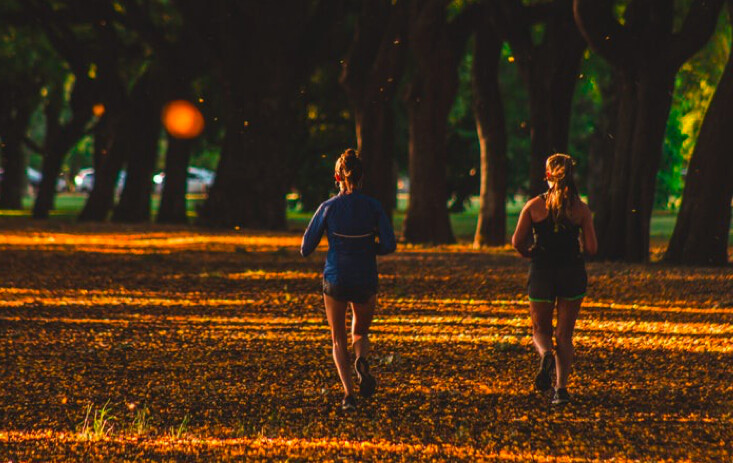

And these questions are the most important ones you will ask in your running career. There are countless stories of athletes who learned to slow down, which kept them healthy, which allowed them to run more, which made them faster.
For example, every runner in Boulder has seen the Japanese Olympic team doing their training camps on the surrounding trails. Most of the time, they are running at a pace similar to a sedated sloth. But sometimes, they are running like antelopes on amphetamines. This polarization of training is necessary for higher volume, which is necessary for training and racing breakthroughs.
The easiest way to pinpoint your everyday pace is through a heart-rate monitor. The classic formula for less experienced runners is 180 minus age as a cap on your heart rate during most runs.
However, that formula is crude and controversial. (It'll be too fast for elites and experienced runners, and sometimes too slow for people just getting started). Most of us use perceived exertion to determine our running speeds anyway.
So for most of us, running easy and slowly enough is a mystery. Here are five tips to make sure you run slow enough on your easy days.
1. Run conversationally with friends
If you can hold a conversation about your latest Netflix obsession without gasping for air, then you are probably running easy enough. My rule is three complete sentences at a time.
2. Run conversationally with your dog
Dog jogs are a great way to control speed. Also, the biggest advantage of all-dogs can't talk about human politics!
3. Do the breath test
If you don't have a friend or a dog, you would make a good main character in a sad country song. But there is still a way to see if your breathing is controlled.
I am a solo runner, and I use the breath test. If I can hold my breath for five steps mid-run without changing my pace, then I know my heart rate is controlled enough.
4. Make photography your workout
As runners, we get a unique perspective on the world that most people never even think about. Use that perspective to take photos!
Try to take one photo each run and post it on your social media. Looking for that perfect photo opportunity will have you relaxed and exploring new places. Stopping to take the photo will ensure you aren't chasing your fastest time or a Strava segment. And posting the photo will help dilute all of the political posts on Facebook. Wins all around!
5. Wear your slow shoes
We all have that one pair of shoes that are rock solid but with limited upside, sitting neglected in the corner. If you put those on, you won't have the urge to hammer an easy run.
Putting it all together, keep most of your runs easy. In general, less experienced runners should only run hard one to two days per week, and more experienced runners can run hard one to three days per week. The rest of the time, try to practice slow running as much as possible.
(06/25/2022) ⚡AMPby Trail Runner Magazine
More Carbs Correlates With Less GI Distress in Runners
Race nutrition is a popular subject of discussion and a frequent source of anxiety for runners. Specifically, anxiety about getting nutrition in and keeping it down. This is because gastrointestinal (GI) distress is a common complaint among endurance athletes, and something that can undo even the best thought out plans and undo months of training.
A recent publication may provide some guidance for those who suffer this common affliction in events. The paper was a collaboration between researchers in the Netherlands, Norway, and the United States and looked at ultramarathon runners participating in a 60K race.

The researchers were interested in determining how frequently athletes complained of GI distress during the event and whether or not the type and amount of nutrition being taken in had any impact on the frequency and severity of those symptoms. In addition, the scientists hypothesized a specific biological premise that leads to GI distress in athletes-and they set out to find evidence to prove or disprove that theory.
This is important because to date there have been many reasons postulated as to why endurance athletes develop GI symptoms but none have ever been shown definitively to be at the root of the issue.
These authors believed that during exercise blood flow is diverted away from the organs of the GI tract and this would result in inflammation and injury that in turn would cause all those symptoms that stop you from being able to take on additional nutrition. They set out to prove this by measuring markers of inflammation taken from the blood of the runners obtained before and after the event, looking for generic markers of inflammation that can be present anywhere in the body and for levels of a marker very specific to the GI tract.
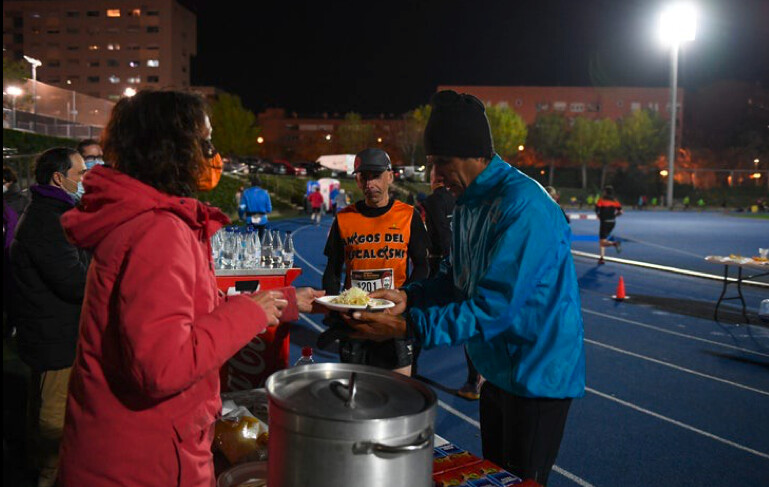
Intestinal fatty acid binding protein or I-FABP is a marker in the blood that shows up in very specific conditions of inflammation and of damage to the organs and tissues of the GI tract. By looking for this specific marker, the authors hoped to show that GI tract injury was occurring and that this was the cause of GI symptoms.
So what did they find?
There were 33 athletes in this study, 28 of whom were male, and nearly three-quarters of them reported experiencing some symptoms of GI distress. This could have been anything from nausea to abdominal pain to diarrhea. While so many experienced symptoms, very few of the athletes reported these as being particularly severe. In fact on a 10-point scale of severity, with 10 being the worst, the average score was only 1.9-so not exactly anywhere near debilitating.
As to the markers of inflammation, blood samples taken before and after the event did show that the non-specific markers of inflammation did rise, but this was true whether or not an athlete suffered GI distress of any kind (this is consistent with previously reported research on inflammatory markers in exercise). I-FABP levels, though, did not increase even in those athletes with the worst GI symptoms. So gut specific injury and inflammation did not appear to be the mechanism that caused these symptoms.
The one thing that was associated with symptoms was the amount of nutrition taken during the event. There was an inverse relationship in this regard. That is to say, those athletes that took the most nutrition, and especially when that nutrition was in the form of carbohydrates, experienced the fewest and least severe symptoms.
The reason for this appeared to be that when carbohydrates were being ingested, this improved blood flow to the gut through various mechanisms and prevented many of the symptoms often associated with low blood flow states.
This study definitely has to be interpreted with a certain degree of caution because it was small and included very few women. Still, the findings are consistent with previously published research-though the specific results related to increased carbohydrate consumption being associated with fewer symptoms is new and of interest.
Despite these limitations, the idea that athletes who take in more nutrition in the form of carbohydrates tend to do better with respect to GI symptoms is an important one. This suggests that athletes who have had issues in the past should consider a race nutrition plan that has them taking in a higher amount of fuel earlier in their event and doing this with carbohydrates as the preferred fuel.
While this study did not confirm the cause of GI symptoms being inflammatory in nature, it did rule it out, and so the search for specific causes of these problem will continue.
(06/25/2022) ⚡AMPby Trail Runner Magazine
Western States 100 Time Predictions Based On Historical Data
The Western States 100 is the Super Bowl of US trail running, just with fewer cryptocurrency commercials. Every year, the race gathers some of the best athletes in the world to test themselves on the world-famous course. The competition, along with comprehensive data gathering by the race organizers, provides a massive statistical opportunity.
Marshall Burke, associate professor of Earth System Science at Stanford University, seized that opportunity with some wonderfully cool data analyses heading into the 2022 race. The research question he sought to answer: how are race times progressing as the sport grows, and how are those times affected by temperature changes?
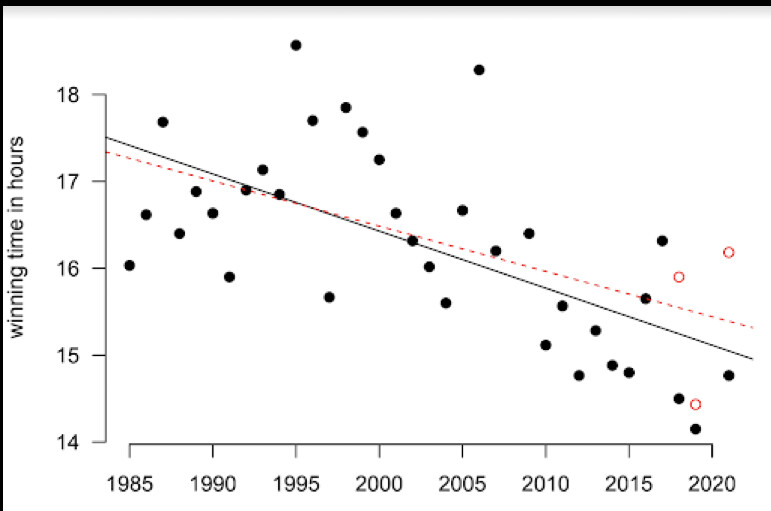

Marshall is a wonderful athlete himself, with an April 2022 Fastest Known Time on the Buffalo River Trail in Arkansas, so he's used to moving fast. In his spare time, between research and Zoom calls, he compiled the data on finishing times and temperatures, controlling for years when there was snow on the course or when the course was altered.
"I may never run Western States," Marshall says. "But I can run statistics on it!"
He's doing world-changing work on climate change at Stanford University, and that made his quest have both a personal and academic interest. "This combines my research focus on the impacts of climate with my hobby of running slowly through the mountains," he says. Since this was a quick analysis for fun (and to help me with coaching; helps to have really, really smart friends), Marshall wants to be clear that the numbers could change. And I want to be clear that any errors are the fault of the field of Statistics for being the worst.
Let's all run fast through some of the fascinating data he gathered!Finding #1: Times of top finishers have progressed rapidly.
Since 2000, a linear model of top times for men and women shows bonkers improvement. Bonkers is a scientific term; you'd know it if you, like me, took an Intro To Stats class in 2004. The male winner is about 2 hours faster on average, with the same general improvement for the average of places 2 through 5. The female winners are around 1 hour faster, with places 2 through 5 improving more than 2 hours.When not accounting for temperature, times would be expected to drop considerably each year-around 4 minutes per year for men since the 1980s, and about 4:45 per year for women. Interestingly, the women's top 5 times are coming down faster than the winning time, showing a tighter race at the front.
I asked Marshall to run the men's times with Jim Walmsley being removed. Want to see a cool chart of just how much of an outlier he is? Taking out Jim's winning times moved the linear regression substantially, with the new red line predicting substantially slower times overall. And if he didn't get lost in 2016, the effect would be even more pronounced! You know you're a good runner when you mess up the statistics.
Finding #2: For all finishers, men are improving gradually, while women are improving rapidly.
Since 2000, the average women's finish time has improved by 5 minutes and 15 seconds per year! Meanwhile, the average finisher independent of gender has only improved around 2 minutes per year. So women are driving the sport forward in an emphatic way! Bosses!
Finding #3: Heat has a massive performance impact.
Let's start with a simple scatterplot of heat versus winning time.There is clearly a ton of variation in the scatter. Heat is not destiny. But there is some clear relationship, so maybe it's destiny's child. If you go too hard on a hot day, the body has to pay the bills bills bills later.
Marshall ran multiple regression analyses to combine the effects of overall time improvements with heat increases to give us a more sophisticated analysis, again also controlling for whether there was snow on the course. He is so damn sophisticated! Using times since 2000, the general rule is that for every 1 degree F increase in temperature in Auburn, California on race day, there is a 2:48 increase in winning time for men and a 2:52 increase for women. Removing Jim's times (Mr. Mess-Up-Your-Stats), there is a 3:26 increase for men for every degree increase.
For the average finisher using the same regression analysis, 1 degree F increases correspond with 2:34 increases in finishing times. DNFs go up about 0.5% for every 1 degree F increase as well. The ratio of times for men and women is not significantly impacted by temperature, so even though the hot year in 2021 saw women absolutely rock the list of top finishers, that may not be explained by heat in the way that everyone assumed.Finding #4: Predictions for 2022
The forecast from Weather Underground is currently 97 degrees F on race day in Auburn, relative to an average of 89. Combining the heat data with the overall improvement in times as the sport progresses, here are the predictions from Marshall's model, again based on data from the last 20 years.
For the male winner, it depends heavily on whether we remove Jim from the data. Assuming Jim is a true outlier, we can expect a winning time around 15 hours. For women, it's 17.5 hours. For the average racer, times should be around a half hour slower than normal, but that is affected by a higher DNF rate, so I'd suggest athletes build in much more buffer.
The trend in the 10th place times is most instructive to me, as a coach that is trying to help support athletes getting an invitation to next year's race. Those 10th place times have come down by massive margins over time, 9:22 for men and 12:50 for women. But the times are also more affected by the heat relative to the top 5 finishers. Put it all together, and the model predicts that 20 hours will place in the top-10 for women, and around 17 hours for men.
My personal prediction will be for fast winning times, but a greater spread after that, with the 10th place man and woman being around 30 minutes slower than predicted. The faster times as the sport progresses will not follow a linear model eventually, and my guess is that we are starting to approach an asymptote. To paraphrase Mark Twain, there are lies, damn lies, Statistics, and a running coach pulling wild guesses out of his butt.
Three Big Conclusions
Respect the heat, but don't respect it too much.
It's good to have brilliant friends like Marshall when you're looking for a possible coaching advantage.
Finally, Jim Walmsley breaks statistics.
(06/25/2022) ⚡AMPby trail Runner Magazine
50 Years After Title IX: The landmark legislation has had a profound impact on gender equality but it hasn’t fixed everything
It’s been a year of celebration for women in sports, but particularly for women in running. We honored the first women to officially enter the Boston Marathon 50 years ago. We marked the 50th anniversary of the Mini 10K in Central Park this summer— “the world’s original all-women’s road race.” It’s also been 50 years since the “six who sat” protested at the starting line of the New York City Marathon, fighting for the right to compete in the same race as the men.
But perhaps the biggest anniversary of all is 50 years of Title IX, the bill that in 37 succinct words changed everything:
“No person in the United State shall, on the basis of sex, be excluded from participation in, be denied the benefits of, or be subjected to other discrimination under any education program or activity receiving federal financial assistance.”
A half century ago, on June 23, 1972, President Richard Nixon signed the civil rights legislation into law, and the effects have rippled ever since. It altered education significantly across the country, barring sex discrimination in schools, creating opportunities in sports, and, ultimately, allowing women to enter careers that were once completely dominated by men.
It seems unfathomable to today’s youth that, not long ago, these were not guaranteed rights. At the same time, Title IX has been far from perfect in its execution and its results. It continues to leave people of color and those of lower socio-economic status behind. The inclusion of transgender rights under the law is still under review as a dozen states seek to ban transgender women and girls from participating in women and girls’ sports. Today, 75 percent of high school boys participate in sports compared to 60 percent of girls. Women make up 44 percent of all NCAA athletes (compared to 13 percent before 1972), but still have 60,000 fewer athletic opportunities than men, according to the NCAA.
“The biggest lasting legacy of Title IX has been the understanding that it’s a civil right to be able to participate in school sports, because there’s education in getting to use your body to achieve various goals, working as a team, pushing yourself, testing your limits,” says Victoria Jackson, a sports historian and assistant professor at Arizona State University and the 2006 NCAA 10,000-meter champion. “That is pretty radical and has resulted in all sorts of consequences beyond the world of school sports, for individuals and for society. That’s really important.”
Title IX is a story of many chapters—continually revised politically, judicially, and culturally. In order to strengthen and sustain it, the law will always need guardians and defenders. In the middle of this year-long commemoration, for example, the Supreme Court is poised to overturn another 50-year-old ruling, Roe v. Wade, a decision that will strip women of their reproductive rights and ban abortions in several states—a devastating blow to the progress women have made in attaining education and achieving career advancement as a result of the ability to choose when and if they become pregnant.
“We want to celebrate the wins, as we are doing with Title IX, but we also want to be aware that the fight is not over,” said Nicole LaVoi, director of the Tucker Center for Research on Girls & Women in Sport, during the espnW Power Summit in May. “A lot of gains have been made. And there’s a lot of work still left to do.”
It’s impossible to adequately capture the scope and reach of 50 years of Title IX in a single swoop (we’ve got a comprehensive timeline here), but the milestone deserves reflection. Female runners and track and field athletes have always been on the forefront of pushing change. Whether they realized it or not, during the decades leading to the law, the simple act of showing up and running when their presence wasn’t welcomed or recommended was an act of advocacy that pushed the movement forward. Here are four reflections on Title IX honoring its past, present, and future.
(06/24/2022) ⚡AMPby Erin Strout Women’s Running
Nike will fully shut down operations in Russia, joining other international companies that have withdrawn from the country after its brutal invasion of Ukraine
Nike Inc. suspended operations three months ago at all of its company-owned and operated stores in Russia but like other major corporations, has attempted to avoid exposing employees to hardship during a complete withdrawal.
The Russian newspaper Vedomosti reported last month that Nike had ended its relationship with Inventive Retail Group, its largest franchisee in the country.
"Our priority is to ensure we are fully supporting our employees while we responsibly scale down our operations over the coming months,” the sports apparel maker said Thursday.

(Second photo: one of many images of the war Russia has waged against Ukraine.)
Nike, like many recognizable Western brands, was swift to repudiate Russia over the war in Ukraine. However, it was among a small minority of companies—including Burger King, the Marriott hotel group and British supermarket Marks and Spencer—that struggled to completely extricate themselves from the Russian market due to complex franchise agreements.
Three months since Moscow launched the invasion, more companies are transitioning from suspending their Russian operations to leaving the country entirely, including two iconic American brands, McDonald’s and Starbucks, and French carmaker Renault.
Russian President Vladimir Putin has threatened to fight back against companies suspending operations or leaving the country and said he will nationalize their assets. Renault marks the first major nationalization of a Western company’s assets after handing its factory over to the city of Moscow, reportedly for a nominal sum of one ruble.
(06/23/2022) ⚡AMPSouth African runner takes on three triathlons in three countries in six days – all to help feed hungry children in Africa
South African runner, Rehan Greeff, will take on the biggest sporting challenge of his life from 27 June as he attempts to complete three full triathlons in three countries in just six days and all for a worthy cause – to feed hungry children in Africa.
Greeff, a chartered accountant now living in the United Kingdom, is the biggest individual fundraiser for the non-governmental organisation ForAfrika (previously known as JAM). For the past few years, he has set himself personal quests under the title of "Run Forest Run" – a nod to his childhood nickname, which he was given because he had to wear metal leg braces just like the film character Forrest Gump.

After what he can only call "miraculous healing" of his knee injuries during a church service in 2017, he decided to give thanks by taking on these quests in support of vulnerable children. In 2021, he raised a whopping £50,000 (almost R1 000 000) on his mission to run the equivalent of seven marathons in one go; the furthest he had ever run.
He completed his 300km run around Greater London in aid of the organisation's #zerohunger campaign in 49 hours and 17 minutes and set a new record for the route in the process.
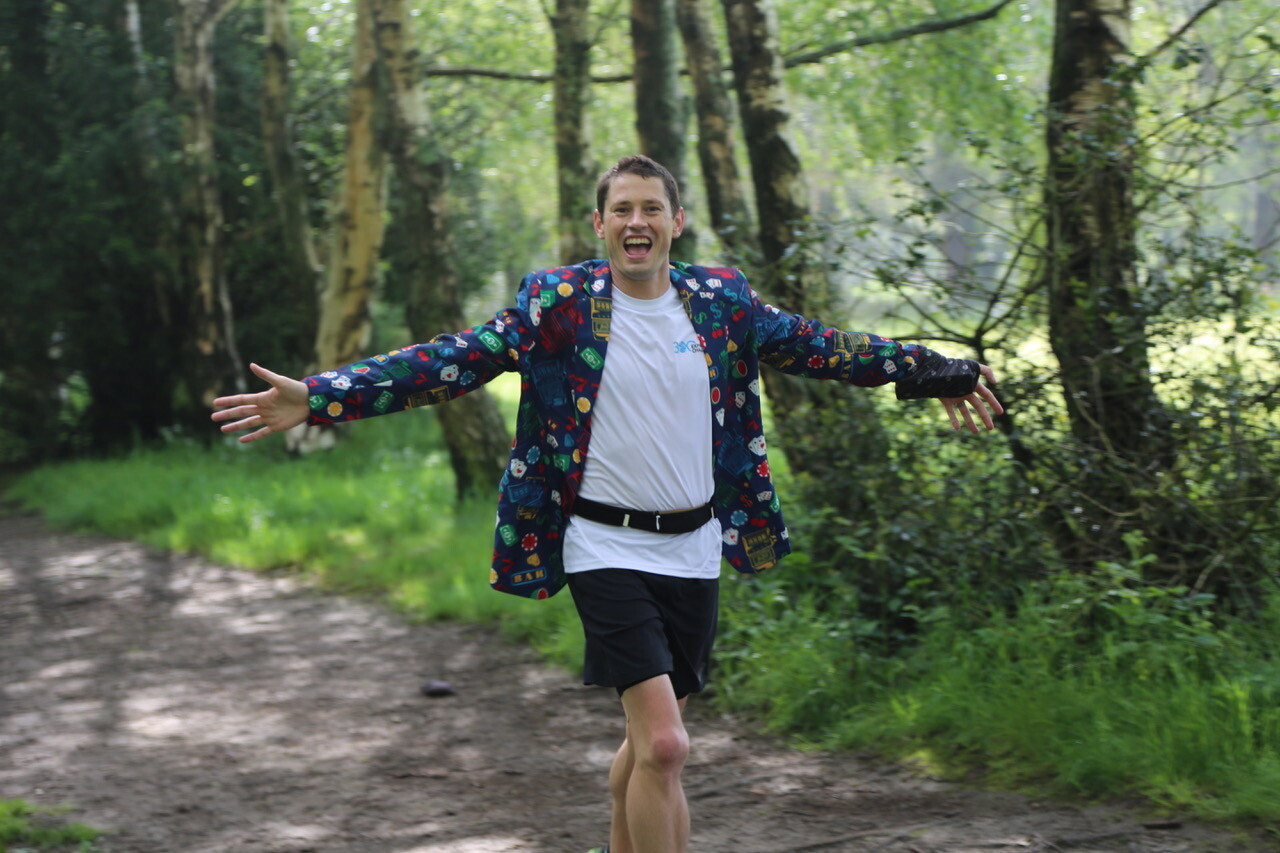
He challenged (and trained) about 60 others to join him in running the furthest they had ever run too, be that 10km, 100km or anything in between.
"That was inspirational! That brings hope ... when people pull together with a vision to impact thousands. That takes commitment, sacrifice and intentionality," Greeff said.
This year, he is taking it all a huge step further – his "Tri-Challenge" with a total distance of 678km in one week in South Africa, Uganda and the UK. He chose these countries because he was born in South Africa where malnutrition rates are on the rise; Uganda because ForAfrika is working with refugees there whose lives have been devastated by war and climate change; and England, because it's his new home.
A full triathlon is made up of a 3.8km swim, a 180km cycle and a 42.2km run. Greeff will complete three bespoke routes in Cape Town (South Africa) on 27 June, Kisoro (Uganda) on 29 June and London (UK) on 2 July 2022.
"The swimming and cycling will be new for me," he says, before calling on people all over the world to join him and help raise funds for hungry children in Africa.
His target this year is also bigger than last year's at £100,000.
It costs just £5 a month to feed a child. So, if Rehan reaches his goal he will be able to ensure that 1,667 children receive a highly nutritious meal each school day during the year.
Do you want to help? Are you ready to #RunForAfrika? Head on over to runforafrika.funraise.org or runforestrun.run for more information.
(06/23/2022) ⚡AMPThe 2023 Tokyo Marathon will be run at full capacity of 37,500 runners
In March 2022, we came together to hold the first in-person Tokyo Marathon in two years, with the slogan "The Day We Unite." Now, runners, volunteers, spectators and supporters all have their eyes set on the event's next theme, "ONE STEP AHEAD."This design symbolizes how each and every person enthusiastically advances step by step, in their own unique way.
The Tokyo Marathon is also steadily moving forward to provide people with the joy of running and what lies beyond it.

As they move forward, organizers of the Tokyo Marathon said today that the 2023 edition would be held Sunday, 5 March, at full capacity of 37,500 runners. Here is the official information as posted on their website.
Cut-off Times & Start Times
Marathon: 7 hours (9:10 a.m. - 4:10 p.m.) *The time limit will be based on the starting gun of the first wave.
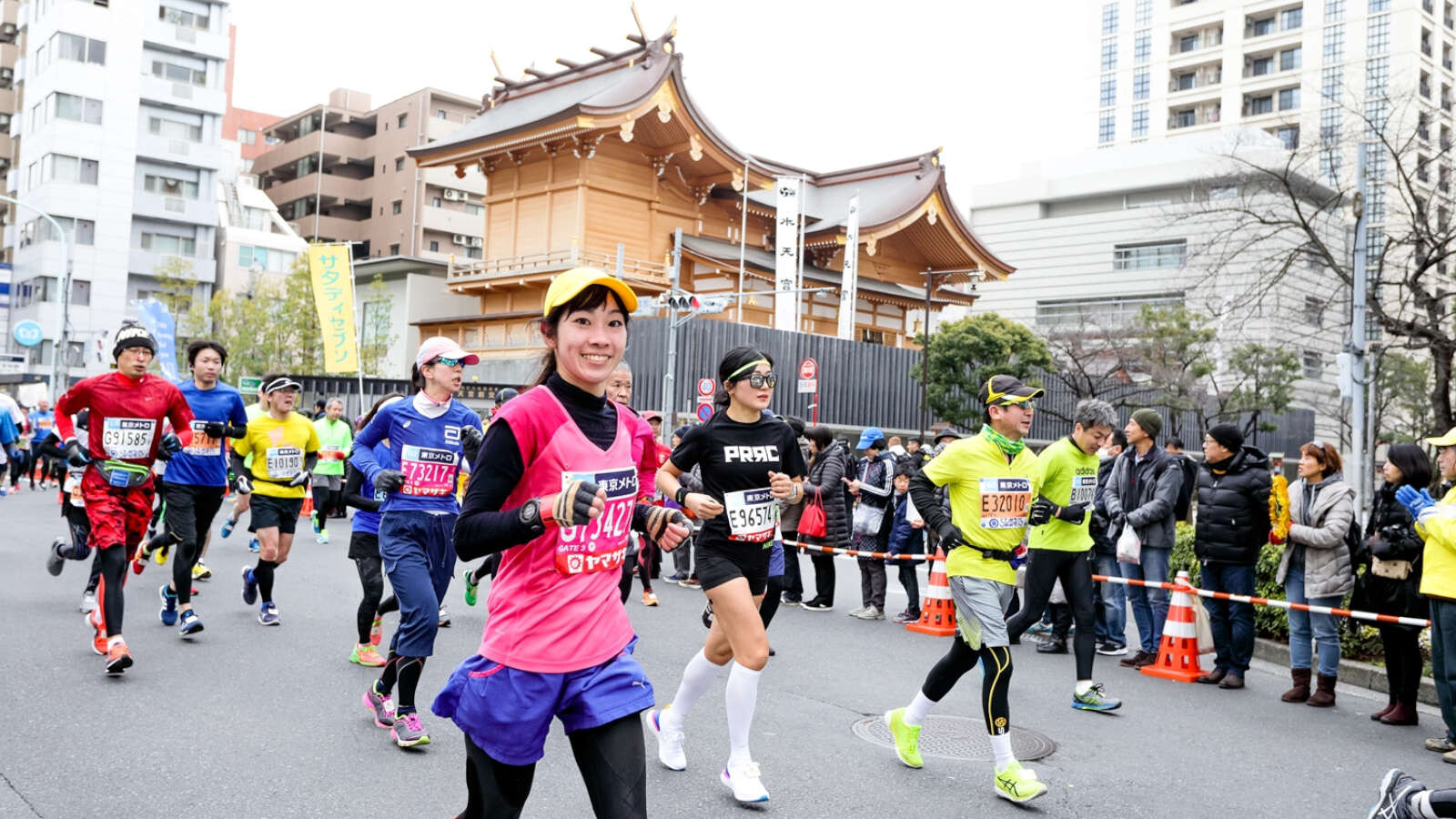
Wheelchair: 2 hours and 10 minutes (9:05 a.m)
Marathon start time: 9:10 a.m. (Wave Start) Runners who fail to pass through the checkpoint before the cut-off time will be removed from the race. Furthermore, runners who lag excessively behind the cut-off time pace may be stopped to leave the course at anytime.
Eligibility
Those who fulfill the following conditions, and whose participation is approved by the organizer (including those who deferred their entry to the 2023 event):
1) Marathon: Must be at least 19 years of age on the race day.
1-1) General
- Runners who are capable of completing the race within 6 hours and 30 minutes.
1-2) Semi-Elite Athletes
- Athletes who satisfy the requirements set forth by the "RUN as ONE - Tokyo Marathon 2023".
1-3) Elite Athletes
- Athletes, registered with the JAAF in fiscal 2021 who satisfy the special requirements set forth by the JAAF.
- Invited Athletes: National and international runners nominated by the organizer and/or the JAAF.
Event Fee
1) Marathon: Japan residents - 23,300 JPY (from overseas - 25,300 JPY)
2) 10.7km Race: Japan residents - 12,400 JPY (from overseas - 13,500 JPY)
* Entry, Covid testing, event fee refund insurance, handling and tax included.
* As part of the COVID-19 countermeasures, pre-race testing is planned to be conducted. However, if the testing doesn't take place due to any changes in countermeasures planned in accordance with the laws on infectious diseases, the event fee will be partially refunded.
How to Enter: Register online
Entry Period: Registration will open on August 1, 2022 (Mon)
* The registration period may differ depending on the eligibility group.
* Selection will be made by random drawing if the entry exceeds the field size.
* Donation and Charity Runner applications open from July 11 (Mon).
(06/23/2022) ⚡AMPTokyo Marathon
The Tokyo Marathon is an annual marathon sporting event in Tokyo, the capital of Japan. It is an IAAF Gold Label marathon and one of the six World Marathon Majors. Sponsored by Tokyo Metro, the Tokyo Marathon is an annual event in Tokyo, the capital of Japan. It is an IAAF Gold Label marathon and one of the six World...
more...Dalilah Muhammad among Olympic gold medalists to miss USATF Outdoor Champs
Rio Olympic 400m hurdles champion Dalilah Muhammad will miss this week’s USA Track and Field Outdoor Championships due to a hamstring injury.
She received a waiver from USATF to accept her bye into July’s world championships as a defending world champion. Usually, reigning world and Diamond League season champions with byes into worlds still have to compete in at least one round of nationals.
Muhammad, who took silver to Sydney McLaughlin in Tokyo in the second-fastest time in history, last raced May 21 and withdrew before a planned race June 12. She and McLaughlin last went head-to-head in Tokyo.
McLaughlin is entered at USATF Outdoors, where a top-three finish will clinch a spot at worlds. At the last worlds in 2019, McLaughlin took silver behind Muhammad.
(06/23/2022) ⚡AMPESPN and WCVB has signed a deal with the Boston Athletics Association to provide exclusive year-round coverage for all their events including the Marathon
The Boston Athletic Association (B.A.A.) announced today that ESPN and WCVB Channel 5 will serve as the exclusive national and local broadcast partners, respectively, for the Boston Marathon beginning in 2023. WCVB will also provide exclusive year-round coverage for all B.A.A. events including the B.A.A. 5K, B.A.A. 10K, and B.A.A. Half Marathon.
“We’re honored to partner with ESPN and WCVB Channel 5, respected market leaders who bring a spirit of innovation and thoughtful storytelling that will propel the mission of the B.A.A. and legacy of the world’s oldest annual marathon forward,” said Jack Fleming, acting Chief Executive Officer of the B.A.A. “Both have established a tradition of broadcasting world-class athletic events, and we are excited to build on this tradition together into the future.”

“The Boston Marathon is one of the world’s most recognizable and best-known sporting events and we’re proud to be able to bring it to ESPN viewers for years to come,” said Burke Magnus, President, Programming and Original Content, for ESPN. “We look forward to working with the B.A.A. and WCVB to present the stories and athletic achievements of this classic race.”
“The B.A.A. and the Boston Marathon are esteemed around the world and beloved by our community, and to be launching this exclusive partnership as WCVB marks 50 years in broadcasting and service to the community is especially fitting,” said Kyle I. Grimes, WCVB Channel 5 President and General Manager. “WCVB has a proud history of covering the market’s marquee events, and the Boston Marathon is the perfect addition to Channel 5’s signature, local programming. We also look forward to working with the B.A.A. year-round to highlight their many other athletic events as well as the great work they do in the community.”

ESPN will broadcast the 127th Boston Marathon, scheduled to take place on Monday, April 17, 2023, on its flagship channel from 8:30 a.m. ET until 1:00 p.m. ET. In addition, ESPN will also have coverage of the race within SportsCenter before the live coverage and later in the day, as well as coverage appearing on other ESPN shows and platforms.
Live coverage of the Boston Marathon will air on WCVB beginning at 4:00 a.m. ET through 8:00 p.m. ET. The race will be exclusively simulcast regionally on WCVB Channel 5’s Hearst Television owned sister-stations WMUR (Manchester, NH), WMTW (Portland/Auburn, ME), and WPTZ (Burlington, VT/Plattsburgh, NY). WCVB and all of its television partners will provide coverage of the marathon on their digital platforms and mobile apps. The Boston Marathon will also be live streamed on Very Local Boston, and the streaming platform will host year-round content featuring the B.A.A. WCVB will also serve as the first-ever exclusive broadcast partner for the B.A.A.’s Distance Medley races and will provide year-round coverage of the B.A.A. and its races, with a focus on the Boston Marathon.
The partnership marks the return of the Boston Marathon to both ESPN and WCVB, with ESPN having aired the world’s most prestigious road race in the early 1980’s and then from 1997-2004. WCVB provided wire-to-wire coverage of the marathon from 1982 through 2006, including the largest Boston Marathon in history—the centennial Boston Marathon in 1996 featured 35,868 finishers.
(06/23/2022) ⚡AMPBoston Marathon
Among the nation’s oldest athletic clubs, the B.A.A. was established in 1887, and, in 1896, more than half of the U.S. Olympic Team at the first modern games was composed of B.A.A. club members. The Olympic Games provided the inspiration for the first Boston Marathon, which culminated the B.A.A. Games on April 19, 1897. John J. McDermott emerged from a...
more...Sinclaire Johnson confident heading into USA Track & Field Outdoor Championships
As Sinclaire Johnson made her way to the starting line for the women’s 1,500 meters at the Prefontaine Classic last month in Eugene, she took a moment to take in her competitors.
Eight of them ran in the 1,500 final at the Summer Olympics in Tokyo last year. Now, she had the opportunity to show she belongs among them.
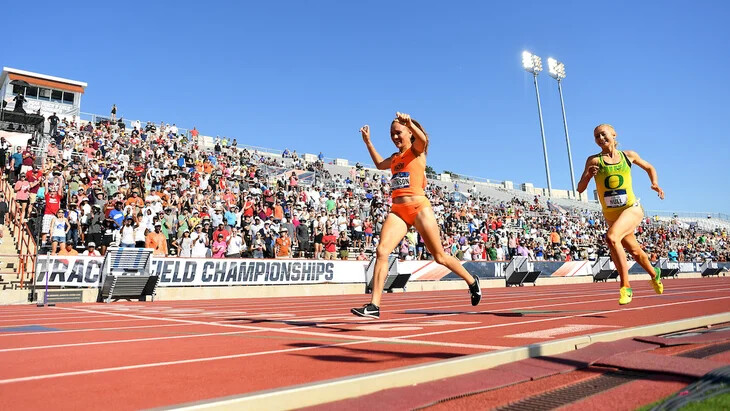
No thoughts about Johnson’s final time crossed her mind throughout the race. They never do. She’s too focused on her pace and beating those around her, and she rode that mindset to a fourth-place finish, beating six of those Tokyo Olympians.
“I felt like I had finally stepped into that pool of competing on that world-class level,” Johnson said this week.
Running a sub four-minute race was always Johnson’s goal heading into the meet. When she had the time to think about her official time, she saw it read 3 minutes, 58.85 seconds, a new personal record. It’s a far cry from where she was nine months ago, when she could train only in pools or the gym while dreaming of getting back to running.
Johnson joined Bowerman Track Club following her college career at Oklahoma State University, where she won a national title in the 1,500 as a junior in 2019. She made the switch to coach Pete Julian’s Portland-based Union Athletics Club last August.
That’s when the pain started.

It began as persistent pain in her hip following a workout early in the week. She couldn’t walk by Saturday, and an ensuing MRI showed a small tear in her labrum. Such tears typically can be corrected only through surgery, but this tear was small enough to not require an operation.
Johnson resumed training with caution, but she was still in pain that wasn’t getting better. Another MRI a month later showed something new: a stress fracture. So Johnson’s time with Union Athletics Club began in earnest while she was in recovery.
Running wasn’t an option, so Johnson instead spent time in the gym strengthening the muscles surrounding her hip and pool exercises to reduce the stress on her body. The process of getting Johnson back into competitive shape was slow and cautious, Julian said, but she was finally able to start running again in November.
“Every week just kept getting better and better,” Johnson said. “I just kept shocking myself with what I could do.”
Julian and Dave McHenry, Union Athletics Club’s strength coach, were with her every step of the way, Johnson said. This included daily check-ins on Johnson’s physical and mental health, scheduling appointments with doctors and breaking down how to get her back to training.
“She’s been able to just continue to progress honestly, just with more training load,” Julian said.
When it wasn’t her coaches reaching out with support, it was her new teammates. Jessica Hull, a former track athlete at the University of Oregon, met Johnson as a competitor when the two were running in college.
Hull was right behind Johnson when the latter won the NCAA title in 2019. It was a flip of the preliminary round earlier that day, when Hull took first and Johnson claimed second.
“We both knew at that point, we couldn’t have done it without each other, pushing each other,” Hull said.
Not only has Hull been training alongside Johnson at Union Athletics Club, she was also one of the eight Olympians running with her at the Prefontaine Classic. The two aren’t competitive with each other now that they’re on a team, Hull said.
Heading into the USA Track & Field Outdoor Championships this week, Hull said she’s looking forward to seeing Johnson’s training pay off.
“Watching her race at USA is gonna feel like my heart is out there with her,” said Hull, who competes for Australia.
Messages from coaches and teammates were important, but Johnson’s ultimate confidence boost came from herself. Slowly, but surely, she worked through the outdoor season to go from hanging on in races to competing to win.
That top-four finish in the Prefontaine Classic against some of the same competition she’ll see in the 1,500 this week proved to Johnson that she can earn a spot on Team USA for the World Athletics Championships next month.
“Not only do I want to make a team,” Johnson said, “I believe that I can make a team.”
(06/22/2022) ⚡AMPby Luke Norton (Oregon Live)
USATF Outdoor Championships
With an eye toward continuing the historic athletic success of 2022, USATF is pleased to announce competitive opportunities for its athletes to secure qualifying marks and prize money, including a new Grand Prix series, as they prepare for the 2023 World Athletics Championships in Budapest, Hungary.As announced a few months ago, the 2023 Indoor Championships in Nanjing, China have been...
more...The integrity of women’s sport is really important here, and we can not have a generation of young girls thinking there is not a future for them in the sport says Sebastian Coe
World Athletics president Sebastian Coe has stated that the global athletics governing body will look at their rules concerning the inclusion of transgender athletes in female events at a Council meeting toward the end of this year.
This statement comes days after the International Swimming Federation (FINA), swimming’s governing body, voted to stop trans female athletes from competing in women’s elite races if they have gone through any part of the gender transformation process after puberty or age 12. FINA also stated that they will establish an open category in some events for swimmers whose gender identity is different than their birth sex.
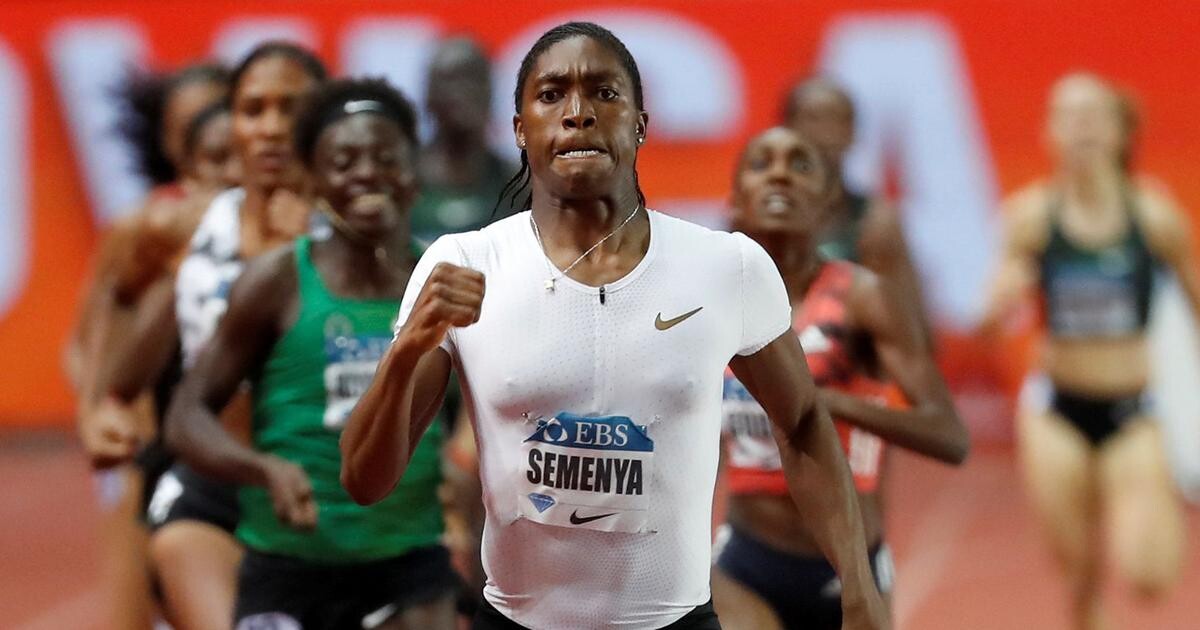
(Photo - Caster Semenya is a woman and a man. The South African champ has no womb or ovaries and her testosterone levels are more than three times higher than those of a normal female, according to reports.)
Transgender rights have become a major talking point in sports in an effort to balance inclusivity with ensuring they do not have an unfair advantage arising from the residual effects of puberty.
The debate intensified this year after University of Pennsylvania swimmer Lia Thomas became the first transgender NCAA champion in history, winning the women’s 500-yard freestyle.
In an interview with BBC Sport, Coe, a two-time Olympic 800m champion, outlined his support for the recent measures taken by FINA.
“The integrity of women’s sport is really, really important here, and we can’t have a generation of young girls thinking there is not a future for them in the sport. So we have a responsibility…maintaining the primacy and the integrity of female competition is absolutely vital, and that’s why we were at the forefront of tabling those regulations that allow as close as you can get to a level playing field,” says Coe.

Coe on FINA’s ruling:
“This is as it should be. We have always believed that biology trumps gender and we will continue to review our regulations in line with this. We will follow the science.”
FINA’s new guideline means that Thomas, who has expressed a desire to compete for Team U.S.A. at the Paris Olympics, is now blocked from participating in the women’s category at the Games. There have been talks to establish an “open” category at world championships for athletes whose gender identity is different than their assigned gender at birth.
The current World Athletics guideline from 2018 states that transgender women can compete in the women’s category if they reduce their testosterone levels to below five nanomoles per litre for at least 12 months before competing.
“We continue to study, research and contribute to the growing body of evidence that testosterone is a key determinant in performance, and have scheduled a discussion on our regulations with our council at the end of the year,” says Coe.
International sports federations may set their own policies but will be subject to World Athletics and IOC rules when it comes to sending athletes to the World Championships and Olympic Games.
(06/22/2022) ⚡AMPby Running Magazine
Hungary’s government has allocated more than €550m (582US) towards the construction of the Budapest stadium that will host the 2023 World Athletics Championships.
Documents published by the government show that HUF 204bn (€556.5bn) of public funds have been made available for the National Athletics Centre – which will have an initial capacity of 40,000 for the 2023 championships before being reduced to 15,000 – and its surrounding infrastructure.
That makes the facility some €40m more expensive than the much larger 67,000-capacity Puskás Aréna national football stadium that was recently opened in Budapest. It is also considerably more than initial estimates of €310m for the build.

The government has budgeted for the development of the National Athletics Centre on what is currently a brown field site by the Danube River. The cost includes the stadium, adjacent buildings, landscaping, and flood protective infrastructure, in addition to a pedestrian and cycling bridge.
The government calculates that the organisation of the 2023 World Athletics Championships will amount to €81.8m, but expects income from the event to far surpass this sum with 166,000 visitors and 416,000 ticket sales predicted.
Following the event, the stadium would be reduced in size and become a training hub for Hungarian athletics and a competition venue.
Once the temporary upper tier is removed, the stadium would be left with a circular plateau, expected to be filled with publicly available leisure areas, including a running track.
The development of the stadium is seen as important for Hungary’s long-term goal of hosting the Olympic Games. Budapest was involved in the bidding process for the 2024 Games, but is believed to be looking as far ahead as 2040 for its chance.
Budapest was awarded the 2023 championships in 2018 after a decision in Monaco. Central and local authorities agreed to support the construction of the stadium last year.
Organisers said in 2018: “The 15,000-seat facility will give a major boost not only to competitive sports, but also to recreational and youth sports. Budapest residents and students will find training tracks, running tracks, street workouts and many other opportunities for sports and recreation.”
(06/22/2022) ⚡AMPCompetition decisions on qualification for future championship events
The World Athletics Council has approved the following decisions on future qualification systems for championship events and for the future rotation of the World Athletics Relays.
Entry standards and world rankings
The Council has approved the continuation of the current qualification system structure for World Athletics Championships and Olympic Games.
Therefore, the target 50/50 split of athletes qualified through entry standards and the world rankings, which was used for the Olympic Games in Tokyo and is in use for the World Athletics Championships Oregon22, will remain in use for the 2023 World Athletics Championships in Budapest and the 2024 Olympic Games in Paris.
The Council plans to review the world rankings system later this year, and subsequently approve the scoring system for 2023.

Marathon qualification system for Paris
To enable early selection, as well as national trials, for the Olympic Games marathon in Paris, the Council has approved a two-step procedure for the Olympic marathon qualification system.
On 6 February 2024, any athlete
1. having achieved the entry standard (to be confirmed at a later Council session) or
2. ranked higher than the 65th athlete on the filtered (three athletes per national Olympic committee) ‘Road to Paris’ list
will be considered qualified and eligible for immediate selection.
In addition, the Council also approved a quota reallocation option in the marathon only. Any national Olympic committee may choose to reallocate a quota place to an unqualified athlete, provided the athlete has achieved at least a 2:11:30 (men) or 2:29:30 (women) eligibility performance within the qualification window.
The entry standards for the marathon will be approved by the Council at a later meeting.
Future rotation of World Athletics Relays
Since 2015, the World Athletics Relays has been a biennial event, taking place in odd years to serve as a World Athletics Championships qualifying event in the championship disciplines as well as offering race opportunities in the less traditional events such as the shuttle hurdles relays and the 2x2x400m mixed team relay.
Having evaluated recent editions, the Council has decided to change the future scheduling of this event to an even-year rotation, starting in 2024. The event will serve as the trials in Olympic years, with the Council to approve a detailed format of the event at the next Council meeting in July.
Inclusion of 5km/10km in 5000m/10,000m qualification systems for Budapest and Paris
Acknowledging the popularity and performance level of the 5km and 10km road events, the Council has decided that both disciplines will be included in the qualification system for the 5000m and 10,000m respectively at future championships.
Therefore, it will be possible to qualify for the 5000m and the 10,000m at eligible road events, and results achieved in the road events will count towards the world rankings in the 5000m and 10,000m.
Inclusion of cross country rankings in qualification systems for Budapest and Paris
Following the launch of the World Athletics Cross Country Tour as well as the cross country rankings, the Council has decided to modify the cross country qualification pathway for the 10,000m at future championships.
The top 15 men and women in the World Cross Country Championships 2019 were automatically qualified in the 10,000m for the 2019 World Athletics Championships in Doha. Following the latest decision made by the Council, this will be replaced by a new pathway.
Starting with the World Athletics Championships Budapest 23, the top eight men and top eight women in the cross country rankings, who are not already qualified via entry standard or world 10,000m ranking, will be automatically qualified.
Entry standards in the 10,000m for Budapest will be approved by the Council in July this year.
(06/22/2022) ⚡AMPby World Athletics
World Athletics Championships Budapest23
Budapest is a true capital of sports, which is one of the reasons why the World Athletics Championships Budapest 2023 is in the right place here. Here are some of the most important world athletics events and venues where we have witnessed moments of sporting history. Throughout the 125-year history of Hungarian athletics, the country and Budapest have hosted numerous...
more...Woody Kincaid eyes redemption at USA Track & Field Outdoor Championships
Woody Kincaid’s last visit to Hayward Field didn’t go as planned.
So, Kincaid has something extra riding on the USA Track & Field Outdoor Championships, which begin a four-day run at Hayward Field in Eugene on Thursday.

The USATF 10,000-meter final took place at Hayward last month in conjunction with the Prefontaine Classic. Kincaid, the Olympian who trains with the Portland-based Bowerman Track Club, was defending his USATF title.
It was a slow pace and headed toward a kicker’s finish -- Kincaid’s kind race -- when a sharp pain in his side almost doubled him over 6,600 meters in.
Buchanan, who would finish ninth, trains with the California-based Mammoth Track Club. The two UP grads weren’t working together. It just … happened.

(First photo): Woody Kincaid and Grant Fisher react after finishing first and second place in the men's 10,000 meters during Day 1 of the 2020 U.S. Olympic Track & Field Team Trials at Hayward Field on June 18, 2021, in Eugene, Oregon.
Kincaid remembers thinking, “‘Damn. That’s Reid Buchanan. And this is the Olympic trials.’ It was pretty surreal.”
In the final lap, it became outrageous. Kincaid covered the final 400 in 53.47 seconds, the final 200 in 25.51.
“A lot of people can’t do that,” says UP coach Rob Conner, who nurtured Kincaid through five up-and-down, injury-troubled years on The Bluff.
Staggered, Kincaid couldn’t go on. He was on the sideline when Joe Klecker, Grant Fisher and Sean McGorty went 1-2-3 to claim the spots on Team USA for the World Outdoor Track & Field Championships next month in Eugene.
“It wasn’t a hard effort,” Kincaid says, trying to make sense of what caused the stitch. “It was a slow pack, 4:52 mile pace. So, it wasn’t like I was hanging on or anything. It’s never happened before.”
Kincaid says it’s been diagnosed as a diaphragm cramp. He has been checked out. There doesn’t seem to be anything wrong medically.
“One of those things,” he says.
And ready to be discarded like yesterday’s news. Kincaid is entered in Sunday’s 5,000 in the main portion of the USATF Outdoor Championships. He will be running to win.
Kincaid was third in the 5,000 at last year’s Olympic trials. He went on to represent the U.S. in both events in Tokyo, placing 14th in the 5,000 and 15th in the 10,000.
“I was glad I made the team in the ‘5,’” Kincaid says of last year’s Olympic trials. “But there still is a little bit of ‘Damn, I should have gotten the ‘5′ too.’ I still want a national title in the ‘5.’”
Last year’s Olympic trials was a breakthrough for the former University of Portland star who seemed to spend his first four years as a professional either hurt or trying to come back from injury.
It all clicked last summer on the first day of the trials at Hayward Field when Kincaid positioned himself perfectly in the 10,000 with two laps to go.
He wasn’t quite ready to make his move when former UP teammate Reid Buchanan obliged by going to the front.
It was a Hollywood finish in more ways than one. As Kincaid took his victory lap, his father, Mike, met him at along the rail. Mike was in a fight with mesothelioma that he would lose five months later.
Father and son both knew the score, which made for a poignant moment.
“We were both like in shock, like, ‘Wow, I can’t believe that just happened,’” Kincaid says. “My dad couldn’t speak. We were super close. I don’t think he had anything to say.”
Kincaid’s BTC teammates took a photo of the scene and blew it up to poster size.
“Best race I’ve ever run,” Kincaid says. “That was special.”
Shocking as it might have been to fans, it wasn’t totally unexpected by those close to him.
BTC coach Jerry Schumacher believes Kincaid actually arrived at the 2019 USATF Outdoor Championships, when he survived a wicked pace set by Olympic silver medalist Paul Chelimo in the 5,000, stayed at the front and finished third.
“That got me excited,” Schumacher says.
That September, Kincaid and teammates Lopez Lomong and Matthew Centrowitz ran a 5,000-meter time trial on the Nike campus.
Kincaid bolted past Lomong in the race’s final 120 to finish first in 12:58.10. Even Kincaid did a double take at the sub-13 time.
COVID scrubbed most of the 2020 outdoor season, leaving Kincaid something of a question mark heading into last summer’s Olympic trials.
“People kind of missed on him,” Schumacher says. “We got to see him at practice. We got to see how he trained and worked out. He was determined. He had everything you would want to see in an athlete going into the Olympic trials.
“For us, it wasn’t a huge surprise. He’d basically been at that level for two full years, and 2021 was the first time he got to showcase it.”
He is a known commodity now, and an acknowledged threat in the USATF 5,000 final. A totally focused and injury-free Kincaid will be tough to beat, particularly if the race comes down to a kick.
“He’ll get the job done,” Conner says. “I’m 100 percent confident of that.”
(06/21/2022) ⚡AMPby Ken Goe (OregonLive)
Amanda Nelson has only been running ultras since 2020, but has had incredible results
In her first race outside of Ontario, Woodstock native Amanda Nelson managed to secure new female 100-mile and 12-hour records (pending ACU verification) at Survivorfest in mid-June. Survivorfest is the official six-hour and 24-hour Canadian national championship, held annually in Edmonton, Alta. Nelson also won the entire race and set new course records.
Nelson has a remarkable running resume for someone who has only been participating in the sport since 2020. In September, she secured the Canadian soil 24 hour record from previous owner Viktoria Brown with 227.33K at That Dam Hill Race in London, Ont., setting a course record and winning the race as well.

Heading into Survivorfest, Nelson, 33, had hopes of going after the 100-mile and 24-hour national records. Nelson and her crew, including husband Danny Nelson, flew in to Edmonton to prepare a few days in advance.
Three days out from the event, Nelson noticed her legs were very sore. “I noticed that evening that my quads were really hurting. I don’t know if it was from the flight or not but it definitely worried me. I went for a couple small runs in the days leading up to the race, and that made me feel even more worried because they weren’t feeling much better,” Nelson says. After doing some pre-race work on her legs with an ultrasound machine, Nelson started the race feeling slightly better.
“The heat was brutal!” Nelson reported in her post on Instagram. She kept her post-reward treat of seeing the Rocky Mountains for the first time in her life in mind, a dream she had had since childhood.
Nelson is a busy mom and works on a dairy farm. She says she has a lot of support to allow her to flexibly schedule in long runs. Her record-setting 12-hour distance was 134.025 km, with a 100-mile record of 14:45:51.
Brown congratulated Nelson on her new records. She added, “When I went after the 100-mile record last December, I had a strong feeling that it would be a question of “who gets there first” and I was very happy that I did. But I am also fully aware that both Amanda and Stephanie Simpson, who tried to break this record last year, are much faster runners than I am, and, in my opinion, they both can run a faster 100 miler than I can when the stars align–which they did for Amanda this time. Of course, I’m a bit sad that my record is broken, but that’s what records are for–they are meant to be broken.”

Nelson and Brown will compete with one another at Persistence Backyard Ultra in London, Ont. at the end of July. Brown says she looks forward to it: “I’m just extremely happy that the Canadian women’s ultrarunning field seems to be so strong, and I hope we can inspire and push each other to better and greater performances together. I will specifically need Amanda at the backyard race at the end of July to show a strong performance so we can both go further than ever before!”
With one record-setting performance after another, both Nelson and Brown are athletes to watch on the Canadian ultrarunning scene.
(06/21/2022) ⚡AMPby Running Magazine
Seiko again designated as official timer for World Athletics Championships Oregon22
Seiko Holdings Corporation has been designated as the official timer for the 18th World Athletics Championships to be held at Hayward Field in Oregon, USA, from 15-24 July 2022.
Since entering into a sponsorship contract with World Athletics in 1985, Seiko has served continuously as the official timer for 17 consecutive World Athletics Championships. At the next edition, Seiko will implement new equipment including the jump management system, which is designed to further facilitate the accurate judgment of jumping events. Seiko will also hold an event called ‘Time to Shine’, which aims to support the next generation of athletes.
True to the company’s group slogan — Moving ahead. Touching hearts. — Seiko aims to inspire sports fans around the world by using state-of-the-art equipment to provide accurate timing and measurement, and through continuing to support the next generation of athletes.
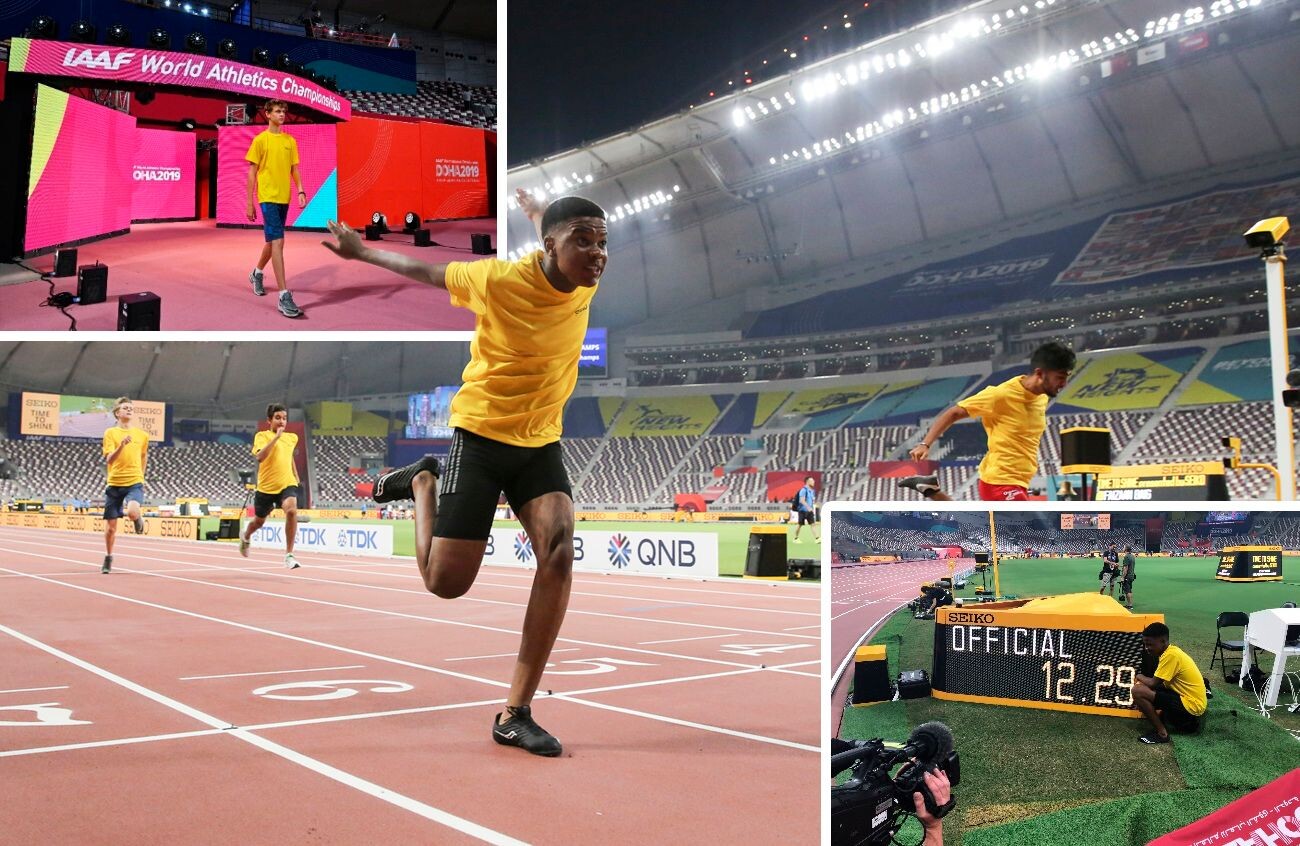
Time to Shine
The ‘Time to Shine’ event is designed to promote track and field, and to foster the next generation of athletes. Young athletes aged between 12 and 18 will have an opportunity to race at the same venues and use the same equipment as athletes participating at the World Athletics Championships. Seiko is doing its small part to inspire the next generation by giving them a chance to compete on the same stage as the world's top athletes.
- Date: Wednesday 20 July, 12:00-13:30- Venue: Hayward Field (Eugene, Oregon)- Target audience: Young athletes aged between 12 and 18
(06/21/2022) ⚡AMPby World Athletics
World Athletics Championships Budapest23
Budapest is a true capital of sports, which is one of the reasons why the World Athletics Championships Budapest 2023 is in the right place here. Here are some of the most important world athletics events and venues where we have witnessed moments of sporting history. Throughout the 125-year history of Hungarian athletics, the country and Budapest have hosted numerous...
more...

